INTERVIEW
Dr Vaishali Tawde MD, Ideal Cures
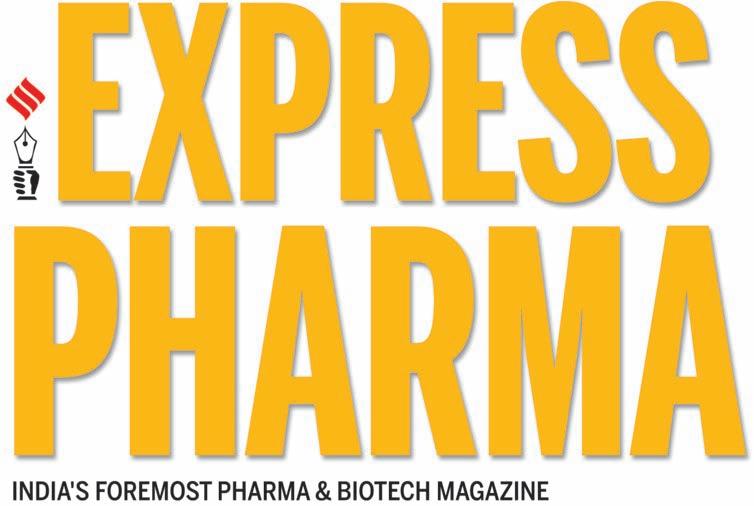
DECEMBER 2022,` 40

VOL.18 NO.1 PAGES 112 www.expresspharma.in
STRATEGY
There are some veryinnovative, cutting-edge ideas that Indian pharma leaders are adopting
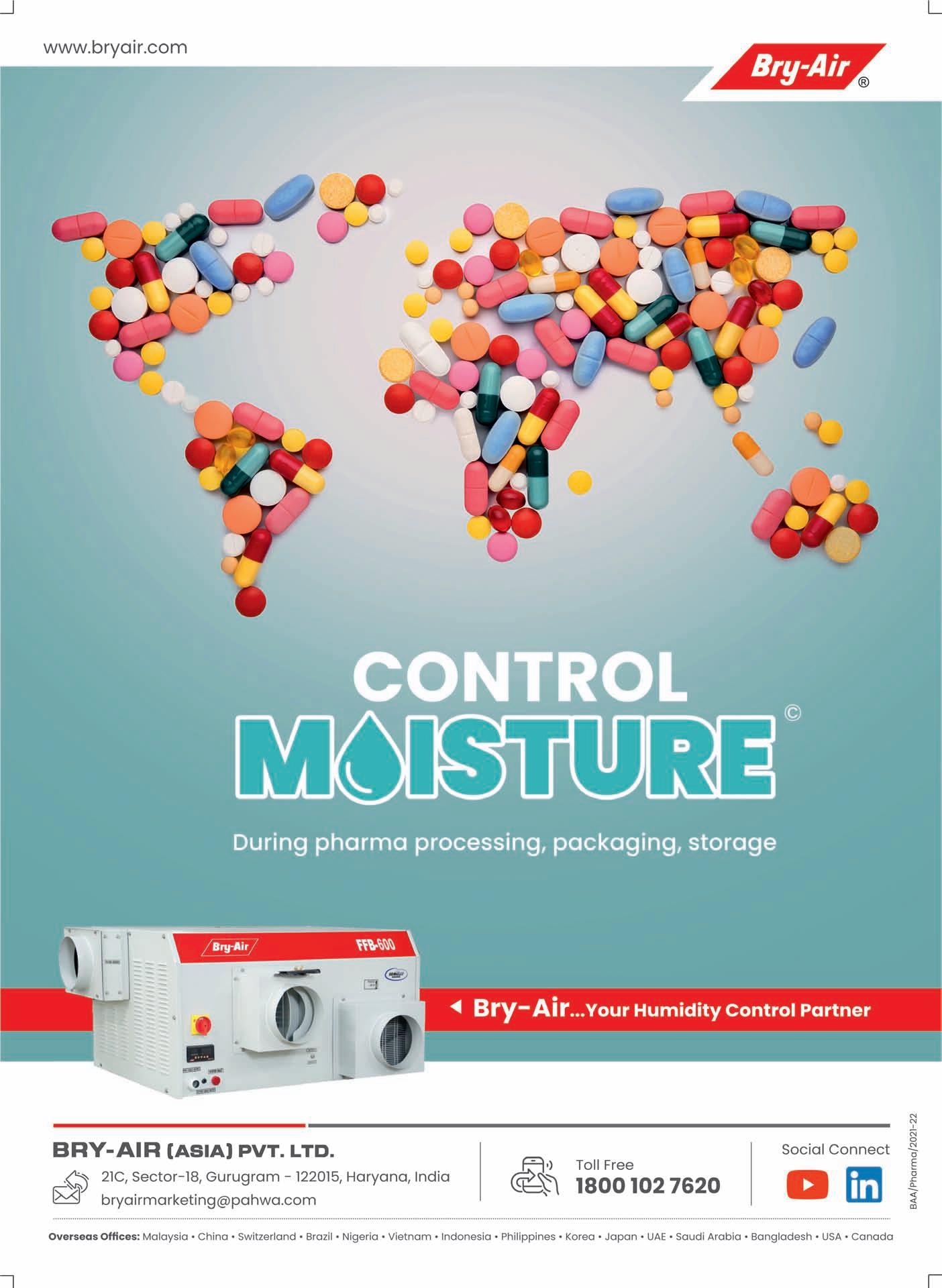























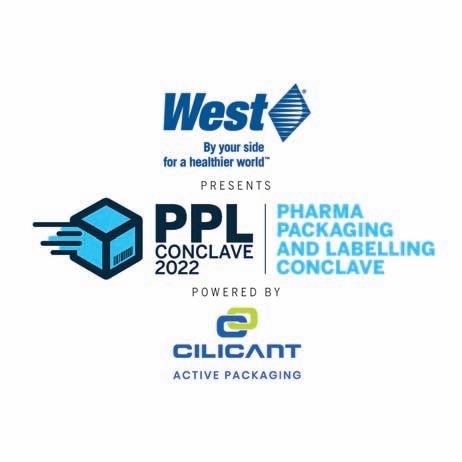

VOL.18 NO.1 PAGES 112
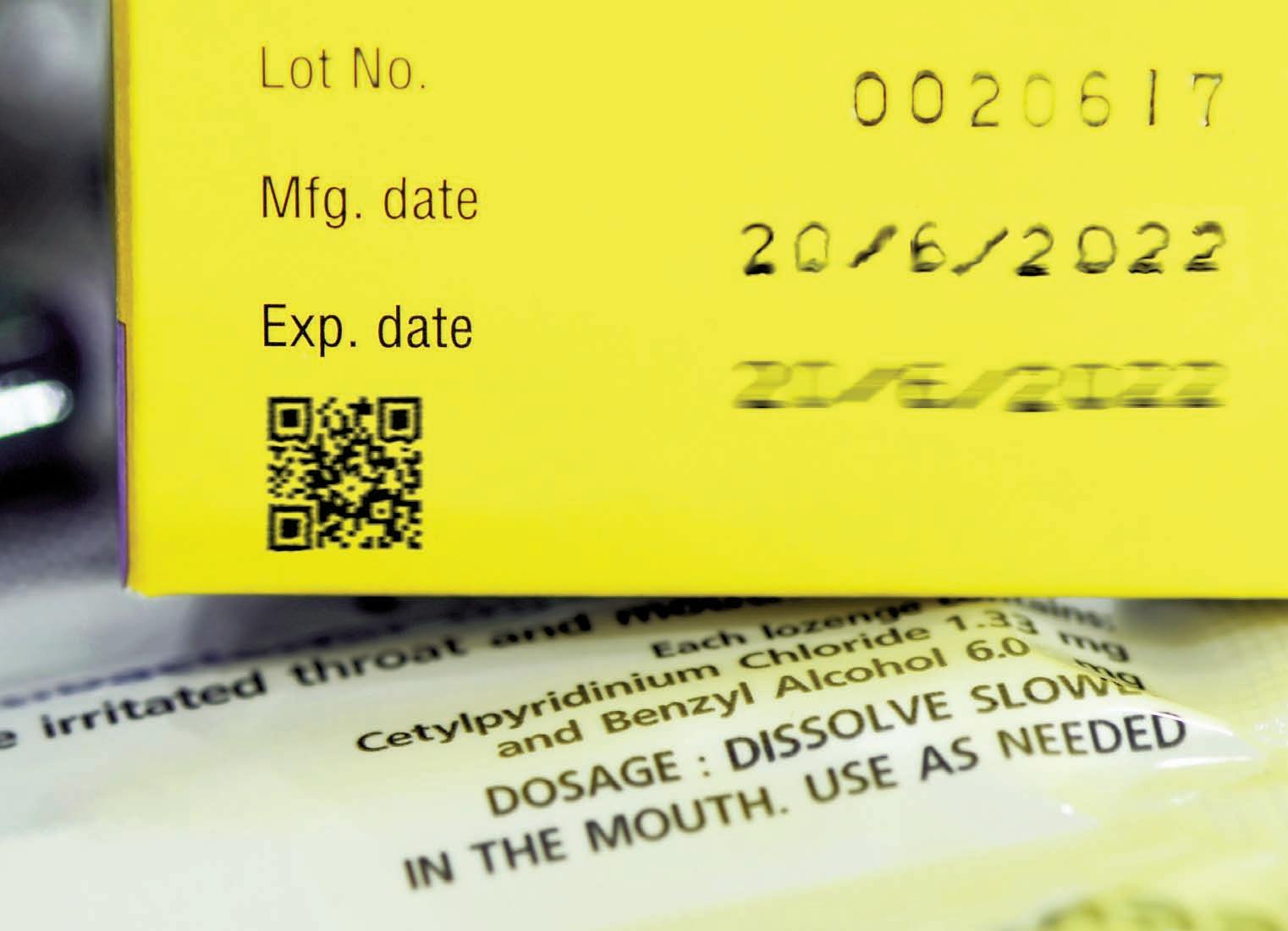


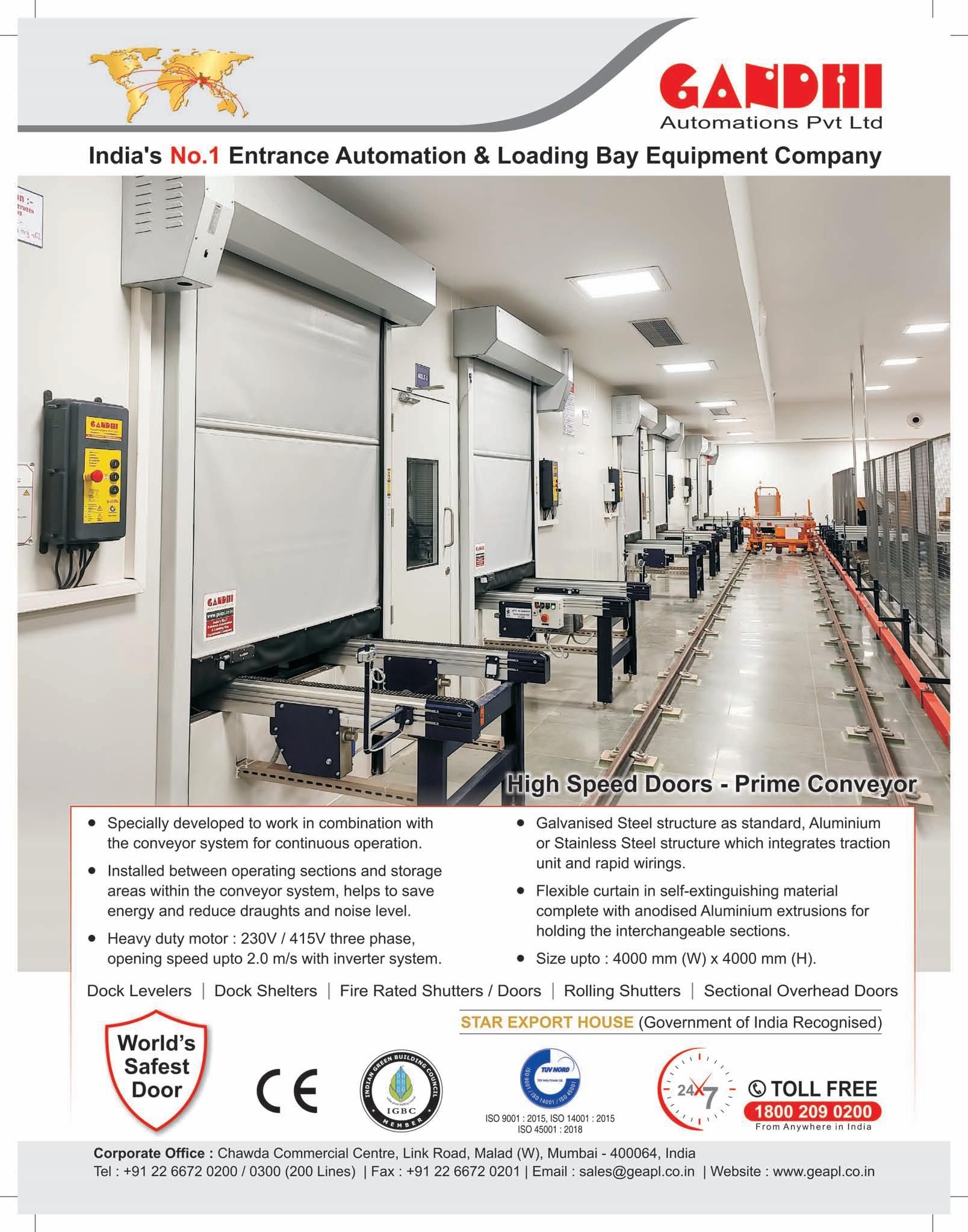


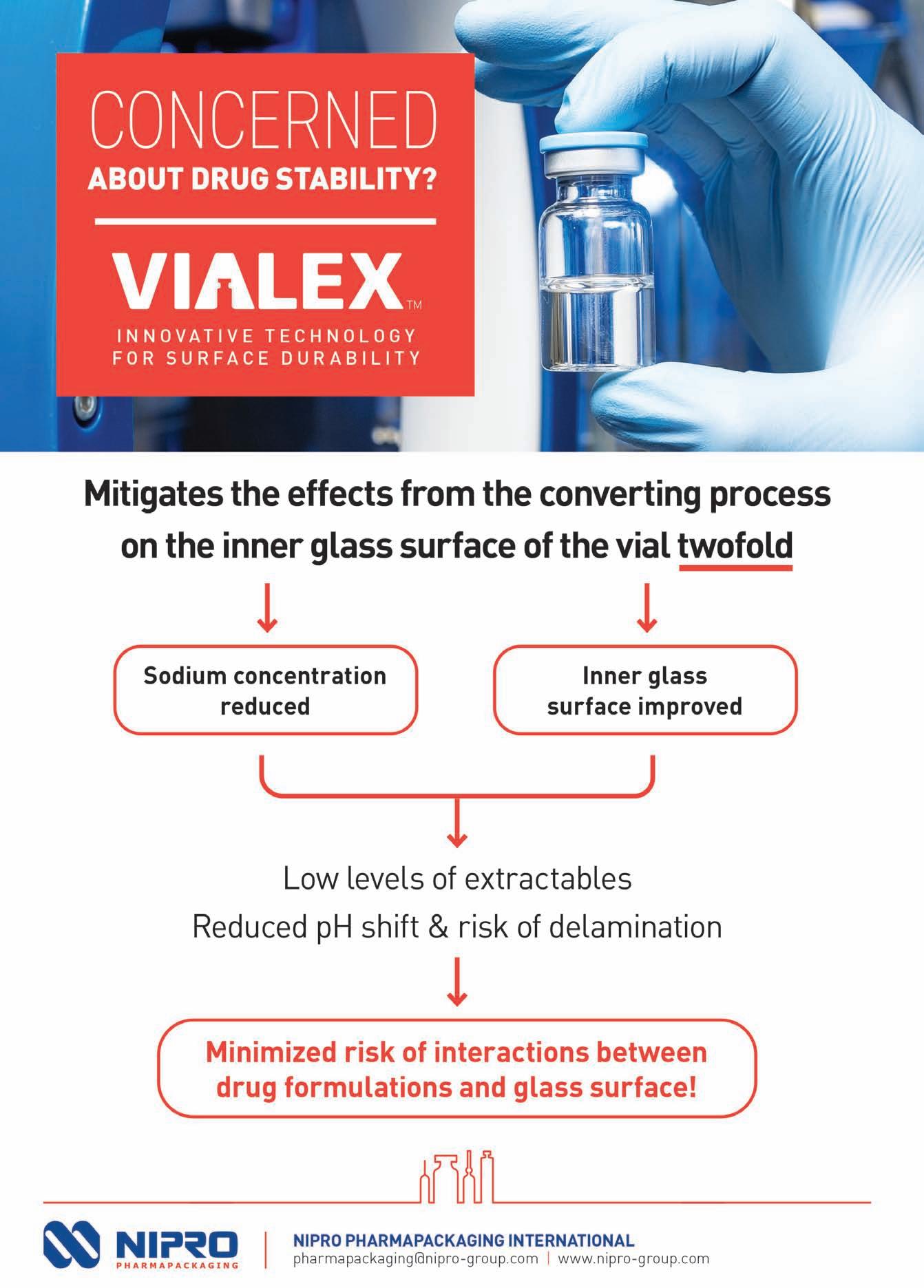
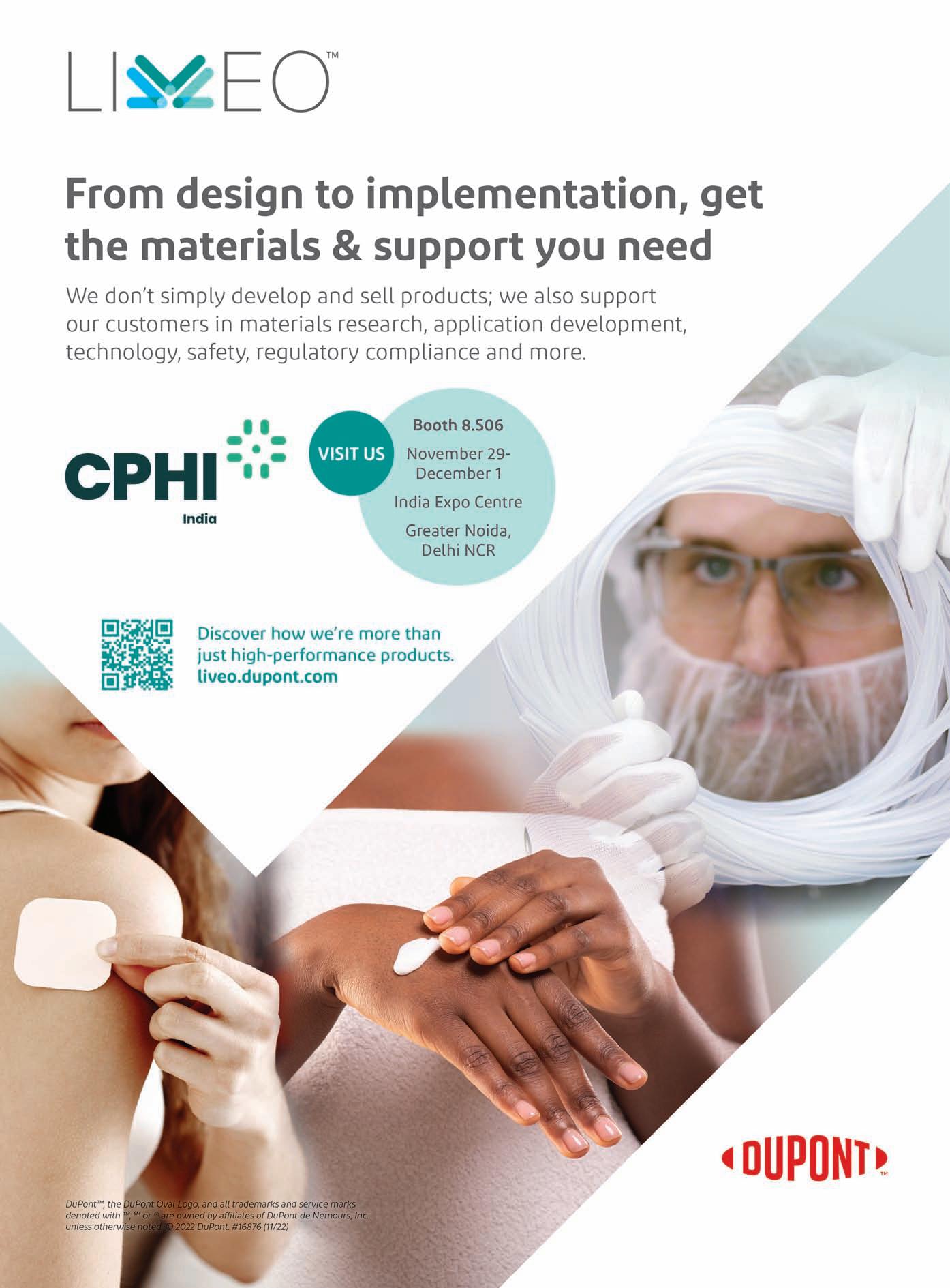


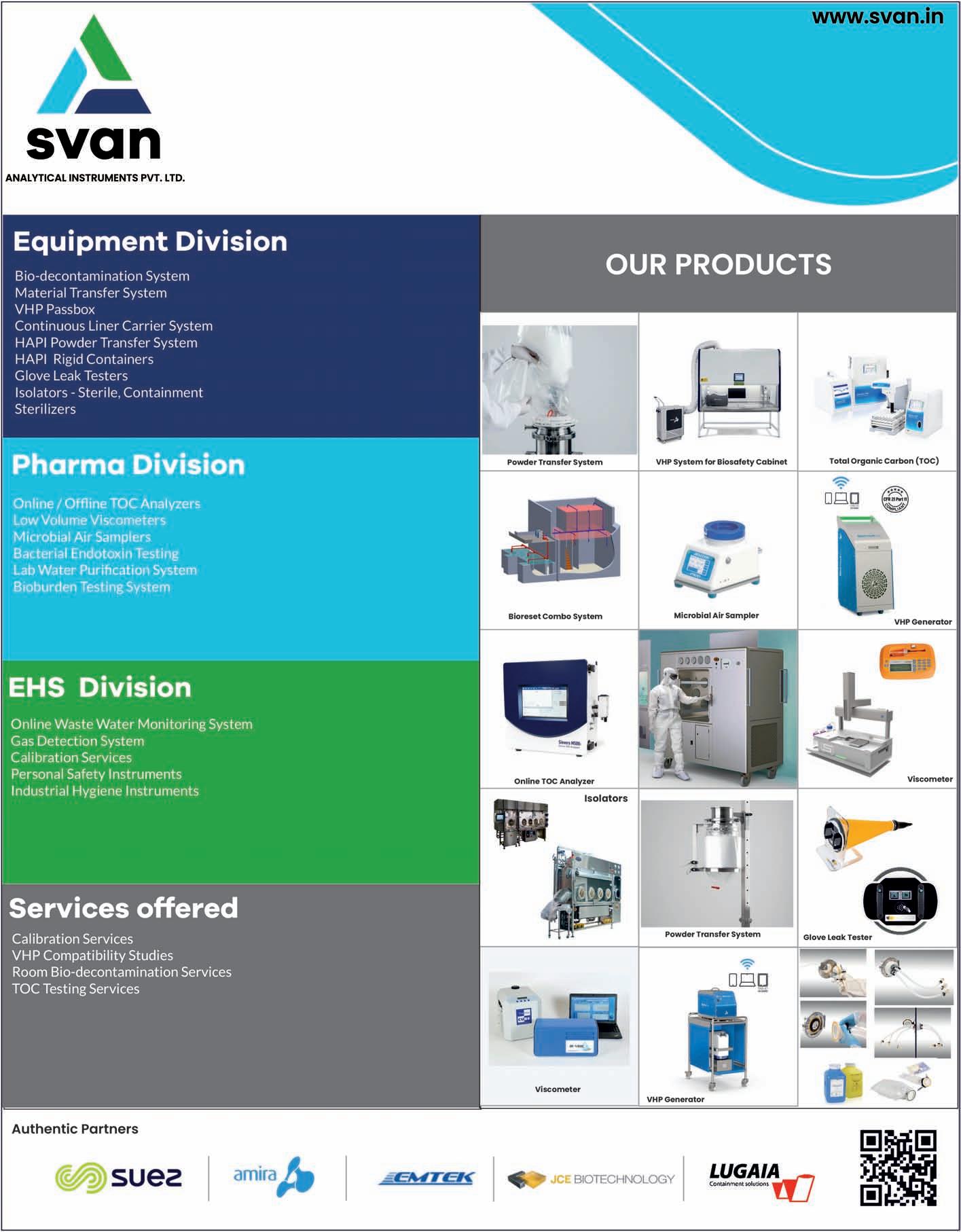
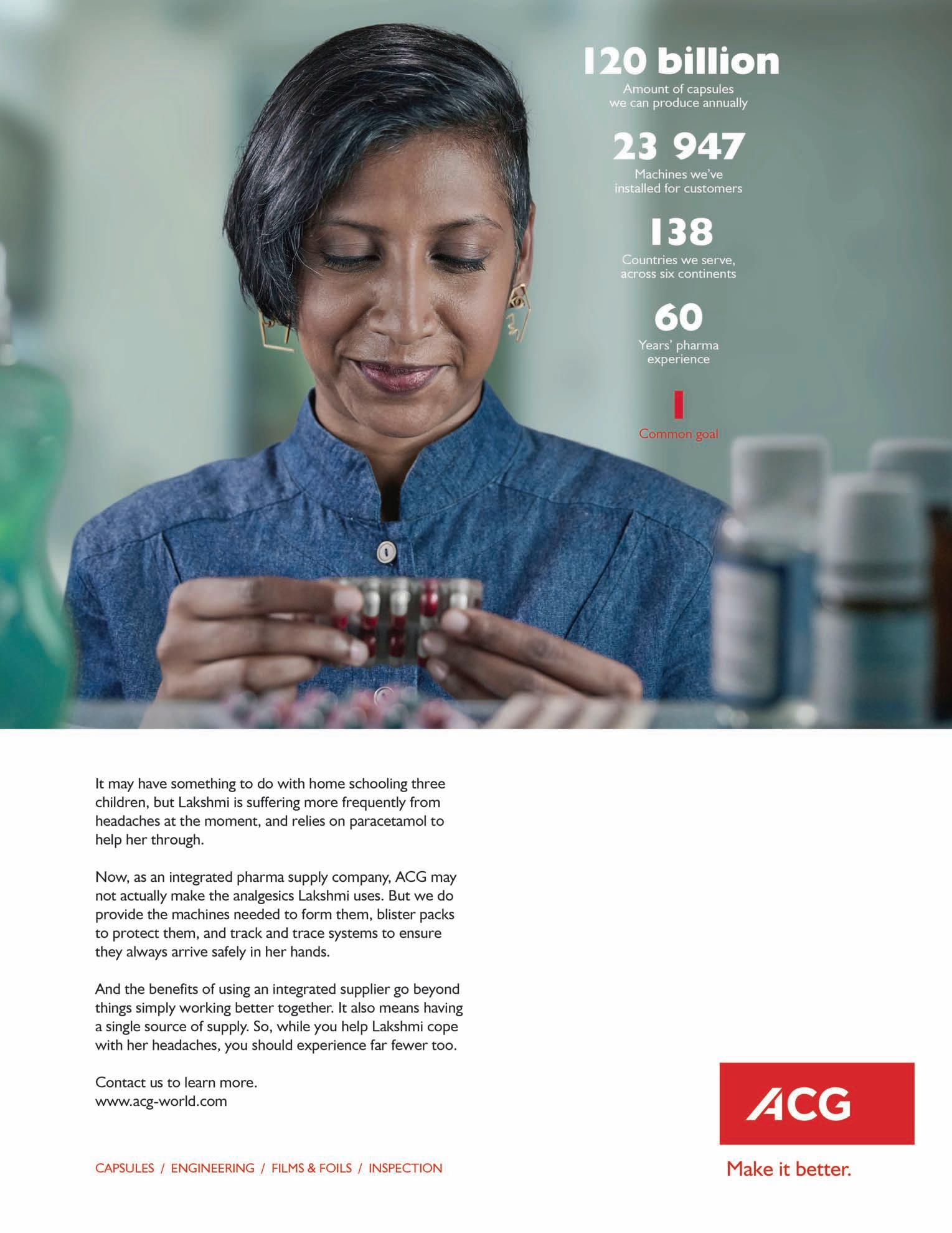

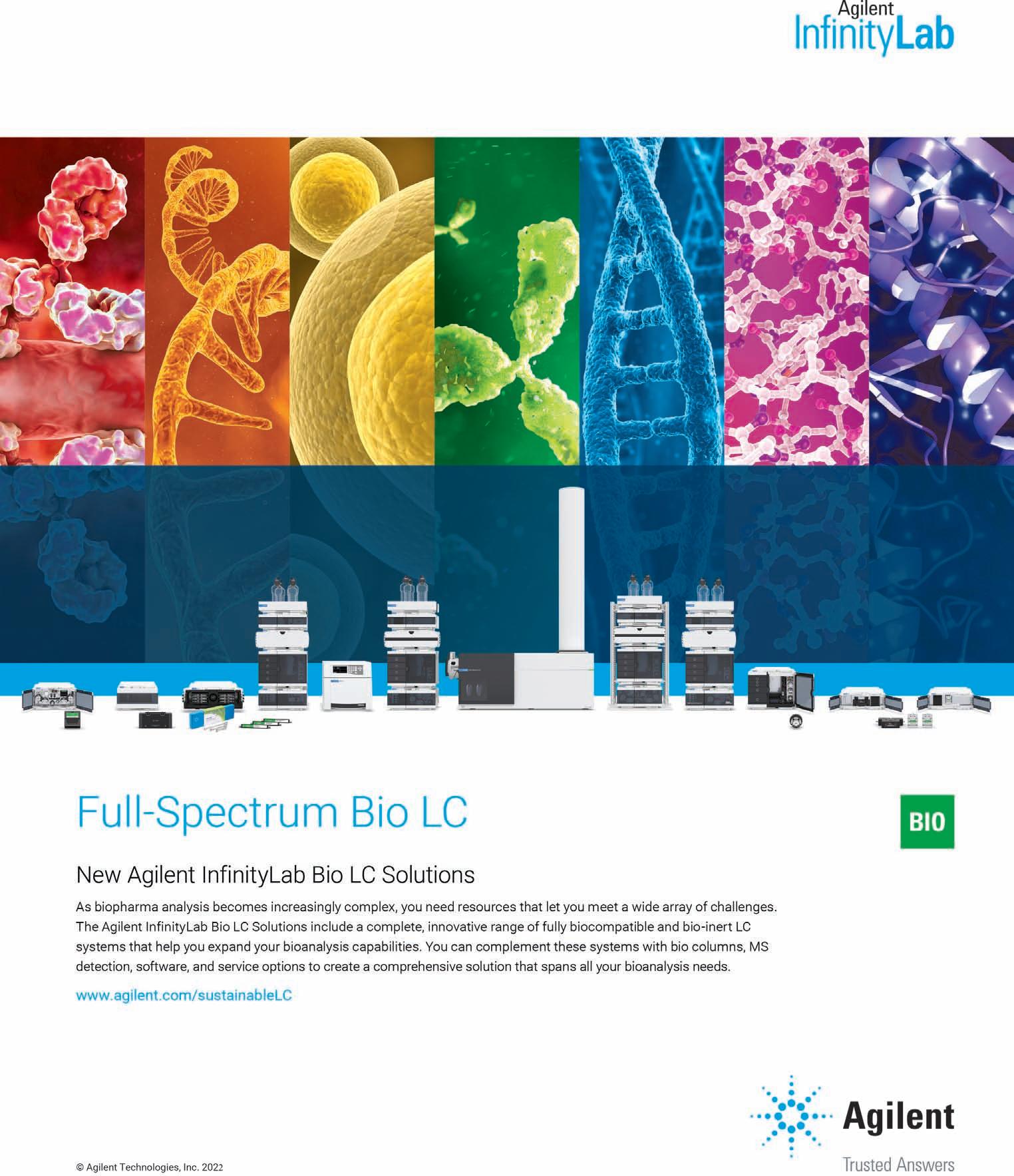

Chairman of the Board ViveckGoenka

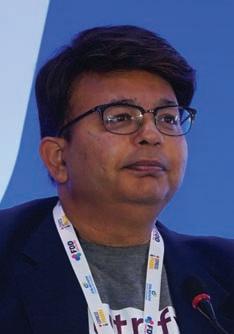


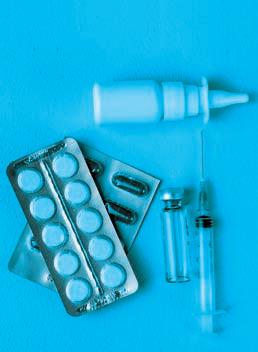
Sr.Vice President-BPD Neil Viegas

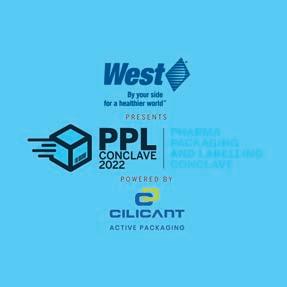



Asst.Vice President-BPD Harit Mohanty
Editor Viveka Roychowdhury*
CONTENTS December 2022 EXPRESS PHARMA 19
Editor:
* Responsible for selection of news
the
Reproduction in anymanner,electronic or otherwise,in
written permission is prohibited. P31:INTERVIEW Dr Vaishali Tawde MD Ideal Cures TECHNOLOGY LOGISTICS 38 INVENTORY MANAGEMENTIN PHARMA INDUSTRY PHARMAPULSE NUTRACEUTICALS 42 INDIA– THE EMERGING HUB OF NUTRACEUTICALS P61:INTERVIEW Dev Gupta, CEO Sanosil Biotech PPLCONCLAVE 2022 KEEPING PACE WITH PHARMA INNOVATION
BUREAUS Mumbai Lakshmipriya Nair,Kalyani Sharma Delhi Akanki Sharma DESIGN Art Director Pravin Temble Senior Designer Rekha Bisht Senior Artist Rakesh Sharma Digital Team Viraj Mehta (Head of Internet) Marketing Team Rajesh Bhatkal Ambuj Kumar Ashish Rampure Debnarayan Dutta Production Co-ordinator DhananjayNidre Scheduling & Coordination Pushkar Waralikar CIRCULATION Mohan Varadkar
Express Pharma® Regd.With RNI No.MAHENG/2005/21398.Postal Regd.No.MCS/164/2022 - 24.Printed and Published byVaidehi Thakar on behalf of The Indian Express (P) Limited and Printed at The Indian Express Press,Plot No.EL-208,TTC Industrial Area,Mahape,Navi Mumbai-400710 and Published at Mafatlal Centre,7th floor,Ramnath Goenka Marg,Nariman Point,Mumbai 400021.
Viveka Roychowdhury.* (Editorial & Administrative Offices: Mafatlal Centre,7th floor,Ramnath Goenka Marg,Nariman Point,Mumbai 400021)
under the PRB Act.Copyright © 2017.The Indian Express (P) Ltd.All rights reserved throughout
world.
whole or in part,without prior
Why a National Drugs Database is important
Authorities from The Gambia’s Medicines Control Agency have now seemingly back-tracked on their initial allegations linking Haryana-based Maiden Pharma’s cough syrup to the deaths of 70 children from acute kidney injury.
A Reuters report dated November 2 quotes Tijan Jallow of The Gambia's Medicines Control Agency, saying, “We haven't concluded yet it is the medicine that caused it. A good number of kids died without taking any medications." There are reports of children in Indonesia dying from similar kidney injuries, linked to the use of paracetamol syrups.
While we wait for more clarity and the final reports of the investigation, an office memorandum dated October 27 from the Drug Controller General of India, VG Somani, announced the setting up of a seven-member panel to prepare India’s ‘National Drugs Database'.
Explaining the rationale for such a move, Somani said that such a database is “crucial” for “not only empowering consumers but also improving the monitoring mechanism for quality of drugs in circulation across the country and uniform administration of the regulatory system”.
Over the next three months, the seven-member committee will “examine the existing database available with various authorities like States/UT Drug Control Department, various manufacturers, marketers, importers.”
The Committee is expected to give its recommendations and prepare a comprehensive National Drugs Database for drug formulations manufactured/ marketed in the country. It will provide detailed information on the drug, its dosage form, strength, and details of the manufacturer, marketer or importer of the drug, as per the office memo.
AK Pradhan, Joint Drugs Controller of India, will be the convener of the panel. Other members of the panel include Dr Hemant Koshia, Commissioner, Food and Drug Control Administration (FDCA), Gujarat; Dr Pooja Gupta from AIIMS, New Delhi; Dr Jerian Jose, scientist at the Indian Council of Medical Research, New Delhi, DR Gahane, Joint Commissioner of Food and Drug Administration (FDA), Maharashtra; BT Khanapure, State Drugs Controller, Karnataka, and Navneet Marwaha, State Drugs Controller, Himachal Pradesh.

Dr Koshia reveals that some states with major pharma hubs, like Gujarat and Maharashtra, have already developed their own databases independent of each other and the centre. Now, the task is to decide on the best template and merge these databases seamlessly.
Gujarat, for instance, uses an online drug licenses database, developed with NIC, since 2012-13. With information on all drug manufacturing licenses literally at his fingertips, Dr Koshia recounted how the database gave him an almost instant idea of the stocks of Hydroxychloroquine (HCQ), with both API and formulation makers, during the pandemic. He had a list of manufacturers from his state within minutes and was able to contact them within an hour, requesting them to stop exports till the country’s needs were met. He was ready with names of manufacturers within his state and their inventory levels when the authorities called him to give an idea of HCQ stocks within the state.
The plan, according to Dr Koshia, is first to catch the lowhanging fruit, i.e. link up the major pharma-producing states, like Gujarat, Maharashtra, Andhra Pradesh, Goa, Himachal Pradesh, Uttarakhand, etc as fast as possible to a national drugs database, co-developed by NIC and CDAC, which would cover almost 80-90 per cent of the country’s drug production. The other states will be added in due course of time, after adequate training on the software etc.
Forming a national drugs database is a very welcome announcement, and it is impossible not to view it as learning from The Gambia-Maiden Pharma case. One wonders why it wasn't attempted earlier, or if earlier attempts were not successful. However, better late than never.
Irrespective of whether the children in The Gambia and Indonesia died after consuming Maiden Pharma's products or not, it is important to trace out the probable reasons for these tragic deaths. If any of the products have higher than acceptable levels of diethylene glycol (DEG) and ethylene glycol, then this needs to be rectified.
The children in The Gambia could have died of 'underlying causes' or pre-existing health conditions. As the country's most recent official statement mentions, it's now coming to light that many children who died reportedly did not consume Maiden Pharma’s syrup, while others went on to survive despite consuming the product.
With the growing realisation among global regulators that the presence of novel nitrosamines is more widely spread than previous estimates, regulators will have to reconfirm what daily levels of DEG are acceptable. This is an evolving problem and it could take time to understand all the technical aspects.
Regulators can only remind the industry of existing guidelines designed to detect such impurities. For example, an October 7 letter from Dr Rajiv Singh Raghuvanshi, Secretarycum-Scientific Director, IPC, to the DCGI pointed out that the commission has developed 1000 Indian Pharmacopoeia Reference Standards (IPRS) and impurity standards for the quality testing of drugs. Somani urged pharma manufacturers to use the IPRS to ensure their manufacturing facilities maintained the quality of drugs.
The question remains, what are the plans to enforce such regulations more stringently? It is 36 years since glycerine contaminated with DEG was linked to 16 deaths in Mumbai’s JJ Hospital. The case continues, with the accused yet to be brought to book. The case was the first time DEG was linked to deaths and for a while, impurity testing took centre stage.
Clearly, we let down our guard too soon. Today, even more is at stake. Hopefully, initiatives like the National Drugs Database incorporate the lessons learnt. Equally, if not, more importantly, manufacturers need to man up and stop cutting corners hoping that the law will never catch up.
VIVEKA ROYCHOWDHURY, Editor viveka.r@expressindia.com viveka.roy3@gmail.com
EXPRESS PHARMA December 2022 20
EDITOR’S NOTE
The question remains,what are the plans to enforce such regulations more stringently?
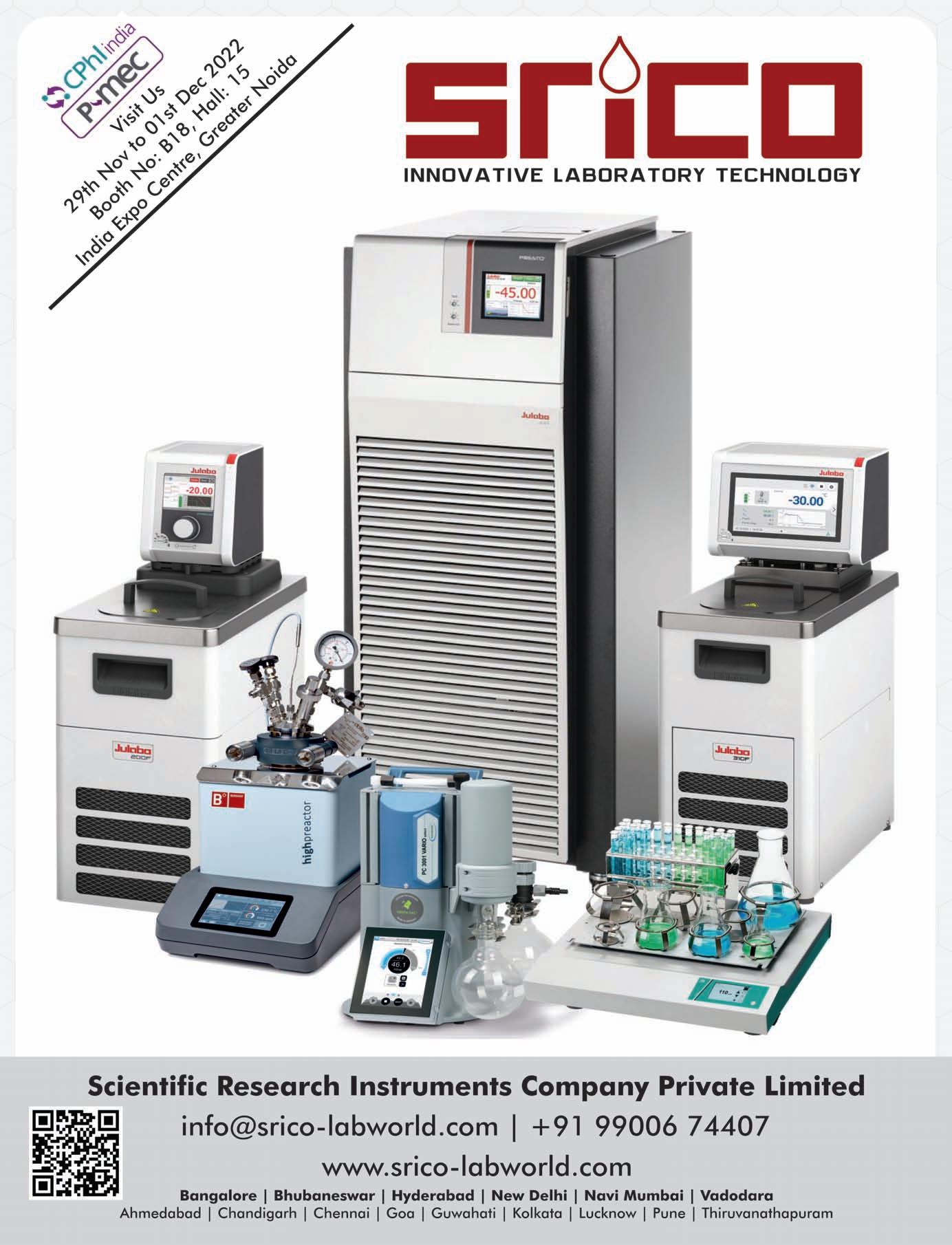
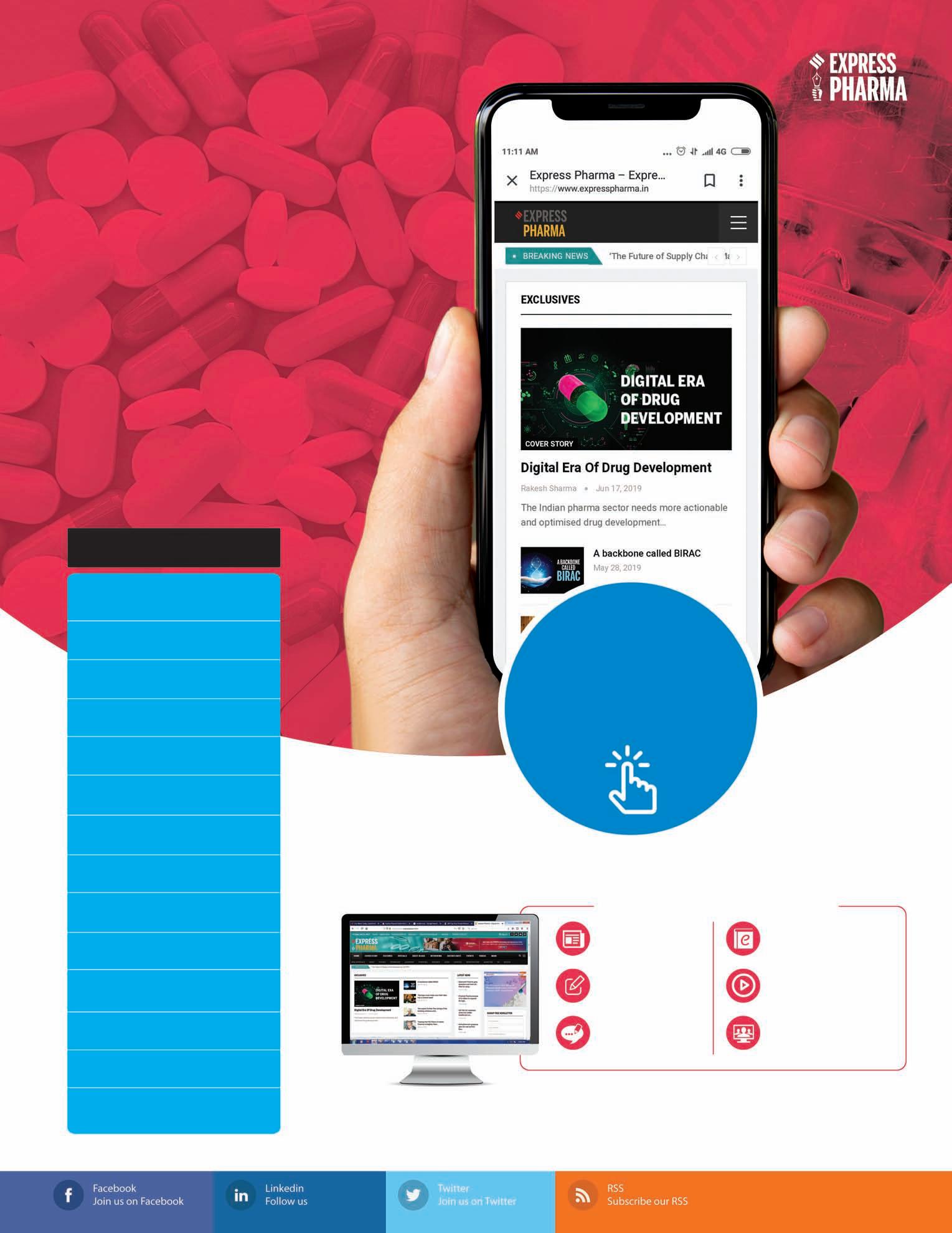










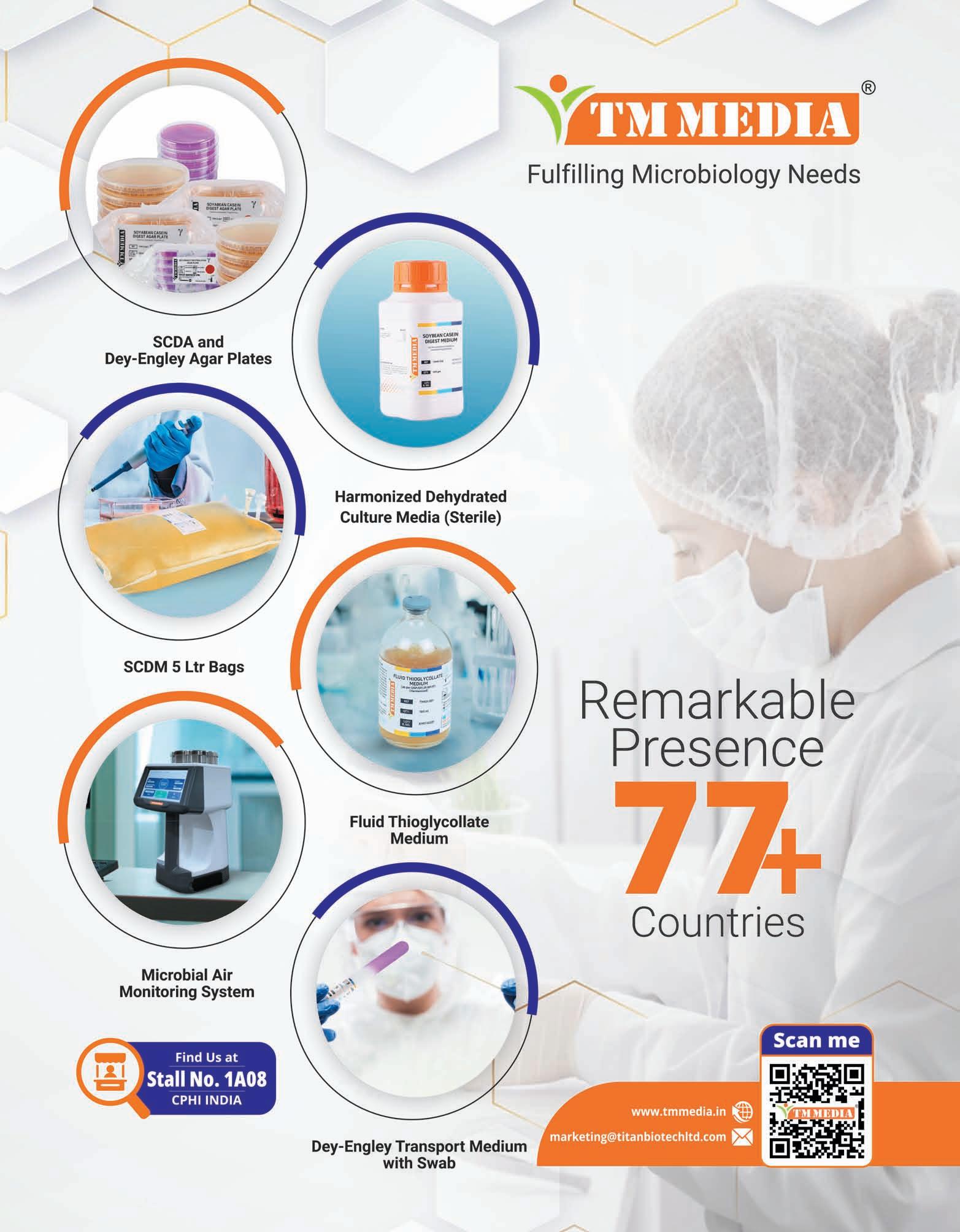
STRATEGY
There are some veryinnovative, cutting-edge ideas that Indian pharma leaders are adopting
Rieger,Senior Director,Healthcare Industry Group Alvarez & Marsal,and
Managing Director,Alvarez & Marsal India,explain
that while lifesciences companies in India are at various stages of their digital transformation journey,they are also at an interesting inflection point.As they start to invest in and build their specialty play for global markets,they will also have to evolve to engage with disruptive trends in institutional channels like,hospitals and omni-channel pharmacies.Edited excerpts of the conversation
Is there really a lag between pharma companies in India and what you see in the US, in terms of the scale and the extent of digital adoption?
Ganguli: This answer must be really thought through from the context of who is it that you're answering for? Are we really talking about some of the leading Indian pharma companies? Or are we also referring to the midmarket and the followers?
The reason I'm making that point is because these different pharma companies in India, as you would appreciate, have different levels of data and digital maturity. So, if you were to go to a top five Indian pharma company, the extent of digital interventions that we will see at their end in areas related to go-to-market, commercial excellence, doctor engagement or stockist adoption, would not necessarily be at a significant lag versus what you've seen in some of the developed countries.
Having said that, if you were to look at some of the middling Indian players, who are outside of the top 10
Rieger,Senior Director,Healthcare IndustryGroup Alvarez& Marsal
Indian pharma companies, they're probably still early in their digital journeys. So, that's a qualifier, I don't think we should do a broad brush of looking at Indian pharma as a whole vis a vis what you see in the US.
Are there specific reasons for this lag?
Ganguli: The US pharma industry is more mature, and it has been there longer, versus what you see in India. Also, their supply chains are far more consolidated and organised. If you look at the US pharma industry, you'd essentially see the top three or four GPOs and the top three or four distribution companies accounting for almost 85-90 per cent of the overall industry. So, in an industry structure like that, your data for primary and secondary sale is far more organised.
Similarly, Rieger, who has been working in the US pharma industry for over 25 years, has never come across a situation where access to either secondary or tertiary sales data has ever been a constraint for him to be able to do the right level of

analysis and derive insights.
On the other hand, what's happened historically in India is that the entire distribution space is phenomenally fragmented. You're talking about almost 80,000-85,000 stockists and distributors across the country who are buying from these pharma companies and then pushing stocks to a whole variety of both organised as well as unorganised chemists and drug stores as well as to hospitals and clinics. These stockists, in this entire distribution universe, have very basic systems or no system at all. Wherever they do have basic accounting management systems, they will be managing the sets of data with these solutions they use.
So, in a scenario like that, any large Indian company will typically have to interface with at least five-to-six stockist systems and work through this significant disparity of the systems that these stockists work with. So, historically, because of that reason, there have been some challenges with respect to accessing secondary sales data.
EXPRESS PHARMA December 2022 26
Rich
Kaustav Ganguli,
to Viveka Roychowdhury
INTERVIEW
Rich
Tertiary sales data has been opaque and inaccessible for the largest part as far as the IPM companies are concerned. So, when you're obviously selling to the stockists, the primary sales data is very well visible to you. These companies have been working through a whole lot of initiatives around stockist integration, trying to basically encourage them to move on to a common minimum platform for them to get visibility of at least secondary and tertiary sales data. The movement is happening in the right direction but it's still a bit of a work in progress as far as stockist integration and availability of secondary and tertiary sales data is concerned.
As far as salesforce effectiveness and e-detailing solutions are concerned, most leading Indian companies have been able to cover a fair bit of distance. In terms of access to the entire doctor network and offering solutions around clinic management, there are quite a few pharma companies who have been able to push their clinic management solutions to a large subset of the healthcare practitioners that they cover in the country.
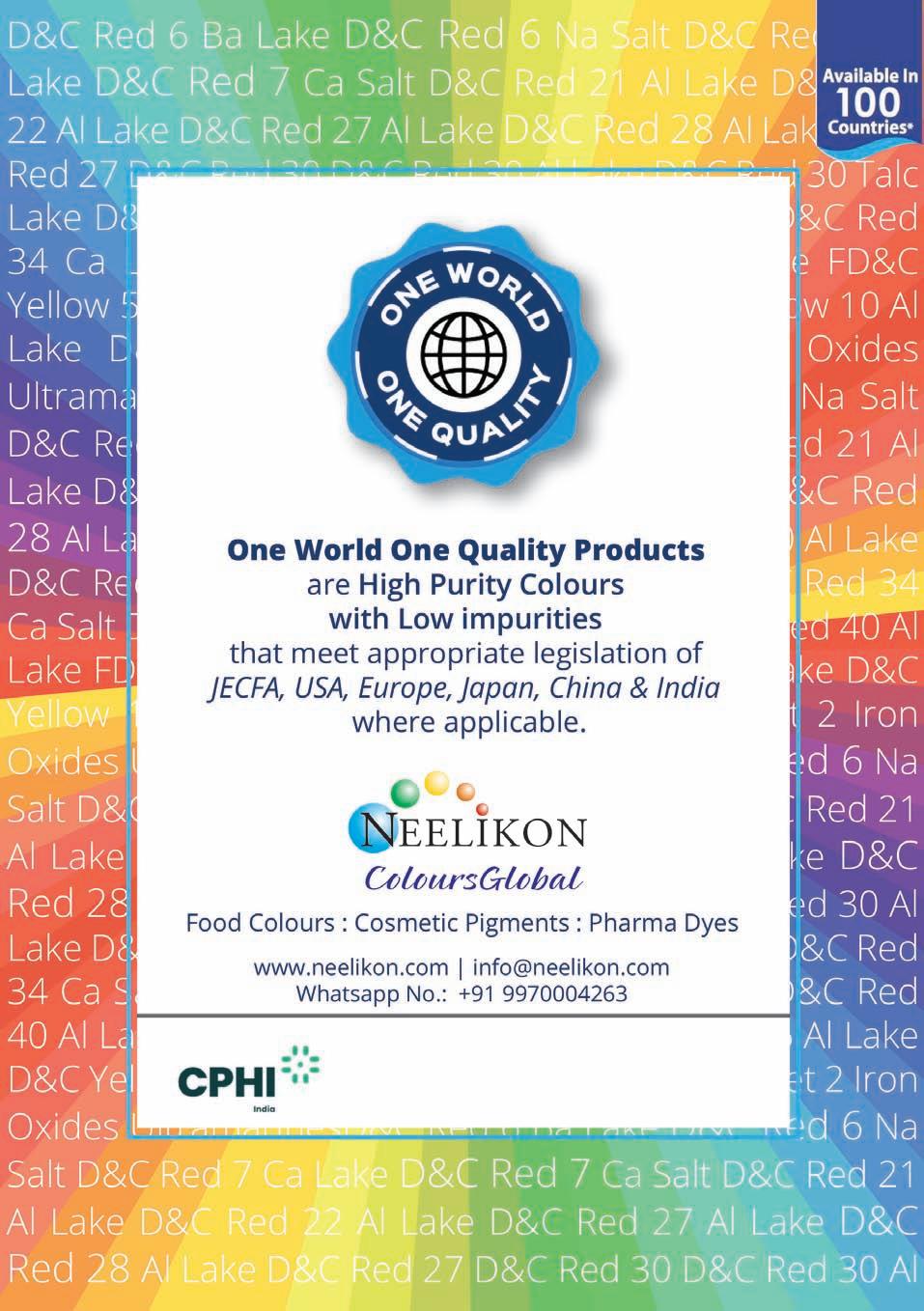
Omni-channel marketing, for example, is a cutting-edge idea in terms of how you engage with these doctors and healthcare practitioners using a variety of content and multiplicity of digital and non-digital channels. That's a cutting-edge idea, I don't think you'll find too many examples of that, even from the developed markets. That's something that is already work-in-progress and getting implemented across some of these leading Indian pharma companies.
These are just some examples, but the fact of the matter is that there are some very innovative, cutting-edge ideas that Indian pharma leaders are adopting. They are also trying to work through some structural issues in the industry in terms of how to enable
access to secondary and tertiary sales data to instruct their go to market and sales.
imperatives?
Ganguli: From my perspective, there are different pieces to the business of Indian pharma. For most of these players, there is a certain part of the business which is focussed on domestic formulations. That
part of the business continues to be quite robust in terms of overall growth, especially post-pandemic. Most of these companies are back on to a growth trajectory, which is comparable to what they were experiencing, pre-
pandemic, if not actually slightly better.
The second part is that for most of these companies, their generic business in regulated markets, especially in the US, has taken a significant hit. Many of them have continued to maintain
What are the key opportunities and challenges which India's pharma industry is facing and what are the capability
December 2022 EXPRESS PHARMA 27
STRATEGY
volume shares, but because of the pricing erosion, I think there have been significant downward pressure on realisations as well as on margins.
I think most of these companies are doing a mix of APIs for innovator companies and then formulations in domestic and global markets and then generic formulations obviously, in the regulated markets.
There are different sets of challenges which are playing out for these three different segments. For Indian pharma, the domestic market opportunity continues to be quite robust, many of them will continue to drive specialisation or growth through investments in specific therapeutic areas, and some of them will also start pivoting to consumer health because that offers an interesting high growth opportunity across multiple channels in India.
As far as their global play is concerned, the key point to note here is that some of these companies, started out 20-25 years back being API companies, then they forward integrated and became formulation companies and then a natural follow on for them was to be able to develop sales and onthe-ground presence in the US market.
We feel they are at an
inflection point, especially with this reality of the generics business in regulated markets stagnating or degrowing. Many of them are now inflecting towards a more specialty pharma play.
Specialty pharma, as a
term, itself is loosely defined and understood differently by different companies. There are companies who think that growing a complex generic injectable business globally is a specialty pharma play, there are some who are betting on biosimilars but
very interestingly, some are betting on opportunities related to absolutely cutting edge of pharma science, which is ideas around cell and gene therapy, or ADCs, or rare diseases platforms.
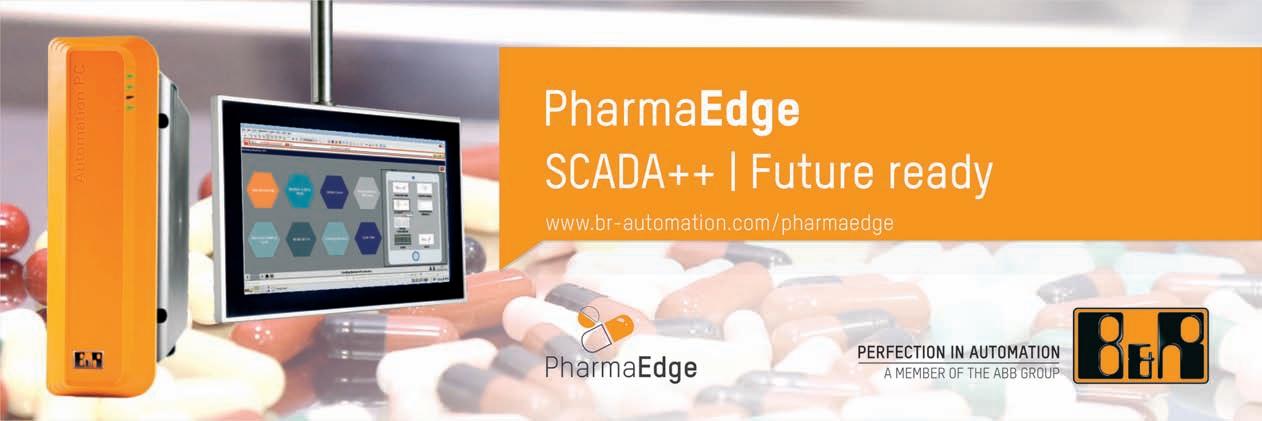
So, interestingly, and Rieger will probably talk about this, when he came to India, he came in with a set of key ideas of technologies, which are likely to inflect specialty pharma, globally. And we were pleasantly surprised to see that many of these Indian companies are now starting to think about, not only starting to think about, but investing in very critical capabilities in building out their specialty play in the global markets.
Rieger: This whole concept of forward integrating going from API to finished drug formulations to the commercial business, at least in the US, is being oriented around generic products and often oral tablets, sometimes also generic injectables, but a heavier concentration in oral tablets.
One phenomenon, in recent years, has been more rapid price erosion. So, when the India-based companies, as a collective, came into the marketplace, they were in a good position to be able to capitalise on that.
However, as the market has become more competitive, it's been a catalyst for them to think
about these alternatives - it could be generic injectables, for instance, that's a very natural extension. It's more of an extension of what they're doing today because it is still generic molecules, but in a sort of a different format or delivery method as we discuss it.
But then, as Ganguli was noting, I think there's been recognition on the part of the India-based companies that they have the infrastructure now in place to be able to make investments in some of these other areas that will make them a broader specialty pharma company in the future, as well as pulling through proprietary products to combine with their generic portfolios.
Ganguli: Specific to the domestic market, the themes that are really emerging are not only the TA or the subspecialty specialisation that we talked about, but also the fact that institutional channels like, hospitals and omni-channel pharmacies present a significant headroom for these players to penetrate.

Historically, most of these companies would have been doing either single digit to nearly double digits of contribution from hospitals and institutional channels, in percentage contribution terms. So, it was a neglected channel.
Now, pretty much every
EXPRESS PHARMA December 2022 28
KaustavGanguli,Managing Director,Alvarez& Marsal India
STRATEGY
large-to-medium-sized Indian pharma company is waking up to the fact that they need to take a thought through organised approach towards how they can penetrate the hospital segment and the e-pharmacy or the omni-channel pharmacy segments far better.
There are some disruptive trends that are being seen in both the hospital space as well as in the e-pharmacy space, with both spaces getting rapidly consolidated. Specially, post-Delta, there has been a massive shift of consumers from the midmarket or small hospital segment into the large hospitals.
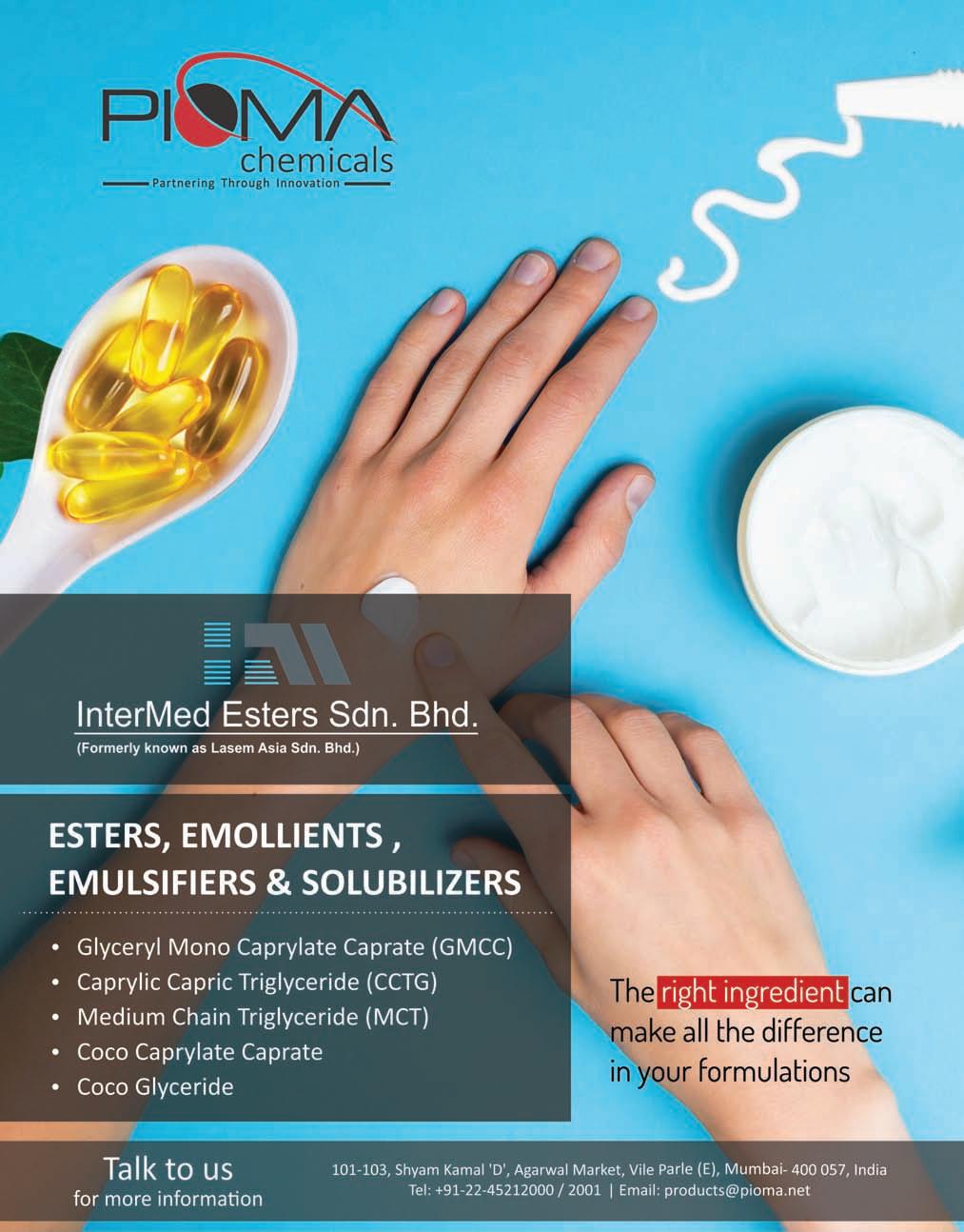
There is also significant M&A trend playing out in both spaces. Given those factors as a backdrop, our sense is that the way pharma companies engage with both channels, which is, large and mid-size hospitals, as well as with omni-channel pharmacies, it will significantly evolve, rather, will need to significantly evolve in the next few years.
Do you see pharma companies playing the role of venture capital players, especially in areas like stem cell, cell and gene therapy, etc.? And where do you think this is going?
Ganguli: As we discussed, one thematic trend is that these large companies are moving towards subspeciality and using investments to strengthen it. So, consider these investments, for example in stem cell therapy, cell and gene therapy, ADCs, precision medicine, or translational research, especially in the backdrop of the challenges that they are facing in the generic business that they have been doing in the US so far. This is the larger part of the business and is also the cash cow. But these companies are clearly realising that we need to be able to take some money out and start investing in some of these new-age innovative
ideas. Because, if some of those were to really click right, you either acquire those companies or have a PE-VC kind of a platform to support those companies.
But, if some of those ideas were to really click, for example, you invest in a rare
disease platform, and it really kicks off in the developed markets on its own, and we've known of cases, which, on their own, have added billion dollars to revenue just by the virtue of a single investment into rare diseases.
So, clearly, they are thinking about placing some of those bets which will make the company acquire a more specialised portfolio at the cutting edge of science versus the generics play that they have been doing so far.
The second thing related to
the channel disruptions, is that the hospital market has seen a significant inflection, especially post-pandemic and post the second wave of COVID-19, which was the Delta wave. Post-Delta, at least a section of consumers started moving away from going only
December 2022 EXPRESS PHARMA 29
STRATEGY
to mid-market or small hospitals, to going to more organised corporate chains. This was fuelled (firstly) by the fact that these mid-market hospitals or small hospitals themselves struggled through different phases of the pandemic, and, secondly, was clearly driven by fear. Many of these consumers took on greater healthcare insurance coverage, (and) where they had no insurance coverage, they started taking insurance coverage.
Many of these consumers now have also started copaying - paying out of their pocket alongside the insurance support to cover for more premium healthcare services that they're starting to adopt in some of these corporate chains. Now, with that, the overall healthcare services space has started growing at about 15-16 per cent, versus the earlier growth that they were experiencing prepandemic. Within that overall space, the corporate plays are growing at a decidedly faster pace, compared to the mid-market and the small hospitals.
To cut a long story short, from a pharma company perspective, there are these two large buckets - one is the
top 15, 20, 30 top corporate hospital chains in the country which make up 10-15 per cent of the overall market. Our sense is that they are going to be targetted basis a relationship-based approach.
The second more interesting play that is likely to evolve is engaging with the mid-market players. They continue to be almost 85-90 per cent of the overall industry, and, therefore, offer a significant opportunity for better penetration to some of these large pharma companies. To summarise, models which are a combination of a consolidated distribution platform with a technology layer like a marketplace platform riding on top of it, a mix of that is likely to play out in the hospital space related to the mid-market hospitals.
Do you see pharma companies getting into the financing space?
Ganguli: If I were to reflect upon some of the discussions, or engagements that we've had with large pharma companies, we've obviously been discussing a lot of these healthcare adjacent things that are relatable to them, like, let's say, entry into
diagnostics or services, etc. In that overall ecosystem, I don't think they have heard too many positives to the question on whether they want to get into the financing or healthcare insurance space yet. I think that whole health insurance play is obviously far more synergistic to somebody who is playing in the hospital services space.
Having said that, we have noticed interest in two areas - one is getting into diagnostics, because it is a natural add on product that doctors can prescribe, over and above what they are already prescribing by way of medicines. More importantly, diagnostics offers data and insights to these pharma companies to better instruct their pharma products' goto-market.
But the more important reason why people are also getting into this is because it circumvents, to a certain extent, the whole problem around data access. That's because historically, there is a limited, secondary and tertiary sales data access, there are different ways of working around that challenge. One of them is diagnostics. So, if your diagnostics business
basically scales over the next three to five years, you can have consumer-specific or micro-market-specific data on your digital platform, which, in turn, can then be analysed to instruct your goto-market and your product strategy on the pharma side. That whole data itself becomes very interesting, from an overall business model point of view. And that is something that they're considering.
Healthcare services are something that they're evaluating more from the point of view of this becoming a bedrock for clinical research/ clinical trials. But yeah, I think, to your point, are they looking to finance or become a financier, there are not too many examples in India.
In the developed nations, you do come across interesting models such as amortisation models for payment for very costly specialty pharma drugs, if something which costs you less than $2.2 million per treatment, the payout is basically broken up over, let's say four or five years, and linked to the kind of actual patient outcomes. That is more like a parallel example, I don't think you can really
call that a financing intervention.
Rieger: There are some models out there which are different sorts of R&D models, where this is done in the context of partnering for different drugs that companies sometimes use to deflate the costs of the drug development or share the costs. There are different methods for the pharma companies to be able to basically not reimburse, but cover those costs at a later point in time. This can be done through milestone payments, royalty payments, etc. but that is not a direct form of financing, rather an indirect form of financing.
There are some other emerging models and some of the more expensive nextgeneration therapies may have a very high price tag. The payer or insurance company, at least in the US, doesn't necessarily reimburse the entire cost in the first year; but it is paid over a period of time, tied to outcomes or a word that's used in the industryinteroperability of outcomes over a period of time.
viveka.r@expressindia.com viveka.roy3@gmail.com
❒
Express Pharma accepts editorial material for regular columns and from pre-approved contributors / columnists.
❒
Express Pharma has a strict non-tolerance policy of plagiarism and will blacklist all authors found to have used/refered to previously published material in any form,without giving due credit in the industryaccepted format.All authors have to declare that the article/column is an original piece of work and if not, they will bear the onus of taking permission for re-publishing in Express Pharma.
❒ Express Pharma's prime audience is senior management and pharma professionals in the industry.Editorial material addressing this audience would be given preference.
❒ The articles should cover technology and policy trends and business related discussions.
❒ Articles for columns should talk about concepts or trends without being too company or product specific.
❒ We welcome information on new products and services introduced by your organisation for our various sections: Pharma Ally (News,Products,Value Add),Pharma Packaging and Pharma Technology Review sections.Related photographs and brochures must accompany the information.
❒ Besides the regular columns,each issue will have a special focus on a specific topic of relevance to the Indian market.
❒ In e-mail communications,avoid large document attachments (above 1MB) as far as possible.
❒ Articles may be edited for brevity,style,and relevance.
❒ Do specify name,designation,company name, department and e-mail address for feedback,in the article.
❒ We encourage authors to send their photograph. Preferably in colour,postcard size and with a good contrast.
Article length for regular columns: Between 12001500 words.These should be accompanied by diagrams,illustrations,tables and photographs, wherever relevant.
❒
Email your contribution to: The Editor, Express Pharma, Business Publications Division,
The Indian Express (P) Ltd, Mafatlal Centre,7th floor, Ramnath Goenka Marg, Nariman Point,Mumbai 400021 viveka.r@expressindia.com viveka.roy3@gmail.com

EXPRESS PHARMA December 2022 30
CONTRIBUTOR’S CHECKLIST
TECHNOLOGY
INTERVIEW
We want Ideal Cures to become the global generic ready-mixhouse of the world
What is the current strategy of Ideal Cures to support lifescience business in India and globally?
The Indian lifescience industry has found a global standing in the pharma industry. Low manufacturing costs, skilled workforce and global market knowledge enabled India to become the world’s third-largest manufacturer of pharma products. With growing demands for quality pharmaceuticals, Ideal Cures is taking steps to support the lifescience industry with the necessary infrastructure for developing and manufacturing a wide variety of innovative ready-mix filmcoating products that support pharma companies to improve global health at a faster pace. Ideal Cures continues to be part of this growth and works closely with pharma companies. The basic advantages of Ideal Cures include a fast-growing pharma market, deep

December 2022 EXPRESS PHARMA 31
Dr Vaishali Tawde,MD,Ideal Cures,gives details to ExpressPharma on Ideal Cures' innovations in coating technology and her strategic objectives for the company for the next three years
TECHNOLOGY
technical capabilities, rich scientific acumen, four manufacturing plants and well-developed R&D facility, all of which help us to emerge as a successful partner for the pharma industry. Ideal Cures is well-positioned with these capabilities and expertise to be a key solutions provider for pharma customers, globally.




Ideal Cures is now a twodecade old company, which provides innovative products and technical support to our customers in healthcare as we continue to scale up our manufacturing capacity and bring in new products to meet the requirements, and to support lifesciences business in India and globally.
Kindly list the key innovations currently underway in Ideal Cures regarding coating technology.
Ideal Cures has been working on multiple platforms like: Instacoat 4G next generation: High solid content, with minimum coating time in the coating industry and less than three per cent weight gain Instacoat T2F: Titanium dioxide-free coating, specifically for nutra, herbal and ayurvedic products for the European Union (EU) market.
Instacoat Sugar Fast Coating (SFC): As we know sugar coating is a time-
consuming process, Ideal Cures has introduced the SFC “science meet art” coating which gives a glossy appearance to a tablet while reducing weight variation. This is a cost-effective formula for formulators.
What are the strategic objectives you have in mind for Ideal Cures for the next three years?
We want to expand our presence in the South Asia (SA) and South East Asia (SEA) markets. In India, we want to become the strategic partner for all pharma companies. Ideal Cures is significantly expanding the film-coating manufacturing capabilities,with themost sophisticatedadvanced equipment at our Vasai II facility. We expect our new manufacturing facility to start from June 2023. We want to become the world leader in providing the solution forTalc TiO2-free (T2F) coating solutionsand other inn ovative excipients.
Kindly give an overview of Ideal Cures’s global presence, highlighting the benefits of having operations headquartered in India.
Ideal Cures has been operating in over 30 countries; we have offices in the US, the EU, and Asian countries.We have been helping pharma customers across the globe in
developing innovative and cost-effective film-coating systems to reduce their TAT for large-scale production.
Ideal Cures has come up with innovative products which will improve aesthetics, controlled and targetted drug release profile, along with enhancement of organoleptic properties. Our offers are highly customercentric to support customers in every possible way to shorten the production time with our exclusive widespread solutions which will help them fasten their commercialisation process. We want Ideal Cures to become the global generic ready-mix house of the world.
What is your perspective on India’s role as a global provider of excipients? Many small domestic companies have started manufacturing basic excipients in India. India is producing multiple excipients like MCC, Starch, TiO2, CCS, SSG, etc. Ninety five per cent of film coating used by Indian companies is “Made in India.” Ideal Cures is committed to their customers to support them in all possible ways for excipients and customised film-coating solutions for domestic and global markets. We are making the investment for technical improvement in our manufacturing plants in Khambhat and Vasai II.
EXPRESS PHARMA December 2022 32
We want to expand our presence in the South Asia (SA) and South East Asia (SEA) markets.In India,we want to become the strategic partner for all pharma companies
TECHNOLOGY
OEE”
Kindly tell us if medical device assembly is just another word for medical technology.
No, not really. When you talk about medical technology in general, that includes services and a lot of other areas where, as an industrial automation company, we play a limited role. However, where we can make a significant contribution is anywhere individual parts are assembled to make the products used for medical treatments. You surely don't think about it when using a catheter, syringe or infusion set, but all those tubes, valves and needles were produced separately and needed to be put together. That process – called medical device assembly – can benefit enormously from automation.
Why has B&R decided to enter the market now?
The main reason is that our portfolio now includes specific technologies that offer decisive advantages for medical device assembly. They have proven time and again to offer a highly efficient solution to one of the industry's biggest challenges: small-batch production.
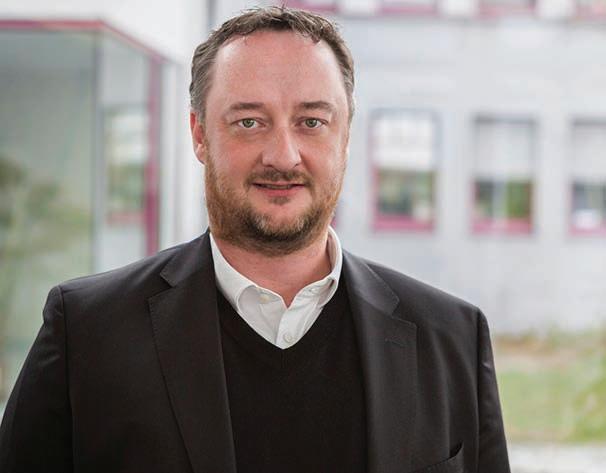
What technologies are you talking about?
Well, it starts with intelligent mechatronic systems that enable you to transport products individually. That includes our track systems ACOPOStrak and SuperTrak, as well as our brand new magnetic levitation system, ACOPOS 6D. Add to that robotics and machine vision –all fully integrated and tightly synchronised, of course – and what you've got is a whole new species of manufacturing, what
we like to call adaptive manufacturing.
What does that mean, exactly?
The basic idea is quite simple. An adaptive machine or line automatically adjusts itself to handle whatever products are being manufactured.
Changing between production runs becomes effortless and profitable. At the same time, lines can easily accommodate new
market requirements or government regulations.
That sounds quite promising – does it really work like that in practice?
Say you're assembling syringe sets. As the cylindrical tubes, called barrels, pass by an intelligent machine vision camera, their shape, size and orientation is captured and passed on instantly to a robot. The robot swoops in, picks up the barrel and hands it off
gently to two shuttles on a track system. Held snugly between the two shuttles, the barrel is carried straight to the first processing station. With an automation solution like this, it doesn't even matter if every single ampule is a different shape and size – you never need to retool or reprogramme the machine.
But, how cost-effective is it? Of course, there's a certain initial investment, that's true.
However, what really matters is how quickly it pays off. You also have to consider the alternatives. A conventional machine may be a little cheaper up front, but it's hardly equipped to handle small batches. The cost of constant retooling and reconfiguration quickly eclipses any profit you could have made. So, that leaves you with the only other option: manual assembly. With today's shortage of skilled workers and rising wage costs, that's also becoming increasingly unattractive. That's why I'm confident that adaptive manufacturing is the only profitable approach for the future of small-batch production.
Is it possible to back that up with some numbers?
I know of examples where the Overall Equipment Effectiveness (OEE) score was increased by over 50 per cent with an adaptive manufacturing solution based on B&R technology. With a number like that, it's easy to imagine how quickly they recovered that initial investment. And, what's particularly impressive are cases involving cleanrooms. If you need to scale up your output, building a whole new cleanroom is an expensive way to do it. Once again, adaptive manufacturing offers a better alternative. One of our customers managed to cut the footprint of their machine in half while at the same time achieving a double-digit boost in productivity. They didn't need a new cleanroom after all, which saved them a massive investment and that's something you can only do with adaptive manufacturing.
December 2022 EXPRESS PHARMA 33
INTERVIEW
B&R recently announced plans to strengthen its presence in the medical device assembly market. Fredrik Holmberg,Head,Global Segments and Accounts,explains to ExpressPharma how such companies have been dealing with the struggle of small batch sizes,and how adaptive manufacturing could provide relief
An adaptive machine or line automatically adjusts itself to handle whatever products are being manufactured.Changing between production runs becomes effortless and profitable
“Smaller batches and 50 percent higher
TECHNOLOGY
Pharma 4.0: Driving progress with disruptive technologies
Pharma 4.0 welcomes a cultural shift by driving processes towards more human-centric workflows that are digitally connected. Pharma companies are embracing this shift by empowering themselves with information systems and making
OPINION 34
laboratories and factories smart. With these upcoming changes, pharma manufacturing systems must be able to implement corrective actions and instantly respond to demand fluctuations.
With digitalisation at the forefront of Pharma 4.0, the

transition to a paperless laboratory is inevitable. The idea is to connect different parts of the value chain and create new levels of adaptivity and transparency for a digitalised system. The concept builds on process analytical technology and Quality by Design (QbD),
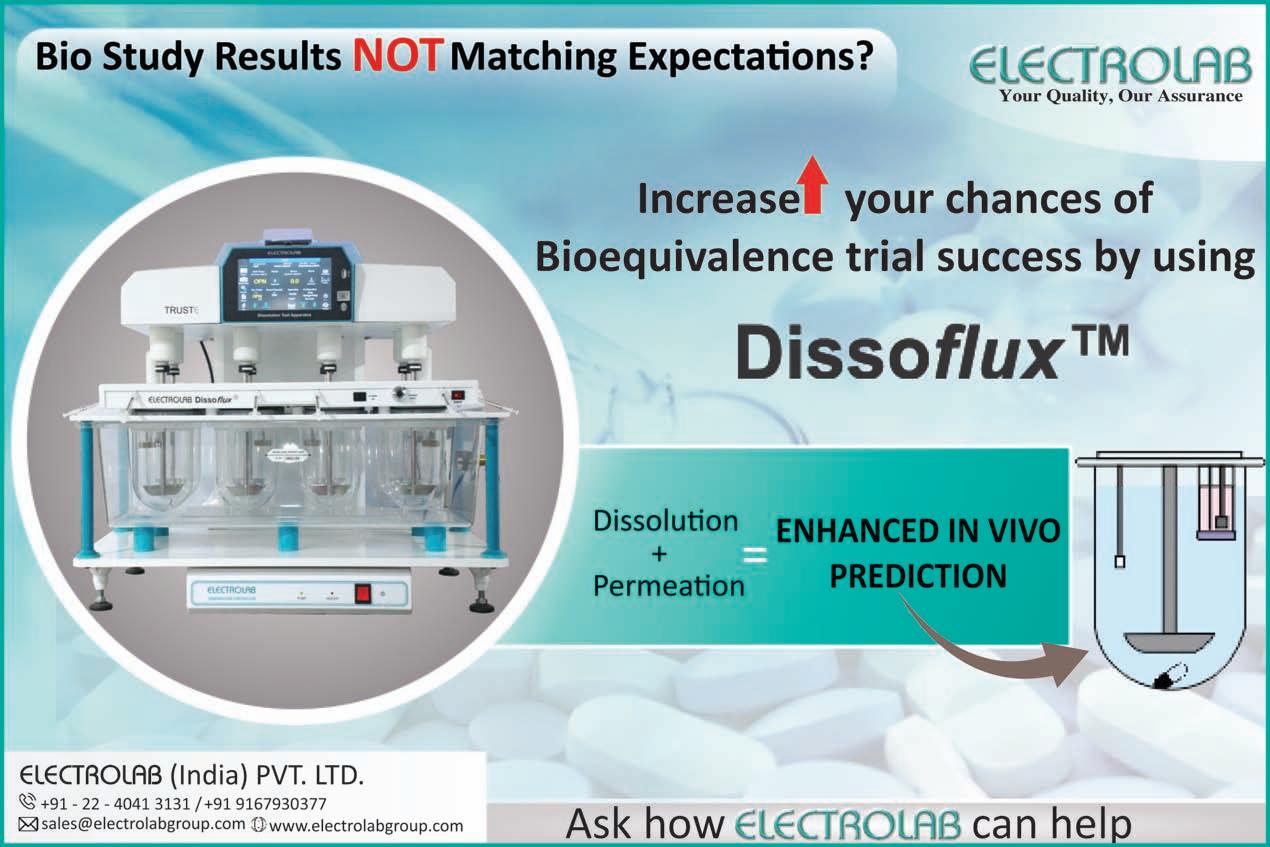
Digital and inter-connected data is the foundation for Pharma 4.0. Lalitha S,AVP– Strategy,Caliber Technologies,explains more EXPRESS PHARMA December 2022
TECHNOLOGY
thus, moving the focus to realtime monitoring using connected systems. Pharma 4.0 enables a truly agile manufacturing system where processes self-adjust based on the data being collected.
For quality-centric organisations, evaluating the current procedures on past data is important. The goal is to derive maximum efficiency and value from the available data. The focus is also on systems that aid in achieving data integration and analysis across the organisation. However, to utilise the latest data analysis, techniques such as Artificial Intelligence (AI) and Machine Learning (ML) are important, data must be at the heart of this entire system.
The unrealised potential of data
AI and ML are major tech elements that are transforming the industry. Contributing largely to commercialisation, early drug discovery and clinical trial design, these tech elements are evolving in new ways every day. This evolution leads to inevitable challenges. Many pharma companies are still discovering and testing the new potential for these analytical tools. In this process, those come across some challenges.
Data quality: Pharma companies are highly data-driven, and in the presence of biased data, actions and results depicted by AI shall be influenced. Data governance poses a major challenge in this aspect. This may raise problems when it comes to handling targetted results. AI can learn better from more specific and defined datasets.
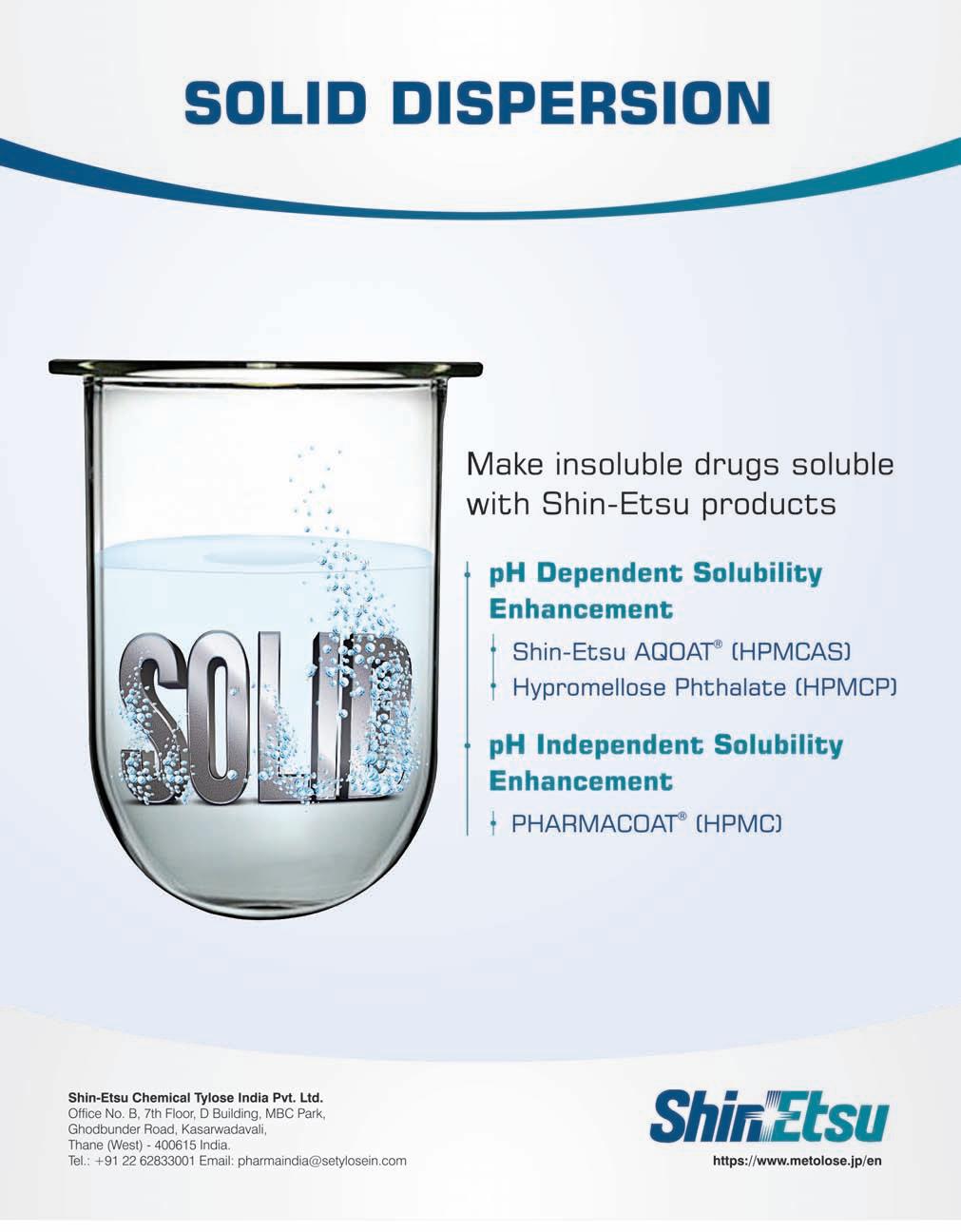
Companies should pick vendors which assure complete data security with a data encryption system. Systems must be built to ensure data integrity and meet the principles of ALCOA Plus as per GxP.
Automation: Although AI and ML have made processes a lot easier, there are apprehensions among users about their abilities to automate complex processes. Until they gain complete trust in these
tech elements, the need for human intervention prevails. Robust manufacturing and quality solutions can eliminate these insecurities by setting a foundation for digital transformation efforts.
Data silos: Organisations
have successfully digitalised most of their manual processes. However, quality efficiency is still a faraway goal. Huge datasets collected from various systems like LIMS, EBR, ERP, DMS, excel, etc. in the form of COAs, sta-
bility testing reports, CAPA analysis reports, dossiers, etc. are lying separately as data silos. Systems like EPIQ QMS aim to address the rising data silo issues, and are clearing the way by offering in-depth integrations.
Looking beyond the disruptions
Digital solutions offered by disruptive technologies can help manufacturers in various ways. Apart from preventing equipment breakdowns and ensuring process consistencies, they
December 2022 EXPRESS PHARMA 35
TECHNOLOGY
can contribute to overall production optimisation. Advanced analytics such as AI and ML can help them prevent manufacturing losses, increase equipment reliability, improve the quality and lifecycle of drugs and eventually reduce capital expenditure.
By identifying process degradation and its impact on final product quality to reducing lab testing lag times, these tech
INSIGHT
elements offer a competitive advantage to pharma companies.
Predictive maintenance and process analytics
Predictive maintenance uses advanced analytics to raise alerts by identifying the signs of impending equipment failure. This allows drug manufacturers to avoid unplanned failures. Easy-to-use predictive maintenance software cap-
tures and analyses data quickly while also identifying anomalies at an early stage. Process analytics evaluates complex variables in batch production and determines critical ones to drive greater yields. Thus, these tech elements (AI and ML), which are also termed disruptive technologies, safeguard the security of supply, control costs and optimise production.
Conclusion
Good data is the crux of the foundation for Pharma 4.0.
Robust systems that are interconnected and well-integrated with instruments and machines are an absolute necessity to be ready for future disruptions. Pharma manufacturing is a constantly evolving industry, and is growing increasingly complex with time, so knowing how to
quickly adopt these processes is the key.
By understanding how to increase reliability, effectiveness and output while maintaining quality with advanced analytics based on good data, companies will hold a sustainable competitive advantage while protecting their bottom line and safeguarding patients’ lives.
Single-Use Technologyin pharma manufacturing
Raheel Shah,Director,BDR Pharma,explains how Single-Use Technology (SUT) is an ideal solution for any biopharma company,regardless of the challenges of speed to market,flexibility, product quality or operator safety

Equipment for biopharma manufacturing (bioprocessing) that is intended to be used only once (or for a single manufacturing campaign) and then discarded, is referred to as a Single-Use System (SUS). SUS is the future of therapeutic drug biopharma processing, offering significant advantages over traditional reusable stainless-steel systems and partially disposable systems. SUS equipment typically consists of plastic parts that have been gammairradiated, sealed and disinfected. These systems are manufactured in a cleanroom, double bagged, and then sterilised using gamma, EtO, or X-ray sterilisation methods, ensuring a sterile system for every batch, while also being highly efficient and cost-effective.
The main advantages of SUS over traditional stainless steel (or less frequently-used glass in bioprocessing) are that the equipment is presterilised, eliminating the need for cleaning, sterilisation
and validation of sterilisation before use. Additionally, related complex steam, WFI and other plumbing installed throughout bioprocessing facilities with large fixed stainless steel components are also avoided. With SUS equipment, new processing lines can be set up and processes can be turned around considerably faster than with stainless steel equipment that needs to be cleaned, sterilised and validated over the course of several weeks. Additionally, the facility footprint and the investment and construction costs can be significantly reduced, and new process lines and facilities can be operational much faster and more easily, than with stainless steel due to the significantly reduced facility infrastructure requirements, including the lack of extensive plumbing or an on-site WFI plant, and the fact that bioprocessing suites can be as simple as empty rooms that can be filled with an SUS-assembled process line.
SUS, which appears to be
EXPRESS PHARMA December 2022 36
TECHNOLOGY
the antithesis of a global movement away from disposable products and processes, promotes sustainability by eliminating the chemicals and resources, such as water and energy, required to sterilise reusable systems. Perhaps, most importantly and critically, this is done at a low cost and with minimal process time, and it virtually eliminates the risk of crosscontamination because the product flow path is discarded and replaced after each batch.
Single-Use Technology (SUT) allows biopharma manufacturers to move away from sterilised equipment and consumables that are recycled, or pose a risk when transferred into clean rooms. SUT has emerged as a successful technology, and many global pharma and biotech companies have gained significant experience in both upstream and downstream API manufacturing, as well as the fill-finish part for drug substances or drug products.
A growing number of pharma companies are incorporating this technology into their manufacturing processes. Pharma companies can develop reliable products using SUT-powered bioreactors without the need to sterilise containers. Companies that already use SUT report faster turnaround and manufacturing times, as well as simplified operations, due to less maintenance. SUTpowered equipment is simple to set up.
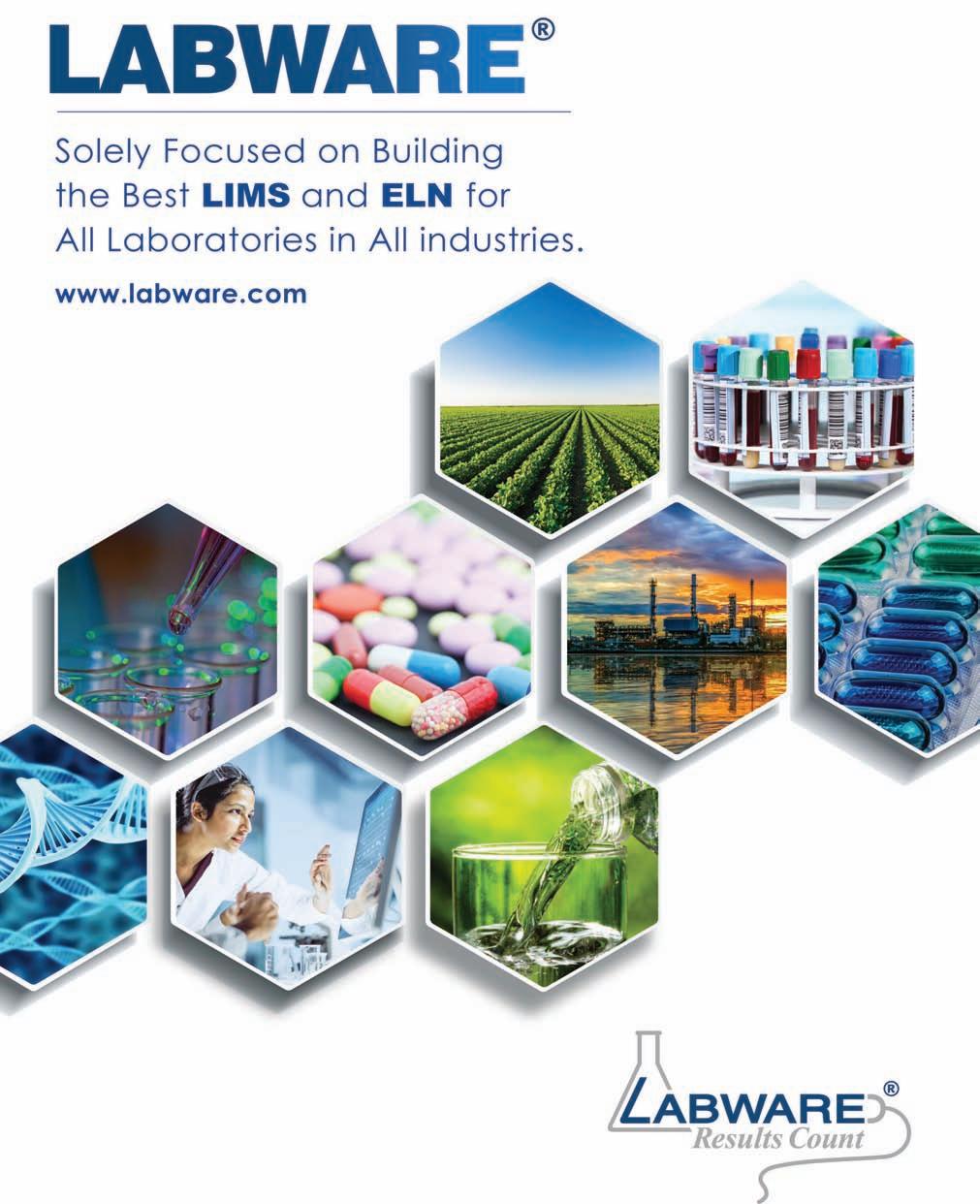
It takes one or two hours as opposed to stainless setups, which can take several days. Furthermore, there is no need for annual cleaning, sterilisation validations or minimal monitoring to keep the system running smoothly.
SUT is an ideal solution for any biopharma company, regardless of the challenges of speed to market, flexibility, product quality, or operator safety. It has many advantages, with investment and variable costs being the most-frequently mentioned. However, they represent only one aspect of a strategically
important decision in production technology. Today, SUT raises a slew of frontend issues, including process compatibility, leachable/extractable, film selection, backup supplier and waste management. In addition, the quality assurance system
must be expanded to include both raw materials and manufacturing technology.
In terms of investment costs, SUT outperforms stainless steel because SUS requires less initial capex, since it necessitates less instrumentation and utilities.
SUT also eliminates the need for sterilisation and cleaning, as well as reduces the need for installation and support systems.
This benefit allows a manufacturer to purchase more capacity on a limited budget, but it also has an effect on
variable costs because a much lower investment sum must be amortised when compared to stainless steel.
As a result, the low initial investment cost can be attributed to lower variable costs, which ultimately favours the use of SUS.
December 2022 EXPRESS PHARMA 37
LOGISTICS
Supply Chain Management (SCM) is handling and optimising all the many complicated facets of a supply chain, involving goods and services. At the most fundamental level,SCMis the management of the flow of goods, data and finances related to a product or service, from the procurement of raw materials to the delivery of the product at its destination.1
Inventory management is an integral role of the SCM vertical of the organisation, and is important for its success as a commercial venture. The whole hassle of syncing supply schedules, costing and requirement assessment to maintain adequate stock has less room for allowing anything, but optimum efficiency. Inventory management, especially within the healthcare industry, is required not just for the commercial success of the healthcare organisation, but also for the timely delivery of clinical care to the patients.2
Optimal inventory management ensures consistent delivery of better clinical outcomes, optimum use of the available resources, sustainability of quality in process and protocols, proper stock balancing and no retention of perishables, and ultimately incessant and advanced patient care.2
The pharma supply chain is the means through which prescription medicines are manufactured and delivered to patients. However, the supply chain network is actually complex, requiring a number of steps that must be taken to ensure medications are available and accessible to patients.
A wide range of stakeholders are also involved in the pharma supply chain, including manufacturers, wholesale distributors and Pharmacy Benefit Managers (PBMs), i.e., purchase managers.
In such a complex process,
the stakes are high for pharma companies. Drugs that are distributed incorrectly affect both the company’s reputation and customer satisfaction, as well as potential profit. An ineffective supply chain could also disrupt the healing processes of patients and produce negative effects on public health, a report from Kaiser Family Foundation revealed.
The pharma supply chain faces its own set of challenges, including supply chain visibility, drug counterfeiting, cold-chain shipping and raising prescription drug prices, which can significantly increase out-of-pocket costs for patients.
Pharmacies are the final step before drugs reach the patient, and arguably the most vital step because they serve as the information link among PBMs, drug manufacturers and wholesale distributors.
The radical overhaul, according to researchers, includes more diverse product types and therapies with shorter lifecycles, new ways for assessing, approving and monitoring medicines, increasing emphasis on outcomes, new models of delivering healthcare and various other changes.
Overall, the pharma supply chain is vital for patients to receive the medications they need without having to deal with stress or roadblocks along the way. Although the supply chain faces various challenges, companies can take the necessary steps to ensure a smooth process from manufacturing of products to delivery to patients.4
Medical devices are considered a fundamental component of health systems; the benefits they can provide continue to increase as they're essential to prevent, diagnose, treat and rehabilitate illnesses and diseases in a safe and effective way.
The healthcare supply chain
is under enormous pressure. Particularly, the supply chain in medical device industry is getting more complex day by day as companies are on an expansion spree to align their product portfolios with the rapidly changing ecosystem. While the pandemic is a major cause of disruption in the industry, it is not the only one. Factors such as sudden unforeseen events like climate change or natural disasters, macroeconomic policy changes, political scenarios, malicious cyber threats and financially fragile suppliers are equally responsible for bringing down the operations for medical devices in the supply chain.
To top it all, companies have to adhere to specific guidelines and regulations related to pro-
cessing, packaging, data governance and more that creates more challenges, if not monitored closely and carefully.
Usually, the supply chain management in the medical device industry creates and manages a massive amount of data— another area of concern that comes in the way of seamless operations of the entire industry.
On a practical note, this data has been managed in silos curbing its ability to generate value. The realisation that this data can drive value across the supply chain is essential to keep the operations going.
Hence, strengthening the supply chain is the need of the hour now. Identifying these pressure points andredefining the entire systemmaking it datadriven, will make the supply chain more resilient in function.5

Making available essential diagnostic kits, reagents of good quality, essential surgical and disposable items at all health facilities in any Indian state, the system is in the process of being in transition over to act as a track-n-trace mechanism for each and every diagnostic kit and reagent/drug/surgical right from procurement to supply to end user (citizen).6
Considering the importance of inventory management within a healthcare organisation, one would expect that attention would be maintained on this activity. The broken equipment or a shortage of medical tools is not just a nuisance, but can delay operations drastically. In a typical healthcare facility, a nurse is at least interrupted twice in her shift to locate inventory for the operating room…. (Ref: Previous functional experience & Case studies conducted with private and public healthcare providers.)
The staff allocated for continuing quality care to patients spend significant time in finding, tracking, setting up and forecasting inventory demand. In the hospitals, any simple delay in operations is the choice of life or death for their patients. However, an inventory management system in the healthcare industry has been considered as an additional function. It is perceived as an area of low importance and ignored because of the vital and demanding needs of patients, which, of course, always takes priority. 3
With the intent to identify the pain points within the inventory management system, we have taken inputs from the different clinical support services (nursing, pharmacy, pathology labs, radiology labs, biochemistry labs, bio-medical department and nutritional services) across multiple hospitals.
(Ref: Author (Previous functional experience with private and public healthcare providers and inputs from assessment of client projects – Source data: Interaction with stakeholders and their inputs
Private healthcare: Care Hospitals Group, Narayan Hrudayalaya Group, Birla Hospital Group, Manipal Group, Rainbow Group, KIMS Group, Star Hospitals, Global Hospitals Group, etc., and other stand-alone hospital groups, medium and small-size hospitals
EXPRESS PHARMA December 2022 38
pharma
Srinivas Reddy Bendaram,pharmacist,holding experience in pharma manufacturing/ formulations sector,elucidates upon the importance of Supply Chain Management (SCM) OPINION Parameter Proportion Presence of the primarycold chain handler 100% Functional equipment 98% Data accuracybetween physical count and record 92% Accurate temperature monitoring 88% Presence of a backup cold chain handler 30% Facilities reporting stock-out of vaccines 26% Facilities reporting wastage of vaccines 23% Source:'Techno-EconomicAssessmentofelectronicVaccine IntelligenceNetwork(eVIN)byMoH&FW(2018) INDIA'S VACCINE DISTRIBUTION CHALLENGES
Inventorymanagement in
industry
and nursing homes.
Public healthcare: Jan aushadhi pharmacies, NIMS, ESI Hospitals, railways, Arogyasree Trust Hospitals, PSUs, semi-govt, etc.)
The most common issues include:
◆ consumption of materials and cost of consumption isn’t monitored.
◆ shortage of drugs, surgical, consumables, diagnostic kits/reagents, medical gases, etc. which is an issue reflected frequently at all levels.
◆ non-familiarity with inventory days.
◆ lack of continuous training and assessment through learning and development activities, as one would expect this would lead to increased spending on material procurement, holding a higher inventory of drugs than required – leading to increased working capital requirement. This would also result in procedures postponed and stockouts of critical medication – delayed treatment to patients in ICUs.
The cause of this mismanagement in inventory is not just a single issue, but a combination of multiple factors across different levels of an organisation.
Strategy level: SCM department that manages inventory in hospitals/healthcare facilities is usually a no-man’s baby, unlike separate professional SBUs like finance, HR, clinical departments and administration. Most of the organisations are of clinician lead anagement/owner/govt committee - driven ad-hoc model with a lack of trained and qualified professionals who apply scientific tools/methods in SCM without a trained wellqualified professional. There is also no clarity on the process of measuring the SCM performance in a hospital setup like priority of deliverables/metrics. This leads to skipping out on certain basic processes such as lack of tracking of material spending against the approved budget, a lack of maturity in forecasting and planning due to inefficient availability and management of data, and a lack of strategic selection of goods and services.
Although the pharma supply chain demonstrates success, it faces many challenges as well.
All businesses with an efficient supply chain follow a four-

step process, including demand management, inventory management and distribution, secondary production planning and scheduling, and primary manufacturing, according to areport from researchers at Imperial College of Science, Technology and Medicine.
The global information analytics business touched on various challenges of this process, such as lack of coordination, inventory management, absent demand information, human resource dependency, order management, temperature control and shipment visibility.
For example, the “Forrester effect” is a business technique to analyse any supply chain disruptions, and is a vital business step. However, this effect is seen at the primary manufacturing site, which presents a challenge because it is the least responsive part of the supply chain, re-
searchers said.
This makes it difficult for businesses to properly address challenges such as supply shortages, tenders for national supplies and epidemics.
Researchers from the Northeastern University and the Sloan School of Management at MIT
December 2022 EXPRESS PHARMA 39
LOGISTICS
also recently noted ways to tackle drug shortages. Theresearch articlepublished in complexitystated that one common solution was to keep more inventory to ensure that more products are available to treat patients in the event that products are recalled.
Researchers also stated some tactics for eliminating the effects of disruptions, including financial mitigation, operation mitigation and operational contingencies.
“Mitigation tactics are those in which the firm takes an action in advance of a disruption and correspondingly incurs the cost of the action regardless of a disruption’s occurrence. Operational tactics, such as inventory management, multiple sourcing and flexibility in production are also studied in the literature of supply chain disruptions,” researchers said.
More specific challenges reported by researchers at Imperial College of Science, Technology and Medicine included uncertainty in the pipeline of new drugs – specifically, which drugs will be successful in trials and what sort of dosage and treatments will be the most favorable.
PWC also released a report this year that noted, in order to meet the demands of a growing marketplace, the pharma supply chain must undergo a “radical overhaul.”
The radical overhaul, according to researchers, includes more diverse product types and therapies with shorter lifecycles, new ways for assessing, approving and monitoring medicines, increasing emphasis on outcomes, new models of delivering healthcare, and various other changes.
Overall, the pharma supply chain is vital for patients to receive the medications they need without having to deal with stress or roadblocks along the way. Although the supply chain faces various challenges, companies can take the necessary steps to ensure a smooth process from manufacturing of products to delivery to patients.4 Procurement process level : As there is no standardised procurement policy across most of the small-to-mid-size hospitals,
there are a lot of shortages and stockouts across the year. Kneejerk reactions to shortages and stockouts lead to unplanned direct purchases – further disturbing the forecasting and planning process. In some hospitals, procurement is done based on a yearly spend analysis distributed across the year, leading to overstocking and shortages as consumption varies on a monthly basis.
Stores level: As we go further down the organisational chain to the various stores that exist within the hospital setup, we see a simple and widespread problem. All the supplies by vendors are not on molecule/generic name, and companies will have the brand name on their products and all the material requests, transactions and billing happens on these brand names. This leads to: ◆ duplications and mismatch of stocks at different stores. For example, paracetamol has multiple brand names such as Dolo, Calpol, Crocin, etc, and many other hundred local brands. If stocks are entered under the brand name without specifying the generic name, stores will have excess stock of paracetamol
◆ issues in forecasting and tracking consumption
◆ distribution of procurement of the same molecule from different sources leading to inefficiencies in the procurement of that molecule
Pharmacy level: The doctors within the hospital may not support the adoption of biosimilars from other manufacturers as they have been supported by their historical manufacturers.
For example, a doctor prefers prescribing a certain brand and that brand may not be the brand that has been procured – caus-
ing an artificial shortage to exist within the inventory.
Information flow: There is a wide gap in both information collection and flow within the hospitals. Tracking of material receipts and payments, expiry, near-expiry, damaged, non-moving materials, and returns are done in a fragmented manner. This leads to inaccurate consumption and procurement data within the system.
Advice
Change the objectives of the SCM system: At present, the primary objective of the SCM for hospitals, both public and private sector, is cost reduction for materials.
The pharma supply chain greatly affects drug costs. Consumers face higher out-of-pocket expenses and health plans deal with higher drug spend.
Areportfrom the Pharmaceutical Research and Manufacturers of America (PhRMA) found that the complexity and number of players involved in the drug supply chain may be one of the main reasons prescription drug costs are making headlines.
Prescription drugs greatly depend on several negotiations among wholesalers, pharmacies, PBMs and insurers, according to the report. The authors noted that rebates have increased over the past few years, but out-ofpocket costs for patients are soaring.
The amount an individual pays for a brand-name drug will depend on their insurance plan, the list of drugs it covers, the size of their deductible, and the deal an individual's insurance company has negotiated with the drug’s manufacturer, according to a Time article.
Health plans with high
deductibles or coinsurance have grown more popular, which means more patients have higher out-of-pocket costs and may not be able to benefit from negotiations since their co-payment is based on the list price rather than the negotiated cost, researchers stated.
Multiple examples of how the complex supply chain can increase costs for patients were discussed in the study.
One of the examples touches on a patient who was prescribed an HIV medication with a list price of $3,000. Even though the patient received a 20 per cent rebate, her coinsurance is $612 because it is based on the list price. The patient is then forced to pay $100 above what they would have paid if the coinsurance was based on the negotiated price.
A National Community Pharmacists Association (NCPA) studysaid that high generic drug prices have had an adverse effect on almost everyone in the pharma supply chain.
Consumers face higher copays and prices and health plans are dealing with higher drug spending. Physicians are also finding the need to prescribe alternative drug therapies, and sometimes, consumers are declining their medications due to increased prices.
The pharma supply chain poses risks and challenges to both providers and consumers. However, in the context of a health-conscious society, management of pharma supply chains presents complexities because it involves life-saving medicines that are vital to patients.4
But, a holistic approach to SCM is required that can include all the relevant parameters to guide the procurement process. The parameters include timely availability, quality, affordability, profitability, improved clinical outcomes, end-user satisfaction, information visibility, feedback, trust and goodwill.
Budget forecast: Spend analysis data for a minimum of six months or preferably one-year data should be collected across all the facilities. This will enhance the forecasting and planning process. Other data including disease burden estimation, benchmarks and current government policies/welfare
schemes should be gathered to guide the overall budgeting process.

Give importance to the SCM vertical: The SCM vertical plays a vital role in delivering both the financial and clinical objectives of the hospital. Therefore, emphasis should be given to hire the SCM staff with the right expertise and skillset. The performance management of this staff also should be based on standard metrics that prioritise a holistic approach to inventory management.
Utilise real-time data and analytics to give insights into the procurement policy such that procurement is done following the monthly and seasonal trends. Integration of forecasting and planning tools, procurement software and inventory management software to ensure that stockouts, shortages and overstocking are minimised. However, the hospitals who do not have software support, can explore the development of spreadsheet formats for purchase negotiations has been made necessary by all the hospitals acknowledging the clear formatting of the different quotations by the companies. Nevertheless, it is a strenuous and time-consuming process to look at all the data manually and sort them accordingly by hospitals. Hence, basic training of MS Office Excel tools/formats comes in handy and the derived optimum solution is just a few clicks away.
Emergency purchases: Make sure that the emergency direct purchase process is as per a set protocol and the information of the stock that is purchased on an emergency basis is added to the regular inventory. The frequency of emergency purchases should be used as a metric to measure the efficiency of the SCM system.
Generic names: Usage of generic names should be standardised within the organisation – the same generic name should be used while forecasting, budgeting, procurement, tracking inventory within the different stores and measuring consumption data. This will ensure that the data collected regarding the inventory of particular material is as accurate as possible.
EXPRESS PHARMA December 2022 40
LOGISTICS
IT Software: Computer technology is imperative in constant patient monitoring and health assessment already. When intertwined with stock data, it enables better planning and execution of treatment as the information indicates available stock, material transfers among various sub stores, shelf-life details and listing down alternatives that are readily available to the attending healthcare provider. The real-time information flow is essential for exact assessment and quick alternative arrangements. Safety is reinforced as the chance of crossmedication, deteriorated products, or faulty items being used accidentally is completely eliminated.1
Conclusion:
SCM, especially within healthcare organisations, is a complex and tricky process. To guide this complex process, accurate data collection processes and systems should be maintained across the different levels of the organisation. This data can be used to analyse and generate insights that can guide the different SCM processes such as forecasting, budgeting and procurement. Automating the process of data collection, data analysis and insight generation through robust IT systems will reap rich dividends for the healthcare organisation.
Change is a constant feature that all healthcare organisations face – in terms of human resources, drugs and devices, biomedical instruments and IT systems. To adapt to this changing environment, a well-developed and standardised training and evaluation system should be in place such that the human resources working within the organisation have the relevant expertise and knowledge.
These issues are present in not only the small-and-mediumscale organisations, but also in large organisations. The situation is worse in the large fragmented public healthcare system… in government sector hospitals like DH, AH, PHC, CHC, health and wellness centres.5
The sheer amount of wastage of resources that happens due to the lack of a well-developed
supply chain and inventory management system is almost criminal. However, the recent advances through the Ayushman Bharat Digital Mission (ABDM) are a step in the right direction. Expanding the scale of the ABDM to utilise digital tools and solutions to the various supply
chain processes of the public health facilities across the country will unlock strategic purchasing of goods and raw materials for the entire public healthcare value chain.
References
1. https://www.oracle.com/mid-
dleeast/scm/what-is-supplychain-management/ 2. https://blogs.zepnurhealth. com/benefits-of-inventory-management-in-healthcare/ 3. https://blog.goodsorderinventory.com/general/the-roleof-inventory-management-forhealthcare-industry/
4. https://pharmanewsintel.com /news/fundamentals-ofthe-pharmaceutical-supplychain.

5. 'Website Information' by TSMISDC (As on 30th Dec’2020)
6. Audit Report on ‘General & Social Sector’ by Comptroller and Auditor General (CAG)
December 2022 EXPRESS PHARMA 41
India – the emerging hub of nutraceuticals
Amit Srivastava,Chief Catalyst,Nutrifytoday.com,deciphers the

tually stabilising since late 2021 at 16-18 per cent, surpassing global industry trends.
As well as an impressive trajectory, the industry underwent a holistic change, underpinned by science. This resulted in a surge in clinical
trials with consumers, finally validating the claims of the producers. The change is now irreversible and the shift is positive. Market accessibility was another factor to the industry’s growth, thanks to the government-run pharmacies stocking
up nutraceuticals. Another major catalyst of growth was the formation of the Nutraceutical Task Force, tasked with shaping policies to transform the Indian nutra industry into a $100 billion industry by 2030.
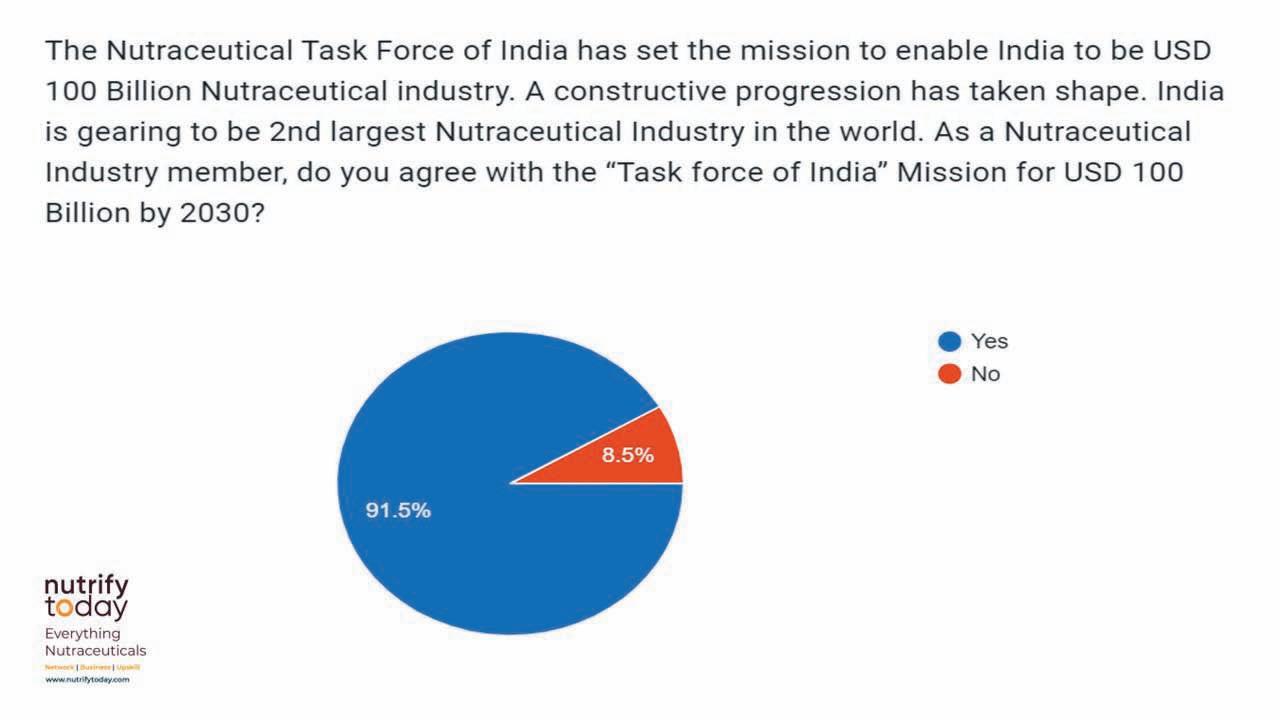
The biggest game changer was an increase in the overall number of Indians consuming basic nutraceuticals during the pandemic. The ‘nutraceutically-dormant’ Indian community had finally woken up, and so had the industry. According


The Indian nutra industry is poised to realise the $100 billion dream, suggests a recent survey by Nutrify Today.

2016 turned out to be the year that the nutra industry began to take off in India and both the trajectory as well as the industry have since undergone a seismic evolution.
Similarly, 2020 was a game changer. The industry’s growth rate made a quantum leap from the predictable trends of 10 per cent to over 26 per cent during the COVID-19 pandemic, even-
EXPRESS PHARMA December 2022 42
NUTRACEUTICALS
results of a recent survey
which identifed the gaps to be filled in order for India to realise its nutra potential as a $100 billion industry by 2030
to the Nutraceutical Task Force, over 640 million Indians took to basic nutraceuticals during the pandemic.
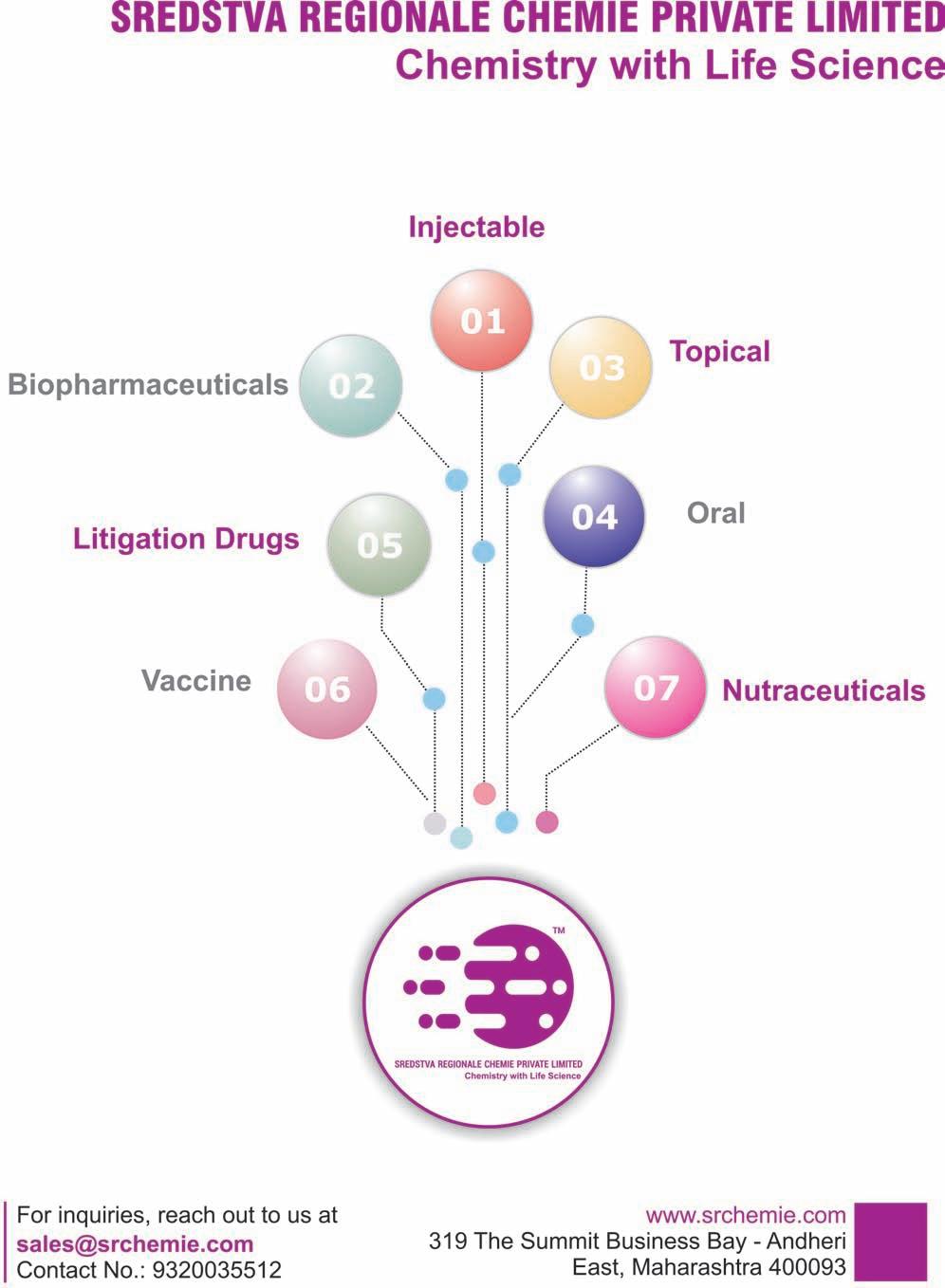
To fuel the growth and modernisation of the nutra industry, five essential pillars of positive growth and change are also taking shape:
1. Medicinal plant farming: India is home to 52 agro-climatic zones. This advantage, coupled with an improved Biological Diversity Act, (the Biological Diversity (Amendment) Bill, 2021) with the aid of IT applications in consonance with blockchains, is driving the creation of a finger-printed, raw material supply chain.
2. Active nutra ingredients: India is geared up to tap into its rich active nutra ingredient potential by accessing over 1,700 medicinal plants from Ayurveda. This resource base alone has the potential to propel India into the $200-billion league.
3. Formulation ecosystem: India is home to a vast number of world-class GMP facilities. This is a spin off from India having the largest FDA-approved contract manufacturing facilities in the world, with additional high-end, nutra manufacturing facilities, usually audited by pharma companies. This spin-off effect means India has the potential to become a global contract manufacturing hub in nutraceuticals. Moreover, the pharma delivery technologies can also be applied here to churn bio-available, disruptive nutra formations.
4. The start-up ecosystem: India is home to 7,400 nutra start-ups backed by high-end incubation hubs such as CCMB, IITs and other institutions. Start-ups are leading to a technological rev olution across the entire eco-system.
5. Academia: The Nutrify Today Academy is working closely with the Centurion University, to launch nutra industry-specific post-graduation courses, the first of a kind. More widely and importantly, universities are collaborating with the industry to develop industry-specific courses and programmes.
The survey
The thinking behind the survey conducted by Nutrify Today was to identify the gaps to be filled in order for India to realise its nutra potential as a $100 billion industry by 2030.
The four-month survey covered the Indian nutra industry
and community, interviewing more than 2,000 executives, including senior and middle management professionals and owners of nutra firms and businesses. Other stakeholders, such as academia and investors, were also included in the group.
The survey revealed the supreme confidence the stakeholders had in India realising its $100 billion potential by 2030.
In fact, 91.5 per cent of those surveyed were ‘absolutely sure’ that India Nutra Inc would reach its target by 2030. However, 48.2 per cent made it clear
that a major gap that needs to be addressed is the lack of a dedicated nutra department in the government, which, they felt, should be immediately addressed for the growth potential to be achieved. Dr Vivek Srivastava, Senior Vice-President, Innovation, Business
December 2022 EXPRESS PHARMA 43
NUTRACEUTICALS
Strategy and Scientific Affairs, Zeon Life Sciences, stated, “As a nutraceutical industry, we strive to offer the best product to manage health conditions. However, it is imperative to come out with policies, which are more relevant to trigger innovation and we look forward to paramount support from the government in this direction.”

Confusion around regulatory issues and the absent Harmonised System of Nomenclature (HSN) duties were a major cause of concern. Of those sur-
veyed, 40.1 per cent raised concerns over the evolution of regulatory policy, partly because the industry is not so involved in shaping the rules, which have been evolving at a rapid pace. This calls for greater consultation and engagement with the industry. As for the missing HSN codes, the industry stakeholders felt that this was hindering the applicable duties.
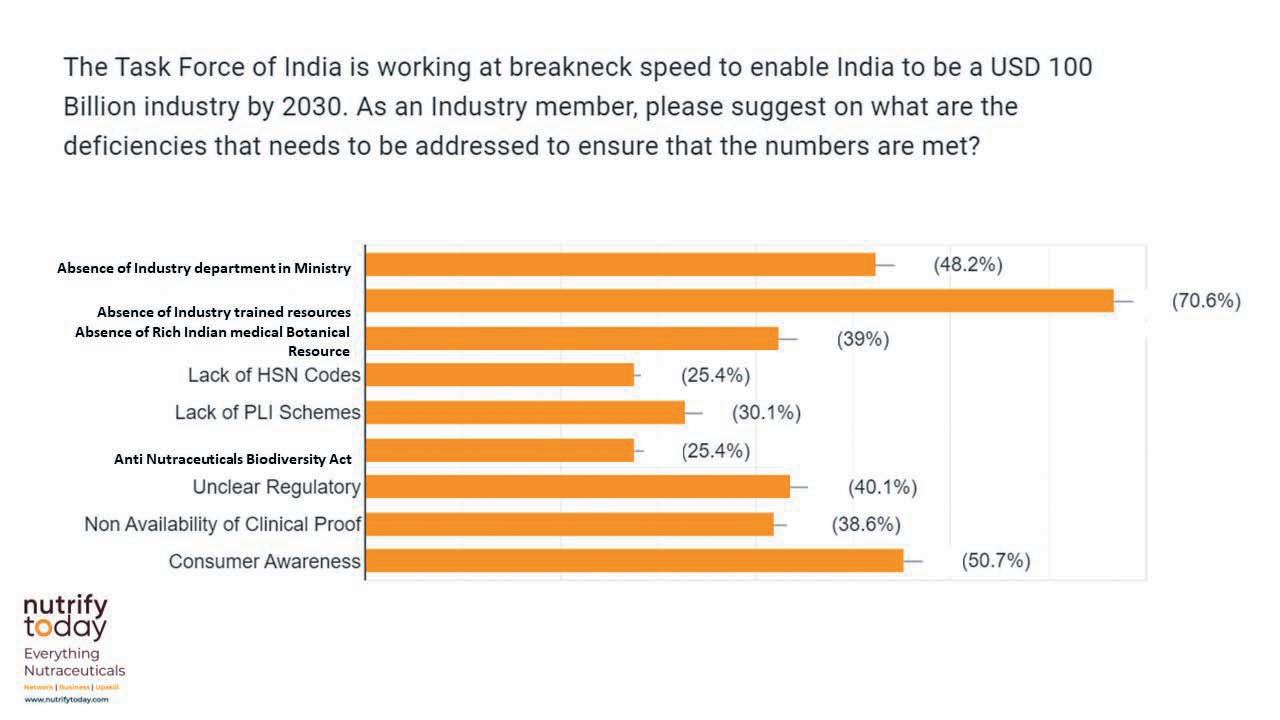
One of the major surprises that emerged was the lessened demand for the PerformanceLinked Incentives (PLIs) of-
fered by the government. This could indicate that India Nutra Inc is confident that it is developing organically and relying on the abundantly available natural resources. The Biological Diversity Act, 2002 proves to be problematic, despite the recent modifications (via the Biological Diversity (Amendment) Bill, 2021) as 25.4 per cent of those surveyed felt it was a cause of concern. Some of the senior stakeholders also warned that the chasm between nutrition and nutraceu-
ticals needed to be bridged.
Aditya Malviya, Business Head, India, IFF Health, said, “At a personal level, it (the survey) clearly indicates that the industry does not understand the difference between nutrition and nutraceuticals. What the government wants is nutrition for the people and what the industry wants is nutraceuticals for profits and a new market segmentation.
“The government is looking at $100 billion industry, primarily for nutrition, through
AYUSH, coupled with Food Safety and Standards Authority of India (FSSAI), to regulate the irresponsible way in which the industry is talking about nutrition in the guise of nutraceuticals. Nutraceuticals is essentially part of pharmaceuticals and should be dealt with that way only. Taking nutraceuticals directly to the consumer without the support of the medical fraternity would be the biggest health disaster by the industry. Unfortunately, many companies are trying to do this,
EXPRESS PHARMA December 2022 44
NUTRACEUTICALS
this is unfortunate for a country the size of India.”
This was felt by 38.6 per cent of those surveyed who pointed out that there was a dearth of clinical studies in the industry in India – however, since the pandemic and increasing awareness of consumers, some believed this issue was starting to be addressed. The essential gap pointers made it absolutely clear that proper clinical studies, corroborated by the medical fraternity, would lay the foundation for trust. “Nutraceuticals should be treated at par with pharmaceuticals and the aim should be to take nutraceuticals to pharmaceuticals for the enabling of trust and opportunity. Unless and until doctors prescribe nutraceuticals, trust will never come, disinterest tends to lack of awareness, it’s a merry-goround,” observed Anil Jain, Managing Director, Gangwal Chemicals.
Another major issue raised during the survey was a lack of consumer awareness, with over 50 per cent of those surveyed believing the lack of consumer awareness is still the biggest hurdle in India. Ram Babu, Managing Director, Pulse Pharma, said, “Consumer awareness… Lack of health consciousness, we still want to think of health only when something has gone drastically wrong with body and mind.”
Finally, 70.6 per cent raised one common concern: that of the lack of trained professionals in nutraceuticals. What if this alone were to become the biggest hurdle, despite all the efforts by the industry, Task Force and government? Expressing concern over this issue, Sanjay Mariwala, Executive Chairman, Omniactive Health Technologies, said, “The nutraceuticals industry in India requires development of creative human resources. Innovative ideas are what consumers are paying for and demanding. Brands will need to create innovative products, and for that, they need supply chain partners who can creatively use science and technology to craft such products,
that are efficacious and deliver the value desired. The investment in recruiting, training and developing the right manpower will go a long way in shaping the future of companies and countries that will emerge as leaders in this space.”
The Nutrify Today Academy has estimated an HR deficit of more than 160,000 qualified personnel and understands the urgent need to address this in order to come close to achieve the $100 billion target. With this in mind, the company is working with
the industry through its AI platform to help design differentiated, responsible nutra portfolios, while engaging with academia and universities, such as Centurion University, to develop industry application courses for post graduate students in pharmacy, nu-
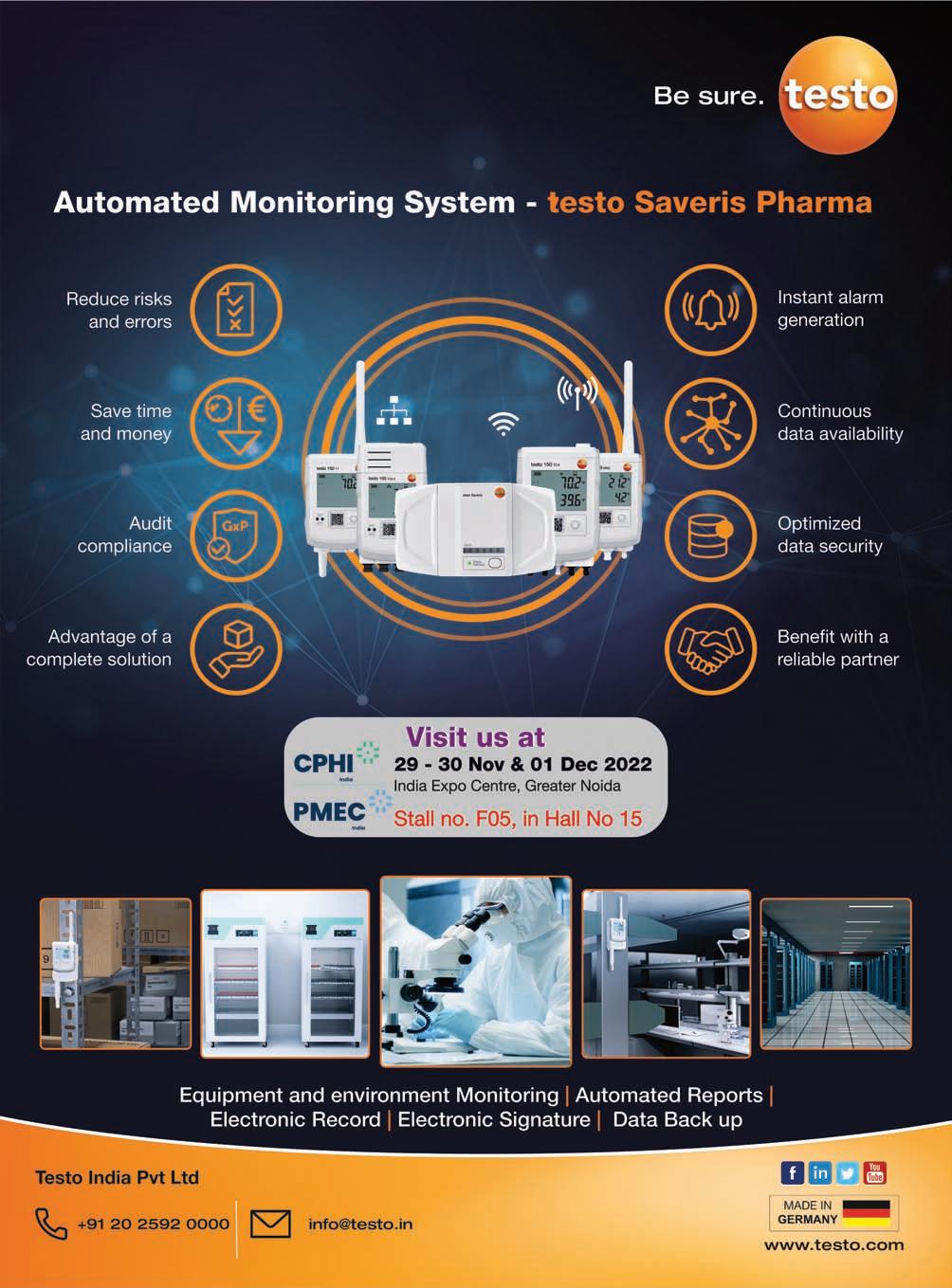
traceuticals, food tech and chemical engineering.
The survey has clearly indicated that India is the emerging hub of nutraceuticals, and, according to experts, it’s a trend which offers a wealth of opportunities for India Nutra Inc, outside the US.
December 2022 EXPRESS PHARMA 45

EXPRESS PHARMA December 2022 46 cover
)







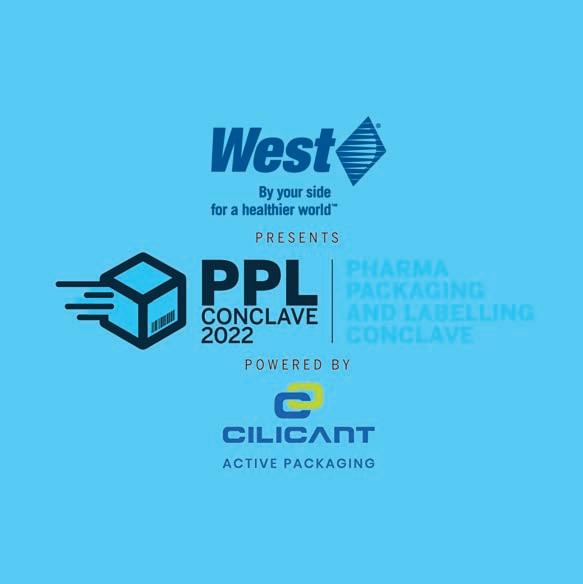

December 2022 EXPRESS PHARMA 47
Inauguration and Lamplighting Ceremony
Express Pharma recently organised the Pharma Packaging and Labelling (PPL) Conclave 2022on September 23-24, 2022 at the Novotel Airport Hotel, Hyderabad. The conclave, back in its physical format after a gap of two years, identified and examined the megatrends that will shape and influence pharma packaging to make it more effective, flexible and intuitive in the future. The packaging experts at the conclave discussed strategies to balance inn ovation with cost, functionality with aesthetics, utility with sustainability, etc. They also deliberated on how to make labelling more effective, informative and inclusive.
PPL Conclave 2022 witnessed leaders and veterans of the pharma packaging industry discuss and deliberate on strategies to navigate new challenges and meet mounting expectations of the pharma industry.
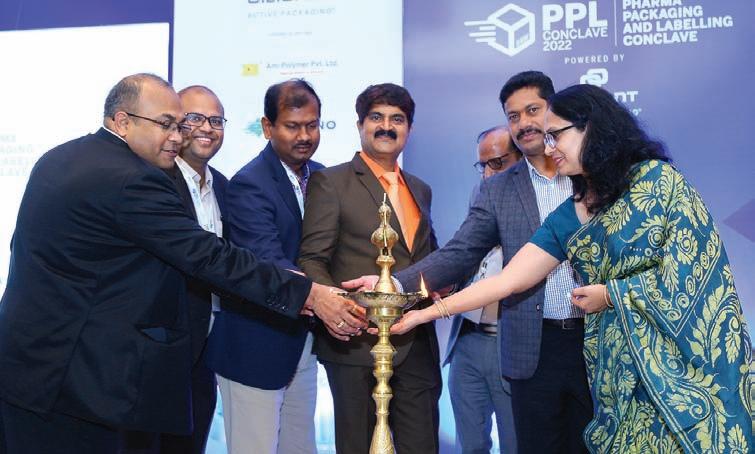
It began with an adress by
the fifth edition of the PPL Conclave, she said, “Let us reflect on how the world has changed since we met virtually at the fourth edition of the PPL Conclave, in April 2021.”
She added, “We have gone
Chair's Address
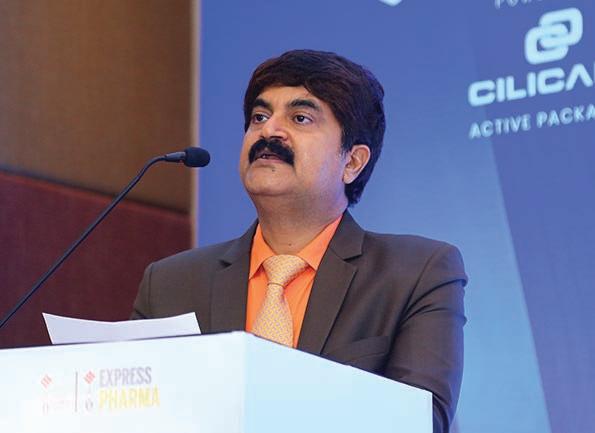
Marking his presence felt at PPL Conclave 2022, Chakravarthi AVPS, Global Ambassador, World Packaging Organisation, said that the COVID-19 pandemic has brought the pharma and biopharma companies to the centre stage. “It has brought home the fact that this critical industry functions as an important social security net and undergirds a healthy society. India, in the field of pharma, has made its presence significantly by the turn of the century in the global market after becoming self-reliant in the previous century itself. India’s noble act of delivering ARVs at almost, even less than one-fourth of the global cost than the prevailing price, has al-
leviated the misery of millions of people across the globe, especially in Africa and some parts of
from being locked down in our homes to travelling the world. Everyone is focussed on building back better. And we are able to do this, thanks to our strong pharma and vaccine sector, that gave us very effective vaccines and therapeutics in less than a year. The sector has been very ably supported
by the packaging community, who rose to the occasion, with innovative packaging to protect these novel therapeutics.
She informed that PPL Conclave 2022 was seeking answers to questions like: How do we now go beyond these achievements? How do we create a path towards
responsible packaging, and what are the technologies which will help us walk this path? How does the packaging fraternity keep pace with pharma innovation?
Concluding her address, she said, “Let us build back better, but remember, that bigger is not necessarily better, but better is how we are going to get bigger.”
The Weclome Address was followed by the lamp lighting ceremony.
Roychowdhury, along with Dr A Ramkishan, Deputy Drugs Controller (India), CDSCO; Satish Agarwal, President (Tech & Operations), Ajanta Pharma; Dr Saurabh Kumar, CEO, GMR Cargo; Chakravarthi AVPS, Global Ambassador, World Packaging Organisation; Manish Jain, MD,Cilicant and Vikrant Chadawar, Sr Technical Account Specialist, West PharmaceuticalServices India; lit the cermonial lamp to begin the PPL Conclave 2022 on an auspicious note.
Latin American countries. India, with its exports, on account of excellent pharma chemistry
skills, has now become an important global player by supplying affordable medicines to over 215 countries,” he notified.
He further said, “Our pharma industry has presence in all therapeutic segments with almost all types of dosage forms, and is a rich source of generic medicines. Further, drug formulations and biologicals are the fourth largest principal commodity being exported by India. One-third of each pill consumed in the US is made in India and around 40 per cent generic medicines and most of those are going from Hyderabad. The critical role of packaging cannot be undermined, whether it is uninterrupted supply of essen-
tial drugs, expediting PPE or testing kits, supplying the vaccines to several nations simultaneously meeting huge domestic demand as well. The pharma packaging is always designed to meet the safe use of medicines by patients.”
According to Chakravarthi, packaging is a vibrant industry in India, contributing increasingly to the growing economy of India. “The packaging industry worldwide itself is $1 trillion, we are an almost $60 billion industry in India. Product and disease information with proper instructions and the product efficacy and integrity throughout the supply chain gamut is one of the important aspects,” he mentioned.
EXPRESS PHARMA December 2022 48 cover )
Viveka Roychowdhury, Editor, Express Pharma. Welcoming the attendees to
Chakravarthi AVPS,Global Ambassador,World Packaging Organisation
Chief Guest’s Address
Dr A Ramkishan, Deputy Drugs Controller (India), CDSCO Hyderabad Zonal Office, before delivering his talk at the conclave, paid tribute to the corona warriors and observed a minute of silence for all those who lost their lives during the COVID-19 pandemic.
Sharing his thoughts on pharma packaging with the audience, he said that since the common man is not aware of pharma packaging, and is dependent on pharma manufacturers, it’s the responsibility of all those working in the pharma packaging domain to take care of effective packing –strip packing, blister packing, bulk packing, etc.
“Various mechanisms are involved in the protection of pharma medical products. Therefore, unless it is protected, it is difficult to retain the
potency of that product. At present, the pharma market stands approximately at $50 billion. In 1998, it was just $8 billion. In the past 25 years, the
market has reached $50 billion. In that, the Indian pharma packaging market is $1,434 million,” he notified.
When the US Food and
Address byGuest of Honour
In his address to the audience, Satish Agarwal, President (Tech and Operations), Ajanta Pharma, said, “At the time of independence, we were heavily dependent on the western world and global giants for our medicinal requirements. The medicine availability was less and highly expensive. A gradual evolution made us a global leader in the pharma space, particularly in formulation and APIs. 20 per cent of global pharma exports is being taken care of by India. An estimated 40 per cent generic drugs available in the US are produced by Indian manufacturers.”

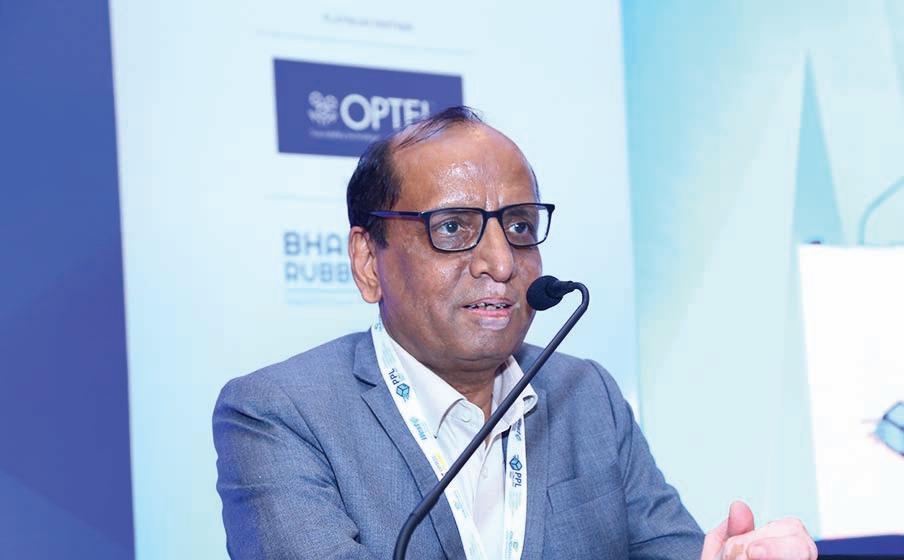
He further stated that India has the largest number of the US FDA-approved units outside of the US, and this has generated a trade surplus of $70 billion, which helped our economy to have a trade surplus
during the oil crisis.
“During the COVID-19 pandemic, people at large, in the
world, were looking at India for the cost-effective medicines and vaccines and we have deliv-
Drug Administration (FDA) is conducting audits in India, when our manufacturers are having a thought process towards changing their impor-
tant activities for export markets, particularly developed countries, then a lot of importance took place for packaging – maybe primary packaging, secondary packaging, tertiary packaging, including corrugated cartons, he emphasised..
“Primary packaging material goes intact with a product. So, it’s going to have direct interaction and impact with respect to protection against any important external influences –maybe moisture, dust particles, gases, etc. As per the regulations, one has to protect the product and potency should be retained within the item/product, as far as the requirement of a batch is concerned. It has to meet its potency till its expiry date. It should have a proper, intact quality without undergoing any degradation or damage with respect to the retainment of important potency,” he said.
ered it. There was an unprecedented collaboration between the government and the indus-
try, and that has made us an uninterrupted supply of the medicine during the lockdown. There was a special cell created between the pharma industry and the government to oversee the day-to-day operations and make sure that every hurdle in the supply of the medicine is eradicated,” he highlighted.
He concluded his talk by saying, “It is estimated that in this decade we are going to reach $120 - $130 billion by 2030. Pharma industry is growing, and is going to have a great future, but, with the growth, we will have challenges too and the challenge is sustainability. We can have sustainability only through digitisation, innovation and optimisation. Looking at the trends, we have to design packaging in a way that is biodegradable, recyclable and environment-friendly.”
December 2022 EXPRESS PHARMA 49
Dr ARamkishan,DeputyDrugs Controller (India),CDSCO Hyderabad Zonal Office
Satish Agarwal,President (Tech and Operations),Ajanta Pharma
De-risking drug development through patient administration using 4040/40G LyoTec stoppers
Prabhaharan Sankaran, Technical Account Specialist, West Pharmaceutical Services, India, talked about his company’s product, 4040/40G LyoTec stoppers that bring an aided layer of risk mitigation to any lyophilisation process. “We have followed QbD principles for the 4040 LyoTec stoppers. We have gathered the user needs from the market as well as from the patients in order to create the user requirement for the specific design of the stopper. We have also designed the systematic and science-based approach in order to develop the formulation, design the component as well as the manufacturing capabilities. With this QbD, we were able to achieve identification and can figure out as well as improve the critical

process attributes for our component. In addition, by doing statistical analysis, we were able to keep on improving our product process throughout the development journey,” he told
the audience.
Talking about the features of the product, he said that LyoTec stoppers do not stick to Lyo shelves unlike other stoppers and prevent adhesion to
the pressure plates of lyophilisation chamber. Further, these have ultra-low extractables and leachables and optimised drying properties, along with a high compatibility with steam sterili-
sation or gamma radiations.
Referring the US FDA Code of Federal regulations, 21 CFR 21194, he said, “Drug product containers and closures shall not be reactive, additive or absorptive, so as to alter the safety, identity, strength, quality or purity of the drug beyond the official or established requirements.”
He informed that 4040 LyoTec stoppers reduce one’s inherent packaging risk through ultra-low extractables and leachables– without a fluoropolymer barrier.
He also informed that West’s deep elastomer expertise and QbD approach to development of the 4040 portfolio has focussed on mitigating risk from raw material selection of the formulation to the final product.
Role of active packaging in drug development
Talking about the role of active packaging in drug development, Dhairy Sharma, Technical Sales, Cilicant, said that packaging plays a crucial role in drug development. ”Active packaging is a smart packaging solution that is functionally active, and it helps to enhance the shelf life of a package system, when used in a scientific manner. For active packaging, certain parameters need to be considered – volume of the bottle, Oxygen Transmission Rate (OTR), Moisture Vapour Transmission Rate (MVTR), RH, temperature condition and the shelf life,” he explained.
In addition, Sharma said that there are certain concerns when it comes to soft gelatin and hard gelatin capsule products because every product is unique and requires a unique solution. He also drew a comparison between moisture
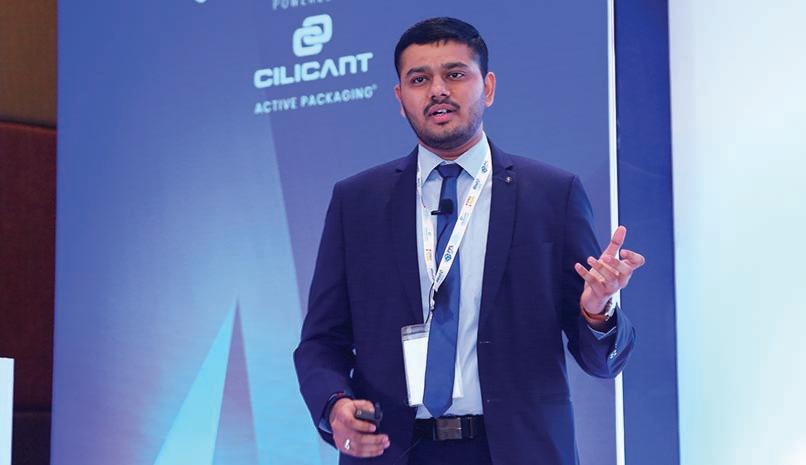
content and water activity and described the various factors associated with both of these. He informed that moisture content is the total amount of wa-
ter molecules, and is quantitative in nature, along with being a driving force that decides how one can choose the right packaging.
Later on, he explained about one of the products, Accuflip, offered by Cilicant. It is an equilibrium relative humidity (ERH) regulator that regulates
the ERH within a specified range to protect the product. It regulates the ERH to 20±5 per cent RH within the enclosed primary packaging, and prevents over-desiccation of capsule cells. It has a specialised sorbent which adsorbs and deabsorbs the moisture at the same time. Elaborating more on the relation between water activity and ERH, he mentioned that water activity is a ratio of vapour pressure of water inside the sample to the vapour pressure of pure water at the same temperature. Furthermore, pure water has a water activity of one. Therefore, in the context of pharma packaging, the reason behind dealing with ERH is to multiply the water activity by 100, and Accufilip maintains this ERH to safeguard capsules.
At last, he summed up his presentation with the statement, “Right solution at the right time is really important.”
EXPRESS PHARMA December 2022 50 cover )
Prabhaharan Sankaran,Technical Account Specialist,West Pharmaceutical Services,India
DhairySharma,Technical Sales,Cilicant
Panel Discussion: Fostering an ecosystem for pharma packaging innovation

The first panel discussion of PPL Conclave 2022 was on a very important topic, Fostering an ecosystem for pharma packaging innova tion. The panelists reflected and discussed the need for the pharma packaging industry to keep reinventing itself to meet the changing dynamics of the pharma industry. As constant innovation is becoming a prerequisite for survival and growth in any sector, these experts explored various avenues to create an environment which will encourage and foster in novation. They also examined our current growth strategies and explored new avenues.
The panelists at this discussion were Chakravarthi AVPS, Global Ambassador, World Packaging Organisation ( Moderator ); Dr A Ramkishan, Deputy Drugs Controller (India), CDSCO Hyderabad Zonal Office; Dr Saurabh Kumar, CEO, GMR Cargo; Sekhar Babu Puli, GM – Packaging Development, MSN Laboratories; SM Mudda, MD, Misom Labs; Loganathan S, AVP-Device and Packaging Development, Stelis Biopharma; and Tripti Nakhare, AVP – RA & PDD, FDC.
The discussion revolved around how pharma and healthcare sectors are undergoing a metamorphosis as a result of changing patient demands, increased investments in R&D, novel approaches to drug evelopment and regulatory policies. The experts underscored that as this transformation takes place, continuous and rapid innovation in pharma is key to deal with future opportunities and challenges, be it complex formulations, personalised medicines, emerging technologies or sustainability goals.
KEYTAKEAWAYS
However, it also addressed how constant innovation will have a direct impact on packaging and necessitate the development of newer and unique solutions. Thus, the discussion had several interesting takeaways for the pharma packaging fraternity as they navigate new challenges and try to meet the mounting expectations of the pharma industry.
December 2022 EXPRESS PHARMA 51
◆ EveryInnovation has to help mankind or else it’s not an innovation
◆ There needs to be communication between manufacturer and customer,and this is going to happen through packaging.Technologies like AI and blockchain are going to playa role in this
◆ Innovation is required with respect to the qualityof pharmaceutical products.AI is going to take the lead in this
◆ India is still quite dependent on Western countries for its packaging needs.The companies need to come up with more cost-effective solutions to get rid of this dependence
◆ The future of pharma packaging innovation should be based on patient-centricity, accompanied bya sustainable ecosystem
◆ Strengthening of technologyinfrastructure is important for the better future of the pharma packaging industry
◆ Everyinnovation has to be simple and not complex
(L-R) Chakravarthi AVPS,Tripti Nakhare,Dr Saurabh Kumar,Dr ARamkishan,SM Mudda,Sekhar Babu Puli and Loganathan S
- ChakravarthiAVPS
- DrSaurabhKumar
- DrARamkishan
- TriptiNakhare
- SekharBabuPuli
- SMMudda
- LoganathanS
Continuous and rapid innovation is key to deal with future opportunities and challenges
Latest developments in IBC 150 - Tablet inspection and reject & metal detector
Konstantin Gerbold, Strategic Product Manager – Bottle & End of Line Packaging, Uhlmann Pac-Systeme GmbH & Co. KG, Germany, in his presentation, spoke about IBC 150 monoblock by Uhlmann whose speed is up to 150 bottles per minute and up to 24,000 tablets per minute. It has an integrated and intermittent rake for bottle transport – gentle handling without jamming of the bottles, no format parts and no ramp-up phase after a format changeover.

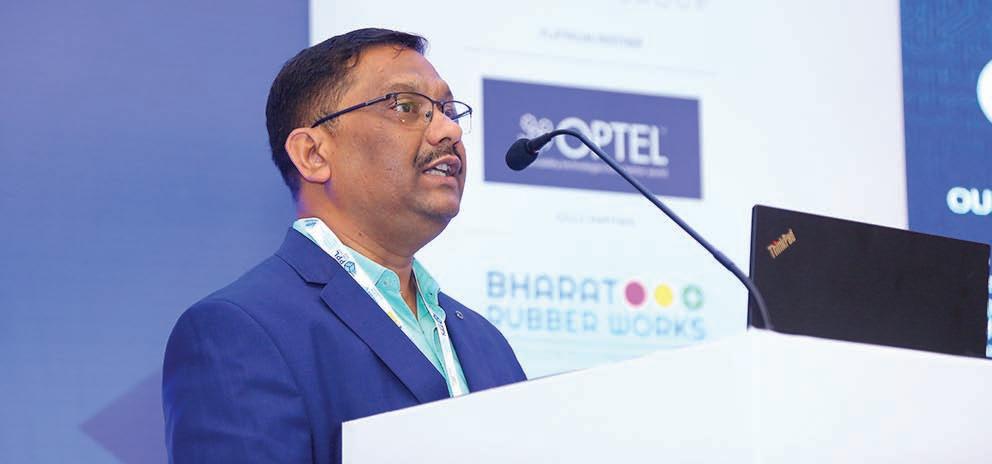
He also spoke about monoblock machine design which comprises features like bottle transport, tablet counting and feeding, tablet inspection (single tablet reject), bottle capping, bottle discharge, operating system, cleaning and resulting. “Other features also include desiccant feeding (pouches/canisters), cotton
feeding, weighing, vibrating and metal detection,'' he said.
He added, “Tablet inspection and reject system helps in detecting wrong colour, size, chips and coating defects, and one camera per counting module ensures 100 per cent inspec-
tion reliability. Inspection length ensures the best detection results, while reject verification ensures additional double check. Moreover, with traceability, a number of good/bad inspections can be set up andevaluation of good and
bad products in pieces/per cent, per counting module/feed chute also takes place. In addition, batch-related statistics on good and bad production, including error log can also be managed.”
He notified that dust on the vibrating plates causes good
products to be classified as bad, but special software mode ignores dust abrasion. He also shared information about “Innovation@Monoblock” – a metal detector by Ullhmann that is used for detection of ferromagnetic metals in a bottle. “There are three metal detectors inside the monoblock having adjustable sensitivity in the detection area. For instance, if a bottle is filled with desiccant, products and cotton, it will be lowered by a servo motor; and if metal is detected, the corresponding bottle is rejected or the machine stops,” he said.
Lastly, Gerbold underlined that Uhlmann’s monoblock machine design is innovative (smallest footprint and format change), optimised (no rampup phase, no micro stops), efficient (significantly less cleaning) and integrated (all process steps in a single system with one HMI).
Pharma world of compliance,operational intelligence and excellence
Anirudha Katekar, Director-Sales (India), Optel Group, began his presentation with a brief about his company and its track-andtrace solutions. He informed that globally, the company has over 23 per cent market share. Later, he spoke about trackand-trace demonstration cartons – carton serialisation with CartonTracker – which comprises a precise ejection system, speed of up to 400 cartons per minute and manual carton aggregation station.
He then mentioned about the multiple-layer aggregation, wherein at one of the stages, a camera (a part of the product) automatically captures the codes and the case (cartons associated to case) label. “A label can be applied with a zebra printer, or an operator can
manually apply the same,” he stated.
Furthermore, he talked about the solution design description which includes on site solution – QR code printing
and inspection, cloud solution and mobile application.
He said that its onsite solution – QR code printing and inspection further comprises serialisation (unique QR code) with
a desktop (using Optel’s OLT or FMP solution), handheld scanner for offline activities (rework/manual check, sample, batch, reconciliation report, etc and open sitemaster (L3) for in-
teracting with ERP, MES systems. Cloud solution comprises serial number generator (EPC could be GS1 based (Digilink) or non-GS1), reports and verification gateway.
Mobile application comprises verification of the QR codes on the blister and it provides product information, he notified.
Katekar also informed that Optel has millions of consumers with 25 million products tracked per year. The company is connected with 500,000 producers with 4,000 systems installed worldwide. In December 2021, it acquired the pharma ‘track and trace’ unit of Körber, expanding its presence in the European market. The company leverages, empowers and captures data for supply chain digitisation.
EXPRESS PHARMA December 2022 52 cover )
Konstantin Gerbold,Strategic Product Manager – Bottle & End of Line Packaging,Uhlmann Pac-Systeme GmbH & Co.KG,Germany
Anirudha Katekar,Director-Sales (India),Optel Group
Improving efficiencyand sustainabilityusing Industry4.0 enabled coding and printing technologies
Sandeep Vadakattu, Sr GM-Sectors, Domino Printech started his presentation by telling the audience that those who work in the pharma industry, must be using some technology or the other to ensure their products are identified in the market. So, they print batch codes, date codes, machine-readable codes, etc.

“One may use different technologies while doing this particular activity. So, what can be done as a process of continuous improvement is to utilise the latest technologies, to make products more affordable; at the same time, make your product identification so much reliable that it is trackable and traceable throughout the supply chain till it gets consumed by the patient,”
he said.
He mentioned that Domino is a multinational company with its operations in over 120 countries. “Its purpose is to apply industrial printing ex-
pertise and reliable solutions to help the world’s manufacturers be sustainable and cut waste while attracting, informing and protecting consumers. Domino provides all kinds of printing
equipment which are required right from primary packing till palletisation and the required software to control these printers, especially when a large set of printers is installed across
factories,” Vadakattu said.
Talking about the future of pharma packaging, he said, “With the strong experience we have, we strongly believe that the age of thermal inkjets for label printing is over, and it’s now more or less thermal transfer printers which are doing this job and tomorrow is of laser printers. By using laser printers, rejections will substantially come down,” he stressed.
In addition to it, he also highlighted the role of laser coding.
“Inedible codes, instant and clean coding, along with flexibility, are some of the benefits of laser coding. It is highly efficient and requires minimum maintenance, inventory management and is sustainable,” he said.
CONTRIBUTOR’S CHECKLIST
❒
Express Pharma accepts editorial material for regular columns and from pre-approved contributors / columnists.
❒
Express Pharma has a strict non-tolerance policy of plagiarism and will blacklist all authors found to have used/refered to previously published material in any form, without giving due credit in the industryaccepted format.All authors have to declare that the article/column is an original piece of work and if not,they will bear the onus of taking permission for re-publishing in Express Pharma.
❒ Express Pharma's prime audience is senior management and pharma professionals in the industry.Editorial material addressing this audience would be given preference.
❒ The articles should cover technology and policy trends and business related discussions.
❒ Articles for columns should talk about concepts or trends without being too company or product specific.
❒ Article length for regular columns: Between 1200 - 1500 words.These should be accompanied by diagrams,illustrations,tables and photographs,wherever relevant.
❒ We welcome information on new products and services introduced by your organisation for our various sections: Pharma Ally (News,
Products,Value Add),Pharma Packaging and Pharma Technology Review sections.Related photographs and brochures must accompany the information.
❒ Besides the regular columns,each issue will have a special focus on a specific topic of relevance to the Indian market.
❒ In e-mail communications,avoid large document attachments (above 1MB) as far as possible.
❒ Articles may be edited for brevity,style,and relevance.
❒ Do specify name,designation,company name,department and e-mail address for feedback,in the article.

❒ We encourage authors to send their photograph.Preferably in colour,postcard size and with a good contrast.
Email your contribution to: The Editor, Express Pharma, Business Publications Division,The Indian Express (P) Ltd, Mafatlal Centre,7th floor,Ramnath Goenka Marg, Nariman Point,Mumbai 400021 viveka.r@expressindia.com viveka.roy3@gmail.com
December 2022 EXPRESS PHARMA 53
Sandeep Vadakattu,Sr GM-Sectors,Domino Printech
The Pharma Packaging Leadership (PPL) Awards, held concurrently with PPL Conclave, is an endeavour by Express Pharma to honour innovation and excellence in the field of packaging. The 2021-22 edition of the Pharma Packaging Leadership Awards, partnered by West Pharma and powered by Cilicant, also sought to further this vision.
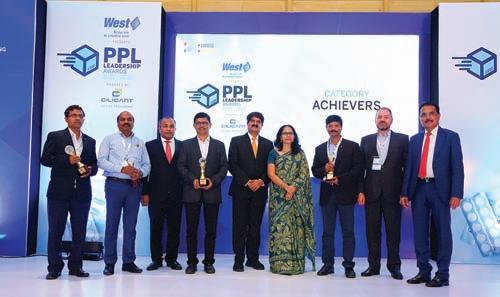
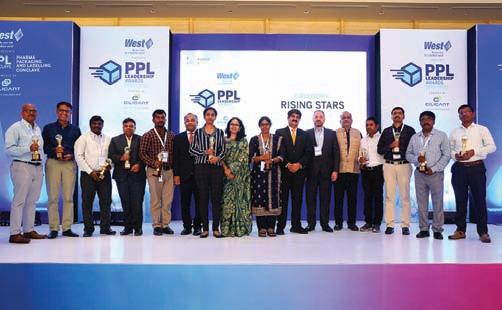

Held on the eve of September 23, 2022 at the Novotel Aiport, Hyderabad, the event kickstarted with a Welcome Address by Viveka Roychowdhury, Editor, Express Pharma. Taking the audience through the vision and mission of PPL Leadership Awards, she said, “We launched the first edition of the Pharma Packaging Leadership Awards to recognise and reward the professionals who have done exemplary work in this field. Today, it is our honour to take this vision forward with the 2021-22 edition of the Pharma Packaging Leadership Awards.”
She informed, “Last year, we met virtually rather than in person due to the pandemic but we thought it all the more appropriate to honour the professionals who have worked thru the pandemic, so that we have the medicines to keep us safe and restore good health. And tonight we will hand over the trophies to these winners. The PPL Leadership Awards remains our endeavour to recognise and reward a few of these immensely talented professionals each year, who have created and are creating an impact by their dedication, innovation and creativity.”
After introducing the jury for PPL Leadership Awards, she concluded by congratulating the Awards winners in advance. She
said, “Your work is an inspiration to all of us in the pharma sector and we wish you all the very best …Our heartfelt thanks to all pharma packaging professionals, keep up the good work
and we hope to have you with us, as winners, at future editions of PPL Leadership Awards.”
Next, Chakravarthi AVPS, Chairperson of the Jury for PPL Leadership Awards 2022, took
the stage to explain the methodology of the PPL Leadership Awards and the process of choosing the deserving winners. He informed that despite calling for nominations, the quantity of nominations received were insignificant. Hence, the Jury and Express Pharma collectively felt it was better to defer giving awards to new individuals and chose to award trophies to the winners of the previous year. Explaining that quite a few past winners are nominating themselves in the next category, he highlighted the need to evolve rules for such cases. He said that it was decided there should be a gap of at least three, if not five years between awards so
that the individual gets time to prove his or her achievements in the more senior category.
The awards ceremony followed next. Roychowdhury, alongwith Manish Jain, MD, Cilicant, and David Meyer, VP and GM - Generics, West Pharmaceutical Services presented the awards to the winners.
The members of the jury, Chakravarthi; Ajay Bapat, Pharma Consultant and SM Mudda, MD, Misom Labs also joined them in honouring the winners. (The winners who were awarded that evening are given in the box)
The evening came to close on a celebratory note followed by a networking gala dinner.
EXPRESS PHARMA December 2022 54 cover )
PPLAwards 2021-2022 honours packaging experts and game changers All winners at PPLLeadership Awards 2021-22 with the jurymembers The 2021-22 edition of the Pharma Packaging Leadership Awards was partnered by West Pharma and powered by Cilicant AWARD CATEGORY: ACHIEVERS ◆ Amol Hingane ◆ Avinash Ballal ◆ Narendra Garthe ◆ Naresh M AWARD CATEGORY: RISING STARS ◆ Ardhyang Upadhayay ◆ Harisrinu Cheboyana ◆ Kaustubh Kulkarni ◆ Kiran Kulkarni ◆ Meduri Vamsee ◆ Nikhil Kumar ◆ Pandu Danthoori ◆ Paramesh C ◆ Ravi Kamesh ◆ Sagarika Panda ◆ Surekha Chakrala
Daikyo Crystal Zenith Vial and Prefilled Syringe Solutions for Total Life Cycle Containment
Life sciences companies in India, as they continue along the learning curve, are realising that it is strategic business sense to adopt new age solutions. So, apart from fruitful discussions and deliberations, PPL Conclave 2022 also had some really informative technical sessions. One session was on Daikyo Crystal Zenith Vial and Prefilled Syringe Solutions for Total Life Cycle Containment by Vikrant Chadawar, Sr Technical Account Specialist, West Pharmaceutical Services, India.
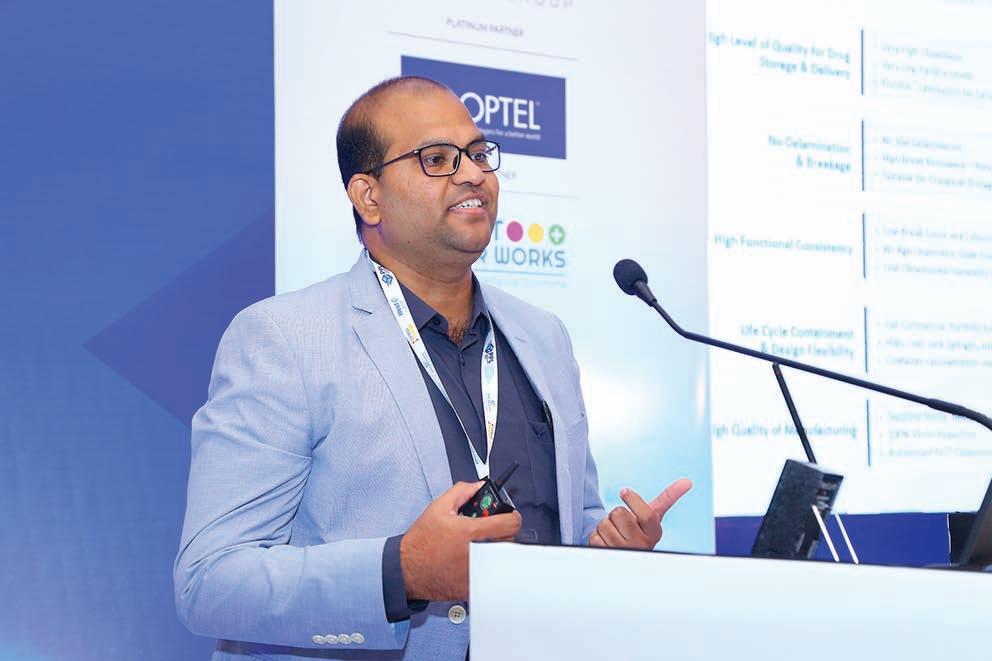
An an expert responsible for providing technical assistance to West products, processes and services, he also shared insights from his industrial experience of over 15 years in pharma industry.
Next gen developments in liquid packaging (PTC
Adoption of new-age packaging solutions and proactive approaches to gain significant value for both, businesses and consumers have emerged as an imperative for progress. Therefore PPL Conclave 2022 witnessed several sessions that highlighted advancements in pharma packaging technology and showcased solutions that can help user imp rove efficiency and productivity in this sector. One such session was on 'Next gen developments in Liquid Packaging (PTC 200)' by Peter Zeller, Technical Sales Manager –Asia Pacific, Uhlmann PacSysteme GmbH & Co. KG, Germany.
After giving an overview of Liquid Packaging (PTC 200), he elaborated on the various features of the solu-
He spoke on the solution's features and informed that Daikyo Crystal Zenith has high functional consistency, high level of quality for drug storage and delivery, as well as life cycle containment and design flexibility. Informing that the continuous manufacturing process supports high-quality crystal Zenith containers, he said over 30 Crystal Zenith products, including vials, syringes and containers for self-injection have been approved in JP, NA and the EU. He also updated about other aspects of the solution and said that the Daikyo Crystal Zenith vials are approved with commercial drugs. There is no delamination in CZ vials and these are compatible with highpH products.
200)
tion and explained its capabilities. He also explained the product's advantages and capabilities to enhance product protection, resource saving, fill control and yield etc while speaking on its applications. Pointing out that flexibility is key for parenteral packaging, he also explained how PTC 200 rates highly on this aspect.
He assured the pharma sector that his organisation, Uhlmann Group offers complete solutions for all packaging needs and can be a great partner in their progress. He also said that apart from providing product services, support services, maintenance services and training services, Uhlmann actively supports the customers in terms of sustainability and offers a full range of digital solutions as well.

December 2022 EXPRESS PHARMA 55
Vikrant Chadawar,Sr Technical Account Specialist,West Pharmaceutical Services,India
Peter Zeller,Technical Sales Manager - Asia Pacific,Uhlmann Pac-Systeme GmbH & Co.KG,Germany
Panel Discussion:
As the pharma industry continues to evolve, pharma packaging industry too has made great strides towards progress. Moving away from its traditional roles, packaging is being utilised to ensure sustainability, value-based care and patient-centric medicine. However, the sector needs to keep reinventing itself to meet the changing dynamics of the pharma industry. Therefore, in the first panel discussion on the second day of PPL Conclave 2022, a panel of experts and leaders shared their insights and views on 'Balancing cost, innovation and sustainability in pharma packaging'.
The panelists for this session were Avinash Kumar Talwar, VP - MRO & Pkg. Material Sourcing (Strategic & Plant), Global Supply Chain Management, Dr Reddy's Laboratories (Moderator); Giacomo Rinaldi, MD, Uhlmann Singapore; Prabir Das, Packaging Expert; Tripti Nakhare, AVP –RA &PDD, FDC; Manjunath Nadella, GM & Head - Packaging Development, Strides; and Hari Chittampally, DGM, Packaging Material – Purchase, Aurobindo Pharma.
As the discussion progressed, the panelists spoke on the importance of being more sustainable in the long run to contribute towards a healthier world and showcased why it is vital for the life sciences industry to be more conscious about sustainability as guardians of the world's health. They also touched upon the challenges in balancing costs with innovation in a world which is seeking high value treatments and spoke on approaches to align care with patient-centricity through packaging inn ova tions. They
rooted for systemic changes, use of novel packaging material, incremental i nnovation that focuses on usability, robust formulations to simplify packaging designs and a collaborative ecosystem in the pharma sector to spur meaningful inn ovations and changes while controlling costs.
The panelists also cited some case studies and instances to back their views and insights which helped the audience gain a better understanding of the issues under discussion. The discussion accentuated how pharma packaging has to keep evolving to keep pace with the changing demands of healthcare.

EXPRESS PHARMA December 2022 56
cover )
Balancing cost,innovation and sustainability
pharma packaging (L-R) Manjunath Nadella,Tripti Nakhare; Giacomo Rinaldi; Avinash Kumar Talwar; Prabir Das and Hari Chittampally ◆ Get packaging first time right to optimise time and cost -AvinashKumarTalwar ◆ With increasing market complexity,patient centricity,flexibilityand sustainabilityare the trends we are watching -GiacomoRinaldi ◆ Until we have a robust formulation,we cannot simplifypackaging design: PrabirDas ◆ Innovation is good,but usabilityis also important -TriptiNakhare ◆ We should not thinkof ourselves as packaging technologists,but packaging scientists, and behave like engineers - ManjunathNadella ◆ Aproper lifecycle analysis,road mapping is necessaryto optimise and reduce packaging cost -HariChittampally KEYTAKEAWAYS
in
Panel Discussion: Inclusive pharma packaging design: Need of the hour
The last panel discussion of PPL Conclave 2022 was on a very pertinent topic, “Inclusive pharma packaging design: Need of the hour.”
The experts on this panel discussion were Ajay Bapat, Packaging Consultant (Moderator); Shivaji Chakraborty, AGM, Fresenius Kabi Oncology; Chandiprasad Ravipati, GMPackaging, Aurobindo Pharma; Munindra Roy, Functional Lead-AGM Packaging Development, Gland Pharma; and Rajshri Pardeshi, Manager - Packaging Development, Glenmark Pharmaceuticals.
In the course of the hourlong discussion, the panelists highlighted why and how the future of packaging hinges on inclusivity. They shared their insights on different facets of inclusive packaging such as how it influences medication non-adherence, factors to be
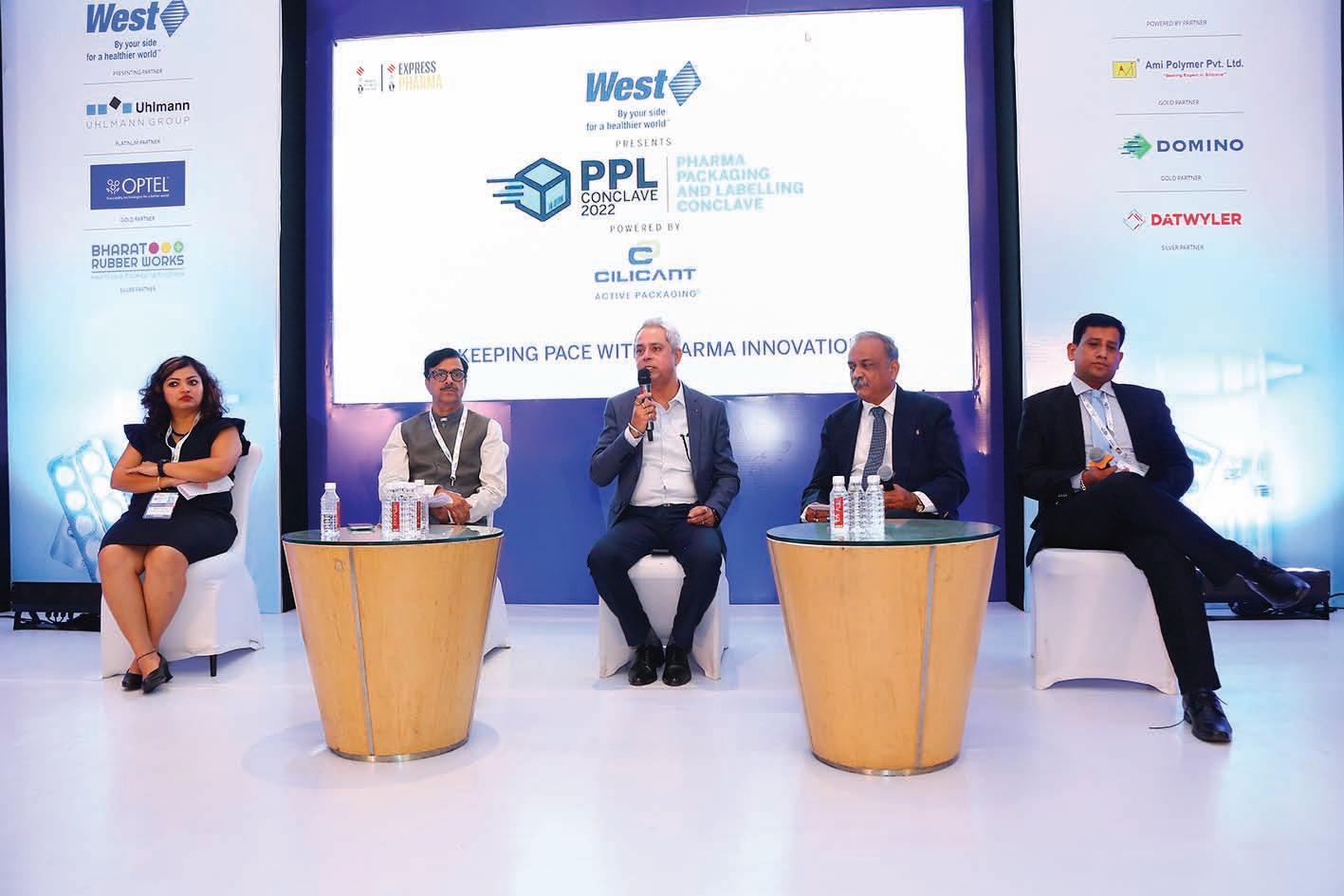
considered while designing inclusive packaging, and packaging approaches to improve functionality and aid patientadherence. Emphasising that pharma products should be made with due consideration to the culture, diversity and needs
of the population in different markets, the experts shared a few examples of inclusive packaging design and their benefits. They also discussed how inclusive packaging needs to be flexibile to suit individual preferences as well. The panelists also touched upon the advancements in drug delivery, growing phenomenon of drug/device combinations and its impact on packaging etc.
Thus, the discussion threw light on some interesting aspects such as aiding patientadherence with packaging, making communication more effective, intuitive packaging design to eliminate complexities in drug delivery, designing to serve the needs of a few but benefit many etc.
December 2022 EXPRESS PHARMA 57
(L-R) Rajshri Pardeshi,Chandiprasad Ravipati,Shivaji Chakraborty,AjayBapat and Munindra Roy ◆ Complexities need to be reduced in drug delivery - AjayBapat ◆ As the world’s population ages,it is important to leverage packaging technologies that can help medication adherence - ShivajiChakraborty ◆ Inclusivitywill be one of the keyaspects to be considered for packaging technologists,as the world ages - ChandiprasadRavipati ◆ Drug device combinations are helping packaging to become more inclusive,flexible and patient-centric - MunindraRoy ◆ Packaging must support and encourage patient adherence.Enabling effective communication through packaging is one of the ways to do it - RajshriPardeshi KEYTAKEAWAYS Panelists touched upon advancements in drug delivery, growing phenomenon of drug/device combinations and its impact on packaging
GLIMPSES OFPPLCONCLAVE 2022

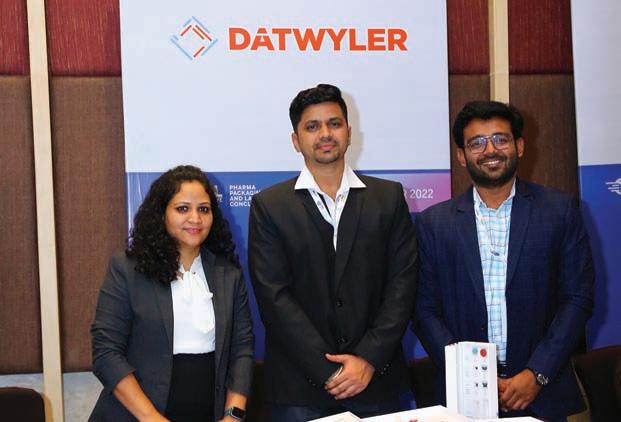


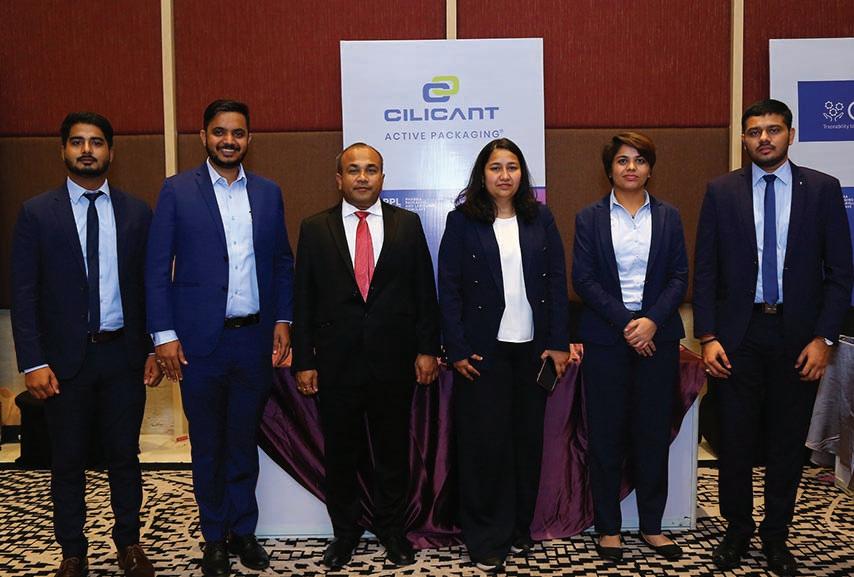
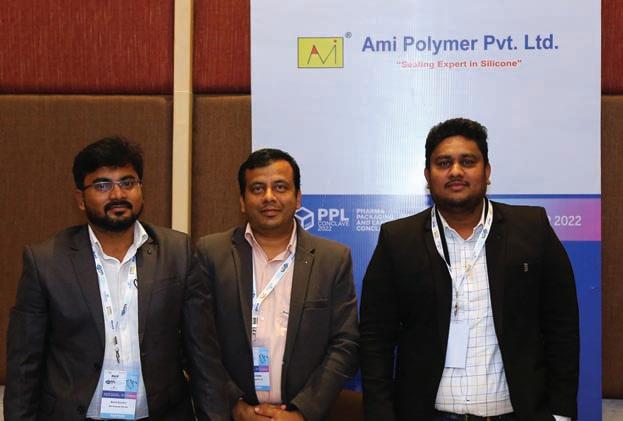
EXPRESS PHARMA December 2022 58 cover
)
GLIMPSES OFPPLCONCLAVE 2022

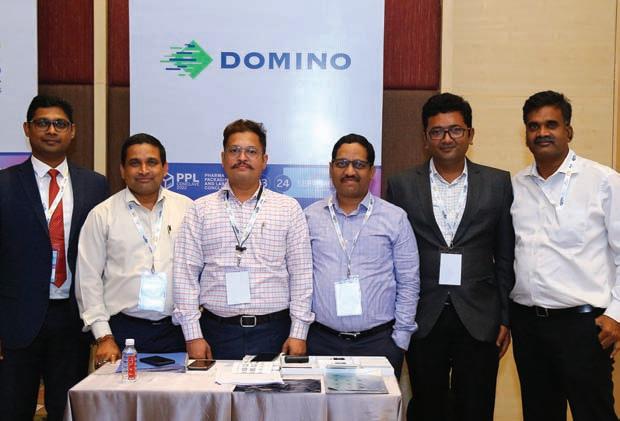
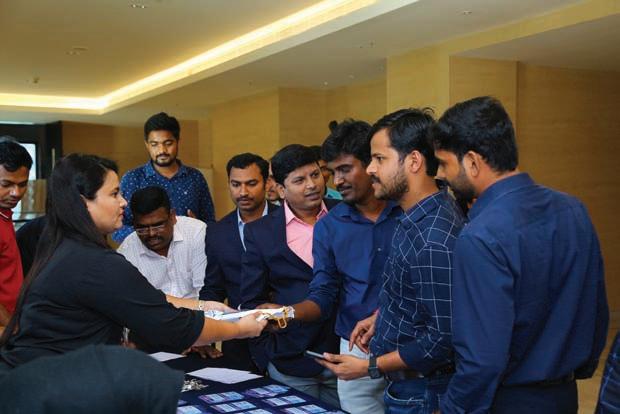
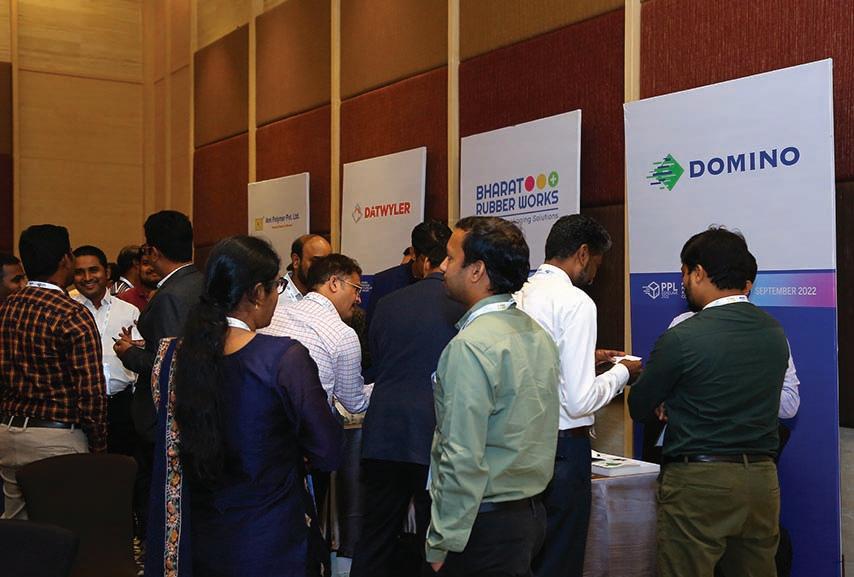


December 2022 EXPRESS PHARMA 59












PHARMA PULSE
Development of a value proposition is a vital part of our business strategy
Dev Gupta ,CEO,Sanosil Biotech,interacts with Express Pharma about the company’s offerings,focus areas,future plans,emerging markets and global trends

What are your current focus areas and why? How are they aligned with global trends?
Sanosil Biotech’s main focus currently is on addressing the disinfection needs of its valued customers by supplying them with our quality and eco-friendly disinfectants and fumigants coupled with our ready-touse range of products. We have really succeeded in this area, and frankly speaking, it really gives me a real confidence and I am optimistic that more and more customers will patronage us in terms of using our products for their disinfection needs in the coming years.
As you are aware, every player in the pharma and healthcare segment, namely, vaccine manufacturers, lifesciences, research labs, nutraceuticals, tissue culture labs, facility management teams, medical devices units, ayurvedic and herbal product manufacturers, have written documented protocols and SOPs to guide their routine general cleaning and ensure that all critical areas of the environment are regularly fumigated and disinfected to a satisfactory standard, and as per the norms. As I said above, in this area, our product finds a pivotal role for disinfection and fumigation needs to maintain a high standard of hygiene and sanitation, as per the norms.
I would like to state here that global players in the pharma industry cannot ignore India. As predicted,
India will be the most populous country in the world by the year 2050. It is also that India will make its mark as a growing market and there would be tremendous potential wherein such global players will find India as a good location for establishing their R&D as well as a location for clinical trials. Looking at these market trends, and, thereby, increasing the demand for eco-friendly disinfectants globally, I am sure Sanosil Biotech has a clear edge for its range of products.
We have seen that during the past few years, there is a growing demand for ecofriendly fumigants and disinfectants in the healthcare industry. I also would like to state here that we have a specific approach that defines strategy, operations and metrics associated with manufacturing, and, thereby, offering quality products to our customers.
What makes you an ideal partner for the pharma and nutra players? What do you offer that is unique?
At Sanosil Biotech, we provide trustworthy and ecofriendly disinfection solutions to our customers in the pharma and nutra segment, which makes us an ideal partner of their choice.
Sanosil Biotech has been a pioneer and market leader in H2O2-silver-based products segment for over two decades now, and is offering its range of eco-friendly disinfectants based on the
December 2022 EXPRESS PHARMA 61
At Sanosil Biotech,we provide trustworthy and eco-friendly disinfection solutions to our customers in the pharma and nutra segment, which makes us an ideal partner of their choice
INTERVIEW
PHARMA PULSE
same. Our technology is imported from Switzerland and has a patent pending.
Our products are trusted by some of the most discerning multinational and domestic manufacturing companies, and are commonly found in the SOPs of some of the world’s leading and most trusted brands. We have supplied groundbreaking and eco-friendly disinfection solutions for various industries including pharma manufacturing areas, hospital operating rooms, food and beverage, and agriculture, to name a few.
During COVID-19 pandemic, we have added a significant new segment to our customer-base that focussed on facilities management. Over 15 million square feet of industrial and office space has been treated with Sanosil Biotech products, helping corporate India make its warehouses and offices safe to reopen, and we continue to supply our products to this segment.
We offer our product Virosil Pharma, a single disinfectant which serves to multiple critical applications in all these related industries. Some of the areas where Virosil Pharma is used with details on dosage are as follows:
◆ Aerial fumigation: Ideal replacement for formaldehyde fumigation. Twenty per cent concentration fumigates 1000 cuft area within 60 minutes with help of a ULV fogger
◆ Surface/instrument disinfection: Apply 10 per cent solution of Virosil Pharma on floors, walls, tables and linen. Dip the instruments in a 10 per cent solution.
◆ CIP/loop system disinfection: When used in recommended dosages, it completely eliminates Biofilms.
◆ Resin and filter disinfection: Dip in a one-tothree per cent solution to control foul odour and contamination
◆ Storage tank disinfection: Spray the surfaces of the tank with five per cent solution.
◆ Linen disinfection: Wash thoroughly with five to 10 per cent.
◆ AHU/air-conditioning system: Apply as per recommendation.
What segment of your offerings is projected to have the maximum growth potential? How does this change in different countries?
As far as Sanosil Biotech goes, we foresee maximum growth potential for our disinfection product offerings used in the pharma and healthcare industry.
Besides Indian customers, Sanosil Biotech has its customer-base overseas in most of the countries in the Middle East, Singapore, Thailand, Sri Lanka and Nepal, to name a few. Our discussions and search continues to tie-up with international partners who have experience in selling and promoting disinfection products, in order to increase market share for products overseas.
India is a price-sensitive market, with a high proportion of out-of-pocket spends. So, what is your value proposition for this country?
A value proposition is a promise of value which summarises how the customer will benefit from the product delivered to him/them. At Sanosil Biotech, we clearly specify the value proposition of its products as to why a customer should purchase it, and how the value of our product is differentiated from similar offerings of our competitors. Similarly, as you know, development of a value proposition is a vital part of our business strategy, as the same provides a company with a method to influence the decisionmaking of customers.
Our customers in the pharma and healthcare
segment know microbial contamination and pollution which plays a significant role in their areas of operations. Control of microbes has always been the biggest challenge to these industries. Load of microbes are present in areas such as production, warehouse, packaging, R&D, QA/QC, filling, etc. and they are present everywhere in the air, surface, water, instruments, linens, etc. and since a very high standard of hygiene and sanitation has to be maintained in the pharma and healthcare industry, it’s important for them to opt for an eco-friendly disinfectant, to maintain a sterile environment. So, the disinfectants used should be so precise to take care of the microbial contamination, and, at the same time, it should be user- and ecofriendly product. Virosil Pharma meets all the requisite standards for the pharma industry for use in India and globally. Hence, the companies in pharma and healthcare prefer Virosil Pharma over other products.
Tell us about your recent investments/tieups/partnerships in India. How does it enhance your capabilities?
Sanosil Biotech has been working hard over these years in providing timely affordable and reliable disinfection solutions for numerous industries and expects to continue with this momentum going forward.
We have shifted our manufacturing base to a new location with added capacity to take care of our customer product requirements on a timely manner.
As regards to distribution, we have added distribution networks so as to make sure that our products are easily and quickly available to our customers. We have also enhanced our sales presence/network to be able to reach more customers for our range of products.
We are currently also in the process of launching an innovative line of ready-to-
use products. We are excited about this launch, as, for the first time, our disinfection products will now be available in the form of sprays and wipes. Our line of products stands apart from the competition in their ecofriendly safety profile.
In addition to our products portfolio, we reaffirm our commitment to our people, and continue to invest in them aggressively, to ensure personal growth at the individual level and also ensure career advancement for all.
Where do India and emerging markets feature in your plans?
The Indian pharma industry is one of the most significantly emerging markets and has been witnessing phenomenal growth in recent years and is likely to be in the top five global markets by value. From its nascent stages in the 1970s, the Indian pharma industry has become a mature industry.
India is the world's largest provider of generic medicines by volume, with a 20 per cent share of total global pharma exports. It is also the largest vaccine supplier in the world by volume, accounting for more than 50 per cent of all vaccines manufactured in the world.
India’s population is growing rapidly, as is its economy – creating a large middle class with the resources to afford western medicines. Together, these factors mean that India represents a promising potential market for global pharma manufacturers.
More than that, India has a growing pharma industry of its own. It is likely to become a competitor of global pharma in some key areas, and a potential partner in others. India has considerable manufacturing expertise; Indian companies are among the world leaders in the production of generics and vaccines. As both of these areas become more
important, Indian producers are likely to take a large role on the world stage – and potentially partner with global pharma companies to market their wares outside India.
As these pharma and vaccine manufacturers are running at maximum capacity and they rely on our product to keep their manufacturing lines disinfected and sterile, demand for our products is steadily on the rise and we are in continuous contact with our clients and customers. Our focus is to ensure they have all the necessary support they need from our end to guarantee the quality and safety on their manufacturing lines, and by extension, the critical vaccines and life-saving medicines they manufacture for the world.
What are you showcasing at CPhI this year? What are your expectations from it?
Sanosil Biotech is going to showcase its product “Virosil-PHARMA- an ecofriendly disinfectant and fumigant” which is a wellestablished brand in the pharma and healthcare industry for more than two decades now.
We would like to take advantage of the diversity of CPhI’s attendees and delegates to showcase our product lines to new and the existing customers alike. We look forward to interact with various stakeholders including, but not limited to, Director Technical/ Production Head/Research Head/ Quality QC
Persons/Micro Departments/SCMS and others.
Sanosil Biotech’s expectation from CPhI is to be able to connect with the relevant stakeholders as our customers and business partners to answer their questions and build awareness around the quality and reliability that is synonymous with our brands and newly-released product lines.
EXPRESS PHARMA December 2022 62
“PERFECTing”the package selection process
With reve rberations from the recent pandemic still in play, drug manufacturers continue to search for high-quality packaging products for their pharmaceuticals. Additionally, regulations are becoming increasingly strict in the name of patient safety. It is of the utmost concern to mitigate risks associated with those components which protect and package sensitive drug formulations. This collection of challenges is driving drug makers to search for ways to find the highest-quality, most compatible components as quickly as possible. Fortunately, companies can implement a simple checklist to successfully analyse their packaging needs and navigate through the packaging selection process.
“PERFECT”packaging systems
To “perfect” or more accurately speaking, improve a packaging system, it is critical to keep in mind the most important aspects of component selection:
◆ Particles: The presence of foreign matter, such as fibers, on or in a component set to be used with a drug product: Particles can include any foreign substances, such as fiber or dirt, that could enter the product by way of the packaging component. By washing and sterilising all parenteral drug components, companies can greatly reduce the possibility of particulate entering the drug. Companies such as Datwyler specialise in washing and sterilising rubber components that are then sold to companies ready for use, which decreases their customers’ Total Cost of Ownership (TCO) and time spent on preparing components for filling.
Drug manufacturers will want to assess their own needs
and capabilities and select compatible products. For example, a manufacturer with sterilisation capabilities may be able to purchase RfS (Ready for Sterilisation – washed, but not sterilised) products, while as a company without these capabilities may prefer RTU (Ready to Use –washed and sterilised) products.
◆ Extractables and leachables: The migration of substances from a packaging component into a drug product: These are chemicals within a packaging component that could be pulled out by the contained drug product. They also include chemicals that may be formed via reactions between the packaging and drug product. Suppliers ought to provide to their customers
lists of substances that could potentially be extracted from a given product. Customers may then be able to evaluate which leachables could be problematic based on what drug is being packaged. Drug manufacturers benefit from having potential extractables information up front so they can make an informed decision on components that may react poorly with their drug product.
◆ Regulations: Consideration of the regulatory environment in which a drug product will be marketed: As different regions have different regulations, being aware of and complying with regional regulatory bodies is a prerequisite for marketing drug products. Regula-
tions must be monitored to ensure that products align with patient safety standards. However, this must be done with respect to the region in which a drug will be marketed. For example, in China, pharma companies are still adjusting to matters concerning the Bundling Review implemented in 2016 by the China Food and Drug Administration (CFDA) (comparable to the Food and Drug Administration (FDA) system in the US). Prior to this, there was a less-strict licensing system for packaging materials in this region.

In addition to parenteral drug manufacturers maintaining alignment with regulations, suppliers must also comply with these regulations, and they can support their customers by providing parts that will be compatible with those regulations. By choosing a supplier who aligns with and prioritises core regulations, drug manufacturers can be assured their products will follow the highest standards required.
◆ Functionality: Different for every type of product: Functionality may include qualities such as break-loose and glide forces, stopper pop-up, ability to perform in certain storage conditions and more. Typically, functionality assesses a complete system of products. It refers to how a drug manufacturer’s components interact with other pieces of their system. When purchasing a component for the first time, drug manufacturers must take time to test all components simultaneously to ensure a fully functioning system. Some functionality requirements for elastomer products may include:
Vial Stoppers
■ Stopper twinning (preventing)
■ Stopper pop-up (preventing)
■ Coring and fragmentation
■ Multipuncturability
■ Performance at low (cryo) temperatures
■ Compatibility with sterilisation processes, including, but not limited to steam sterilisation and/or gamma sterilisation
Syringe and cartridge plungers
■ Break-loose forces
■ Glide forces
■ Orientability
■ Movement during transportation
■ Performance at low (cryo) temperatures
■ Compatibility with sterilisation processes, including, but not limited to steam sterilisation, gamma sterilisation, and/or ethylene oxide sterilisation
◆ Engineering capabilities: Similar to machinability: This criteria analyses the compatibility between a companies’ fill-finish lines and the component in question. “Engineering capabilities” (similar to manufacturability) refers to how components move on a fill/finish line. For example, a component that is under-lubricated may stick to machining lines, resulting in a cessation of fill/finish until operators can resolve the issue. However, over-lubrication can result in excess residue on lines and in the end-product, creating unnecessary particulate.
To ensure components will run successfully at a drug manufacturer’s plant, newlypurchased components must go through Factory Acceptance Testing (FAT) and Site Acceptance Testing (SAT.) While FAT requires the supplier to run a product through testing at the site where a filling machine is made, SAT requires testing at the drug manufacturer’s final filling site. Both tests aim to mitigate problems on the final fill line at a drug manufacturer’s site and address potential issues well before that stage. Companies
December 2022 EXPRESS PHARMA 63 PHARMA PULSE
Gabrielle Gehron,Scientific Support Manager,Datwyler,explains how one can successfully analyse packaging needs and navigate through the packaging selection process
PHARMA PULSE
who have established fill/finish lines may prefer to use components that will require only minor adjustments to their lines, when possible, across all of their projects.
◆ Container closure integrity: The prevention of migration of product into or out of a system through ensuring dimensional compatibility of the components within that system: Container Closure Integrity (CCI) is the ability for all components to fit together properly and seal fully, p reventing the transfer of any substances into or out of the system. CCI can be evaluated theoretically prior to committing to a product; this is done by calculating the interference between the rubber component and its (typically glass or plastic) container, and (for vial systems)
by calculating the theoretical overhang length of a seal used to cap a vial and stopper. Experimentally, many forms of testing exist to evaluate the CCI of a system, including Helium Leak and Dye Ingress. If CCI is not verified, drug products could become contaminated, adversely effecting patient outcomes and risking consumer confidence.
◆ Total quality: An analysis of the quality needs of a given project, and the capabilities achieved by a given product or process: This can encompass wash processes, sterilisation, defect limits, particulate levels, compliance testing, vision inspection systems, and more. Quality is a critical aspect of ensuring that a product meets the standards required by both regulatory bodies and in-
ternal business guidelines. Many companies have entire departments dedicated to setting and maintaining quality standards, and to ensuring that their suppliers do the same.
Potential areas to prioritise may include:
■ wash process requirements
■ sterilisation process requirements
■ defect limits
■ particulate limits
■ per-batch particulate levels
■ per-batch compliance testing

■ per-batch dimensional testing
■ vision inspection systems
■ equivalency documentation
In an environment awash with complications from the COVID-19 pandemic, increasing regulations and higher-
quality standards, the pharma industry must continue to serve patients and caregivers. When drug manufacturers are better able to understand and evaluate their packaging components, they gain agency and confidence in their decisions.
“PERFECTing” the packaging selection process can be made easier by beginning with a dedicated checklist and partnering with reputable suppliers. By implementing these measures, pharma companies can achieve increased success and overcome whatever challenges still lie ahead.
About Datwyler
Datwyler is focusing on highquality, system-critical elastomer components and has leading positions in attractive global markets such as health-
care, mobility, general industry and food & beverage. With its recognized core competencies and technological leadership, the company delivers added value to customers in the markets served. With more than 20 operating companies, sales in over 100 countries and more than 7,000 employees Datwyler generates annual sales of more than $1,000 million. Within the healthcare solutions business area, Datwyler develops, designs, and manufactures solutions for injectable packaging and drug delivery systems to facilitate customers to create a safer medical environment of tomorrow. Looking back onto more than 100 years of history, Datwyler is a reliable partner, now and in the future! The company has been listed on the SIX Swiss Exchange since 1986 (se-
Understanding Medium Chain Triglycerides (MCTs)
In the pandemic-ravaged era where every industry strives to maintain its position in the market, pharma wins at sustaining its credibility and significance. The emergence of myriad of supplements and medical remedies in all forms is deemed to be the major factor in contributing to the surge of its demands. New ingredients are introduced to aid the formulation of pharma products with enhanced and better properties. One of those is Medium Chain Triglycerides 60/40 (MCT 60/40) which IOI ECM, Malaysia, is proud having produced.
This versatile liquid comes from esterification of glycerin and mixtures of caprylic (C:8) and capric (C:10) fatty acids. Its versatility covers the applications in injection, ingestion and topical usage. One key feature of MCT making it favourable to be used is its excellent solvent characteristics. It is able to solubilise most of the oil-soluble ac-
tive drug ingredients for optimum product functions. It also promotes good blending capac-
ity where active ingredients will be evenly dispersed and distributed throughout product with-
out disrupting the texture and sensorial properties -- being neutral, inert and stable in physical composition making it advantageous as well where MCT would not interfere products’ final appearance, be it colour and odour. In the case of medical cream used for topical applications, many formulations would incorporate MCT as a carrier as it does not only solubilise, but promotes hydration and moisturisation on the skin for optimum ingredients’ penetration into the skin. This is attributed by MCT’s emollience property that promotes and enhances skin’s natural moisture barrier. Besides that, MCT is commonly used as injection excipient to carry active ingredients via parenteral administration. It has also been used for oral ingestion where it was incorporated into popularsoft gel capsules.
One thing that is interesting about MCT is it does not only provide aid and assistance in
carrying active ingredients, but also possesses health benefit that our body can reap off. It is proven through medical research that MCT has significant nutritional and functional properties that would attribute to overall body’s well-being. Rapid absorption for energy usage is one of the amazing wonders purported by MCT which is endearing to athletes who are always in need for high energy for rigorous activities. Infants with malabsorption defaults would be benefitted with MCT, as well as it provides instant and substantial energy and nutrients for further growth.
MCT continues to unravel breakthrough in pharma industry as it does not only fix to a specific formulation, but it can be manipulated into many sorts of application. This level of versatility makes MCT one of the most sought-after raw material, especially in creating up-todate formulation to satisfy the needs of consumers.
EXPRESS PHARMA December 2022 64
Nafeez Zaiforllah,Marketing Executive,IOI Esterchem (M) Sdn Bhd,Penang,Malaysia,explains the advantages of using Medium Chain Triglycerides (MCTs)
Environmental-related sustainability: When values and business strategyalign
Dago Caceres,Global Strategy Director,IFFPharma Solutions,explains how sustainability is one of the most critical standards his company takes into consideration

At IFF Pharma Solutions, (formerly DuPont Pharma Solutions) our commitment to sustainability is a journey of continuous improvement that requires a holistic approach, and an ongoing dedication that stems from deeply held values. While more than 90 per cent of the products in our excipient portfolio come from naturally-derived sources, we have put in place a comprehensive and ambitious strategy to increase our sustainability efforts and contribute to make the world and the local communities we operate in, a better place. This approach can be divided into four fundamental pillars:
1. Sustainable solutions: We are dedicated to drive environmentally- and socially-conscious innovation. To deliver on these commitments, we expect 100 per cent of our innovations to include a sustainability value proposition.
2. Climate and planetary health: We have set goals to protect the planet for future generations, including zero waste to landfills, championing water stewardship and achieving a 50 per cent reduction in greenhouse gas emissions by 2030. As part of this plan, we are also working towards our ambition to become net zero by 2040 and net carbon-positive by 2050.
3. Equity and wellbeing: We are committed to unleash the potential of our people and strengthening local communities by increasing the number of People of Colour (POC) in management positions to 40 per cent, and the number of women in management positions to 50 per cent.
4. Transparency and ac-
In terms of sustainability benefits,our alginate harvesting takes only a small portion of seaweed per harvest—a harvest vessel typically catches only a quarter of the seaweed each time,which means most of the seaweed is left untouched
countability: We will continue to adhere to the highest ethical standards by holding our leaders accountable. To
achieve this, we will increase transparency of our annual ESG disclosures, annual ESG key performance indicators
for executive compensation and expand ESG governance at the Board of Directors’ level.
Sustainability is one of the most critical standards we take into consideration. By implementing a global sourcing strategy to secure critical ingredients, we can support our various natural plantbased product lines. For example, our wood pulp sources have third-party certifications for their forestry practices and/or wood sourcing chain of custody practices. In this way, customers can rest assured that some of our most popular product lines—including Avicel® and METHOCEL™—are produced in an ethical and responsible manner.
Our seaweed-based products have gained popularity for a wide range of applications, including thickening and stabilisation. Gelcarin® and SeaGel® offer customers a gelatin-alternative made from carrageenan for gummies and soft capsules, respectively. Another substitute for gelatin, Aquateric®, is sourced from brown seaweed and can reduce unpleasant flavours and odours while protecting APIs from the stomach’s acidic environment.
Likewise, our primary pectin-based offering, GRINDSTED®, can match or exceed the sheen of gelatin to appeal to consumers. To create GRINDSTED®, a vegan alternative to gelatin for gummies and hard capsules, IFF sources pectin from the peels of oranges and other citrus fruits.
Ingredients made with marine brown seaweed alleviate GERD by minimising the exposure of the oesophagus to
acidic refluxate. Due to alginates’ high gel properties and their synergistic actions with other formulation ingredients, they work to create a floating gel mass (called a “raft”) over the stomach contents. This prevents stomach contents from refluxing back to the oesophagus, resulting in decreased heartburn and local irritation.
In terms of sustainability benefits, our alginate harvesting takes only a small portion of seaweed per harvest—a harvest vessel typically catches only a quarter of the seaweed each time, which means most of the seaweed is left untouched. The plants that are captured by the trawl are mostly mature, leaving young seaweed plants behind to grow rapidly with greater access to sunlight. This allows fish and marine organisms to still find sanctuary, even in fields that have been recently harvested. In line with current local regulations, four to five years must pass between harvests, ensuring the re-establishment of seaweed beds before the next harvest can take place. For context, this is in stark contrast to the practice of logging, which can leave forests decimated and barren for years.
And finally, IFF keeps its cellulose sustainable by continually evaluating raw material suppliers across the globe to ensure that sustainability standards are met. We only partner with suppliers that have established sustainability initiatives, as well as strong environmental, health and safety policies to actively improve their impact on the environment and the communities they serve.
December 2022 EXPRESS PHARMA 65 PHARMA PULSE
Shimadzu “Living Laboratory”workfrom anywhere
The Shimadzu “Living Laboratory”is an ecosystem of the world’s most advanced technologies, which are powered by the world’s most intelligent algorithms and data analysis tools called Living Algorithms,and provides the user with the world’s most intuitive data accessibility platforms. Purushottam Sutar,Deputy Manager- LC/LCMS,Customer Support Centre,Shimadzu Analytical (India),explains more

Shimadzu is always working on addressing the pain points of the customers by providing solutions to save time and boost productivity. The “Living Laboratory” concept provides advanced instrumentation, automated workflows and complete data management that will not only turn laborious task into efficient and high-throughput processes, but also offer the flexibility to Work from Anywhere. The Shimadzu “Living Laboratory” is an ecosystem of the world’s most advanced technologies (called Living Instruments™), which are powered by the world’s most intelligent algorithms and data analysis tools called Living Algorithms (Algos) and provides the user with the world’s most intuitive data accessibility platforms (called Living
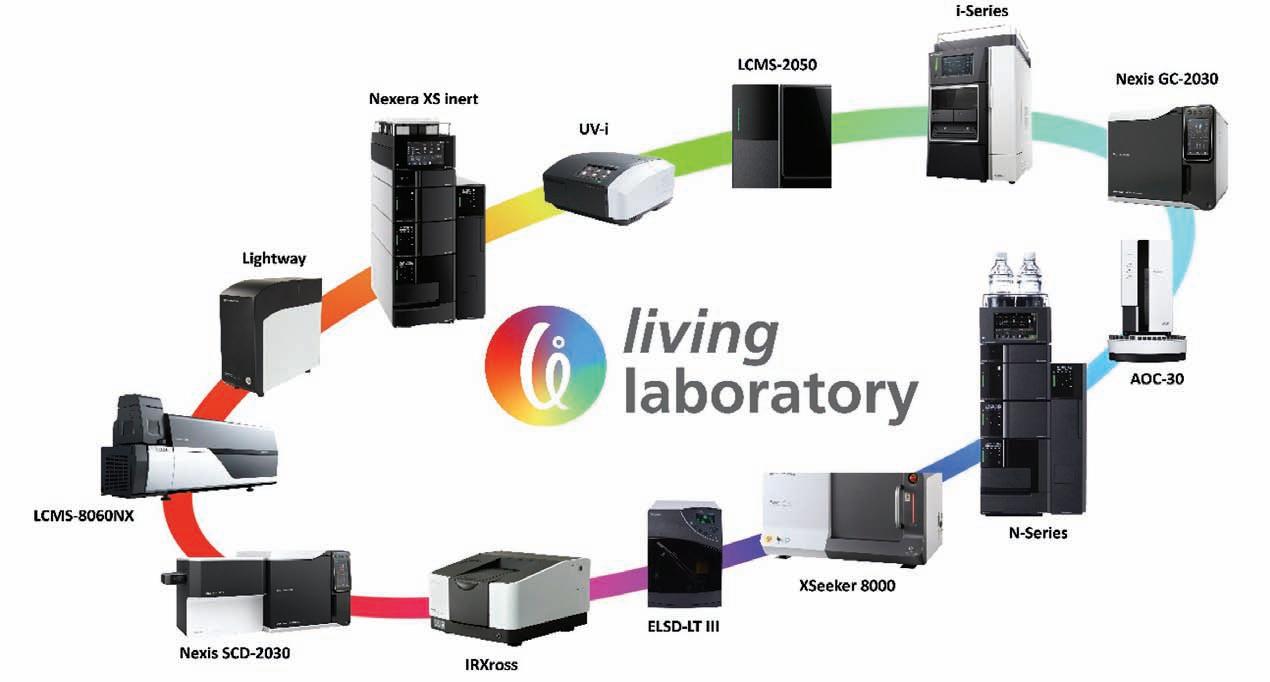
Analytics).
The pandemic has transformed our lives and livelihoods forever. It has led to a huge technology acceleration or tech-celeration and digital transformation of all businesses. During these challenging times, when travel and working from the lab was severely disrupted, we all realised the dire need for work flexibility.
Times now call for an analytical environment that can deliver identical results regardless of whether the analyst is present in the laboratory, is working from home or working from anywhere in the world. Shimadzu “Living Laboratory” offers autonomy and complete work flexibility.
◆ It features the most advanced technologies and innovations
◆ It has the core components: Living Instruments, Living Algos and Living Analytics
◆ It is the culmination of over 145 years of ‘Excellence in Science’
Living Instruments™
Living Instruments™ are an emerging wave of technologies that incorporate the dynamics of
human life in technology. Some examples of Living Instruments™ are the world’s first Living LC and the world’s first Living GC. All these Living Instruments™ have autonomous operation and can accomplish complex functions by themselves without any human intervention.
Living Algorithms™
If Living Instruments™ are the brains of the Living Lab, Living Algos are the backbone and the central nervous system that provide the world’s most powerful algorithms and data analysis tools to the users. Following years of cutting-edge research and software development, Shimadzu developed some of the most advanced software, applications, platforms and tools for
the end user such as: ◆ Analytical Intelligence (AI); LabSolutions BiX; LabSolutions MD, ◆ Peakintelligence™ ; i-PDeA IIIntelligent Peak Deconvolution Analysis, ◆ i-PeakFinder; Open Solution... among several others.
Living Analytics
Living Analytics provides the world’s most intuitive data accessibility platforms to help the users completely digitise all of their lab processes with the help of accurate asset analytics, user analytics and project analytics.
In a nutshell, “Living Laboratory” offers the most advanced technologies, unhindered data accessibility, powerful data analysis, accurate reporting and comprehensive work flexibility.
EXPRESS PHARMA December 2022 66 PHARMA PULSE
Regulations in pharma industryand LIMS
At an international level, one of the most important regulations for the pharma sector is 21 CFR Part 11 “Electronic Records; Electronic Signatures; Final Rule,” issued in 1997 by the US Food and Drug Administration (FDA). Although more than 25 years have passed since its publication, it is more relevant today than ever before, with the accelerated introduction of software for handling instruments, performing process automation, the use of mobile devices and more. The COVID-19 pandemic has pushed the industry to ensure remote access to laboratory personnel in a highly secure and compliant fashion.
Application
The pharma industry is subject to the highest standards and regulations, nationally and internationally. These regulations are intended to guarantee the safety, quality and effectiveness of products and processes. In this article, we will look at how Labware’s Laboratory Information Management System (LIMS) is a fundamental tool for facilitating compliance with these regulations.
In a pharma regulatory context, an electronic record is the set of information, which includes electronic data (text, numeric, graphic) that is created, modified, maintained, archived, restored into, or transmitted through a computerised system. The purpose of 21 CFR Part 11 is to guarantee the authenticity of electronic records and define how the electronic signature can have the same legal implications as a handwritten signature. Compliance with 21 CFR Part 11 can be categorised into three types of controls (refer Fig1).
Let’s look at some examples of each of the control types above using three spe-
cific clauses in 21 CFR Part 11: 11.10 (j) “The establishment of, and adherence to, written policies that hold individuals accountable and responsible for actions initiated under their electronic signa-
tures, in order to deter record and signature falsification.”: This is often addressed via an administrative control, by having employees sign an agreement (or updated employment contract) which
state that they understand that an electronic signature is the legal equivalent of a handwritten signature. The company will also have a corporate-wide policy for 21 CFR Part 11.
11.10 (i) “Determination that persons who develop, maintain, or use electronic record/electronic signature systems have the education, training and experience to perform their assigned tasks.”: It is important for an organisation to have procedural controls such as SOPs and guideline documents, which require personnel to be properly trained for their job function.
11.10 (f) “Use of operational system checks to enforce permitted sequencing of steps and events, as appropriate.”: LabWare LIMS includes technical controls to ensure the logical sequence of events. For example, a LIMS sample must be received before a result can be entered.
Sometimes, a mixture of administrative, procedural and technical controls is used to satisfy a requirement. For example, the requirement for staff training is covered by administrative controls such as employment contracts and procedural controls like training SOPs. In addition, LabWare LIMS includes technical controls that can manage the user training, including testing, grading and certifying the user. Once the user is certified for a specific action, they would be able to perform said actions within the software and relevant data. If the user’s training expires or becomes obsolete, LabWare LIMS can prevent those actions by that user until they have been successfully re-trained.
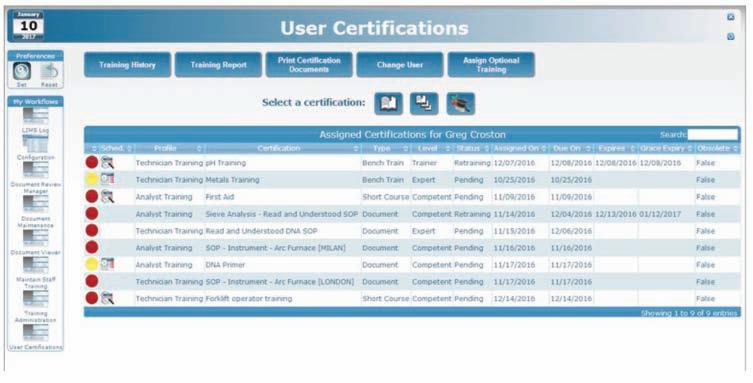


Conclusion
Regulatory compliance represents a challenge for companies in the pharma sector. Administrative and procedural controls are necessary for compliance, and using technical controls can strengthen compliance whilst introducing efficiency improvements. It is essential to have technological tools such as LabWare LIMS in order to continuously meet regulatory requirements.
Contact: infoindia@labware.com to request a functional demonstration of our LIMS system and find out why we are the LIMS par excellence of the pharma industry in India and the world.
Visit at: www.labware.com
December 2022 EXPRESS PHARMA 67 PHARMA PULSE
regulations are intended to guarantee the safety,quality and effectiveness of
and processes
types of controls in 21 CFR Part 11
staff training in LabWare LIMS Fig3.Maintaining user certifications in LabWare LIMS
The
products
Fig1.Three
Fig2.Maintaining

BUSINESS AVENUES EXPRESS PHARMA December 2022 EXPRESSPHARMA 68
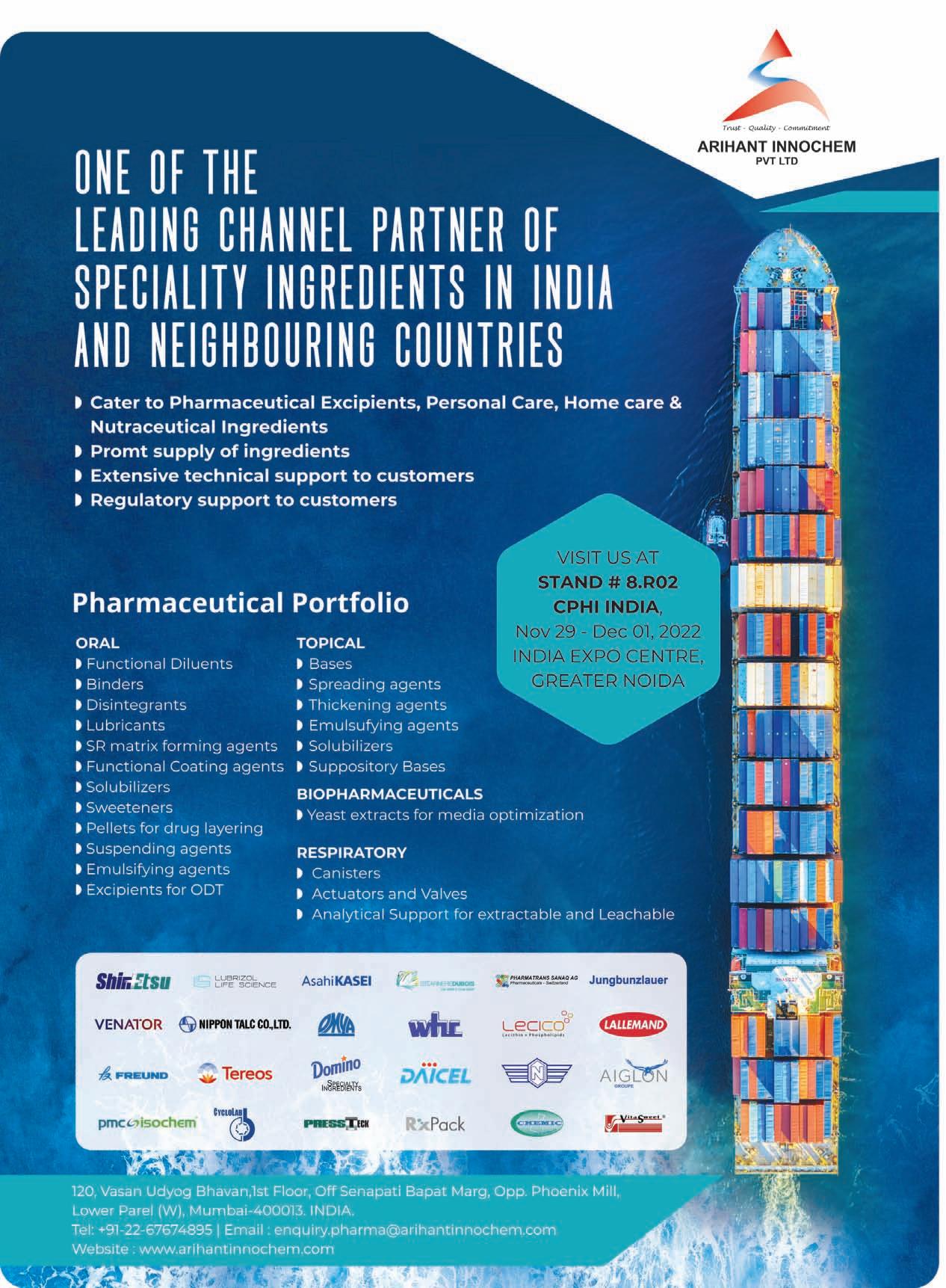
BUSINESS AVENUES EXPRESS PHARMA EXPRESSPHARMA December 2022 69
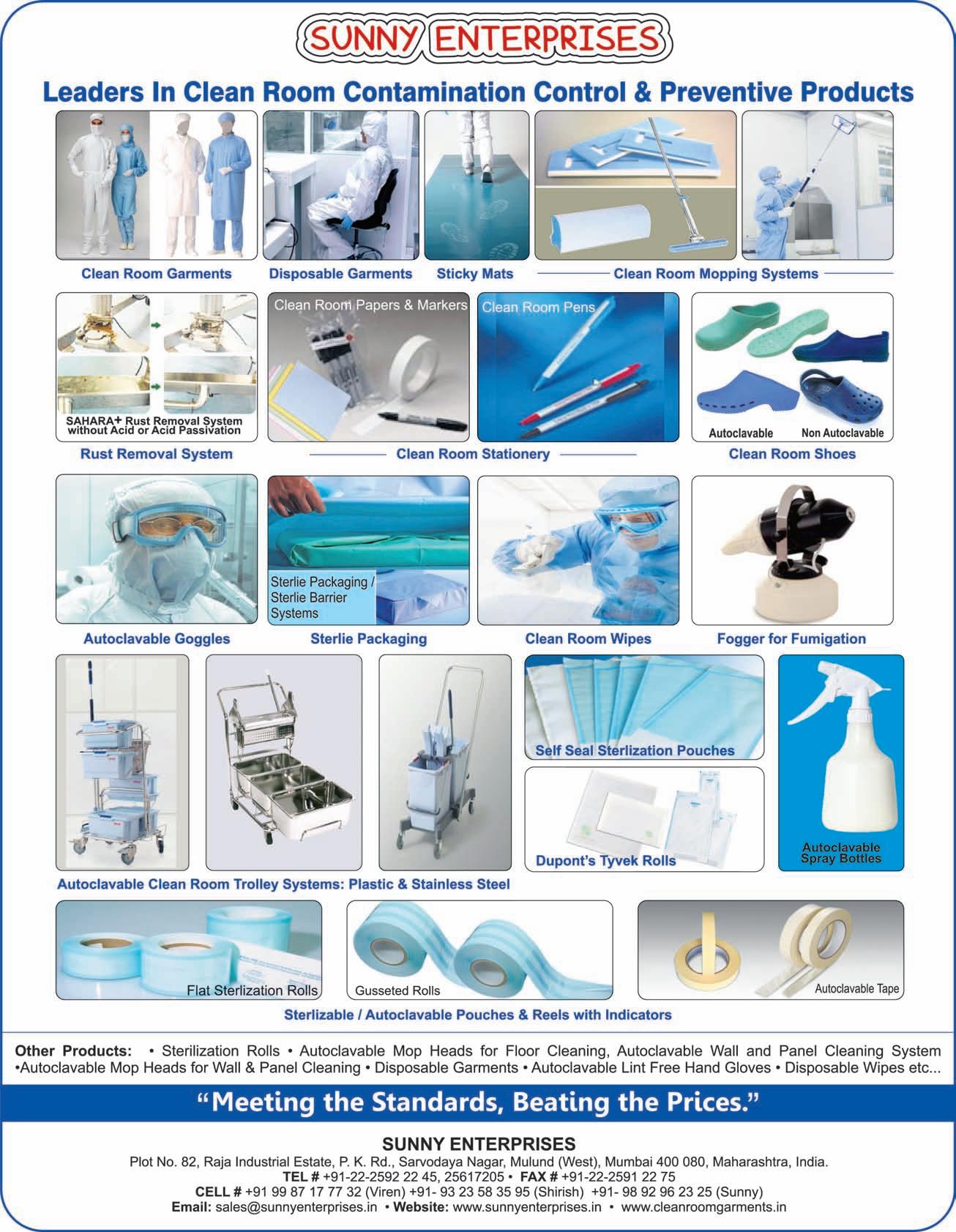
BUSINESS AVENUES EXPRESS PHARMA December 2022 EXPRESSPHARMA 70
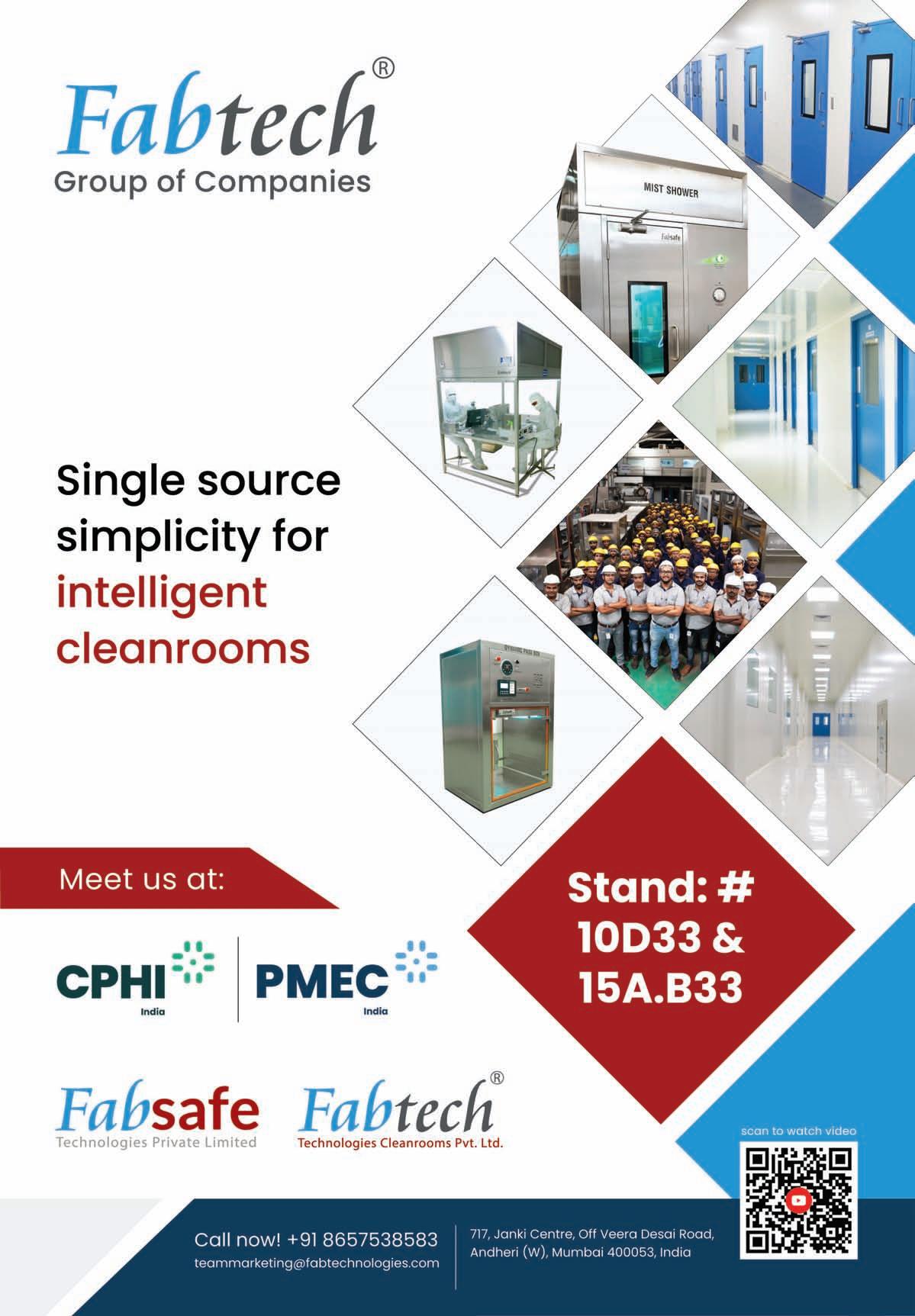
BUSINESS AVENUES EXPRESS PHARMA EXPRESSPHARMA December 2022 71
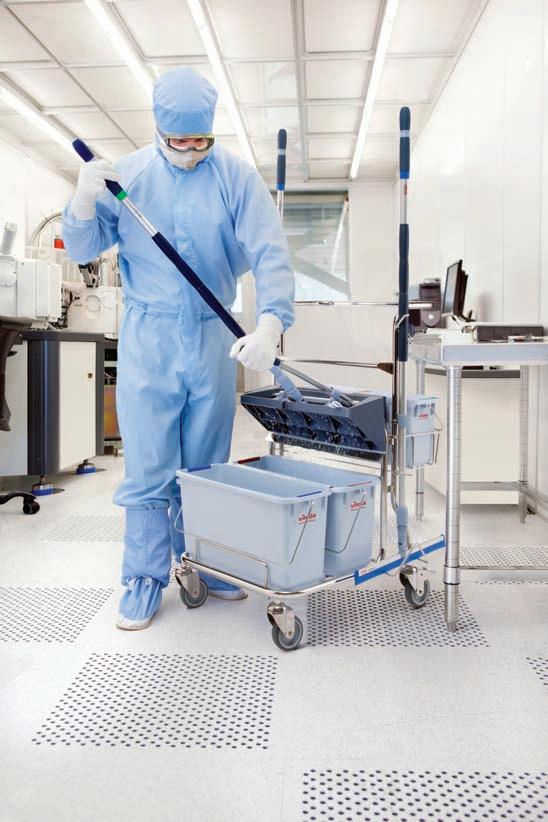
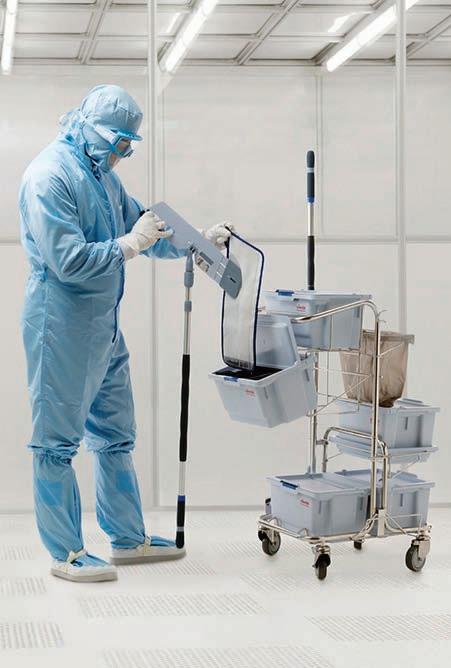
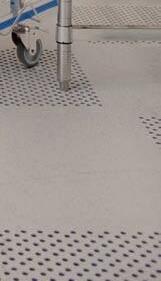






ADVANTAGES OF PRE-PREPARED TROLLEY System over BUCKET TROLLEY System B902 / 903 / 904, O2 Galleria, Minerava Industrial Estate, Mulund (West), Mumbai - 400 080 Cell : +91-8976610332 Website: www.vileda-professional.com l Email: prasad.crg@fhp-ww.com The pre-prepared method is exactly what it says – every mop and cloth required for that days’ cleaning is prepared in advance with the correct amount of water and customers validated disinfectant. another pre-prepared mop is placed on the frame for use in the next room/area/surface. The used mop is then placed into a Today´s Cleaning Innovative Pre-prepared 3 No Heavy buckets 3 No Cross-contamination 3 > 50% less consumption of water and chemicals 3 High on ergonomics 3 Sustainable 3 Microfibertechnologie 3 Small footprint of trolley´s BUSINESS AVENUES EXPRESS PHARMA December 2022 EXPRESSPHARMA 72
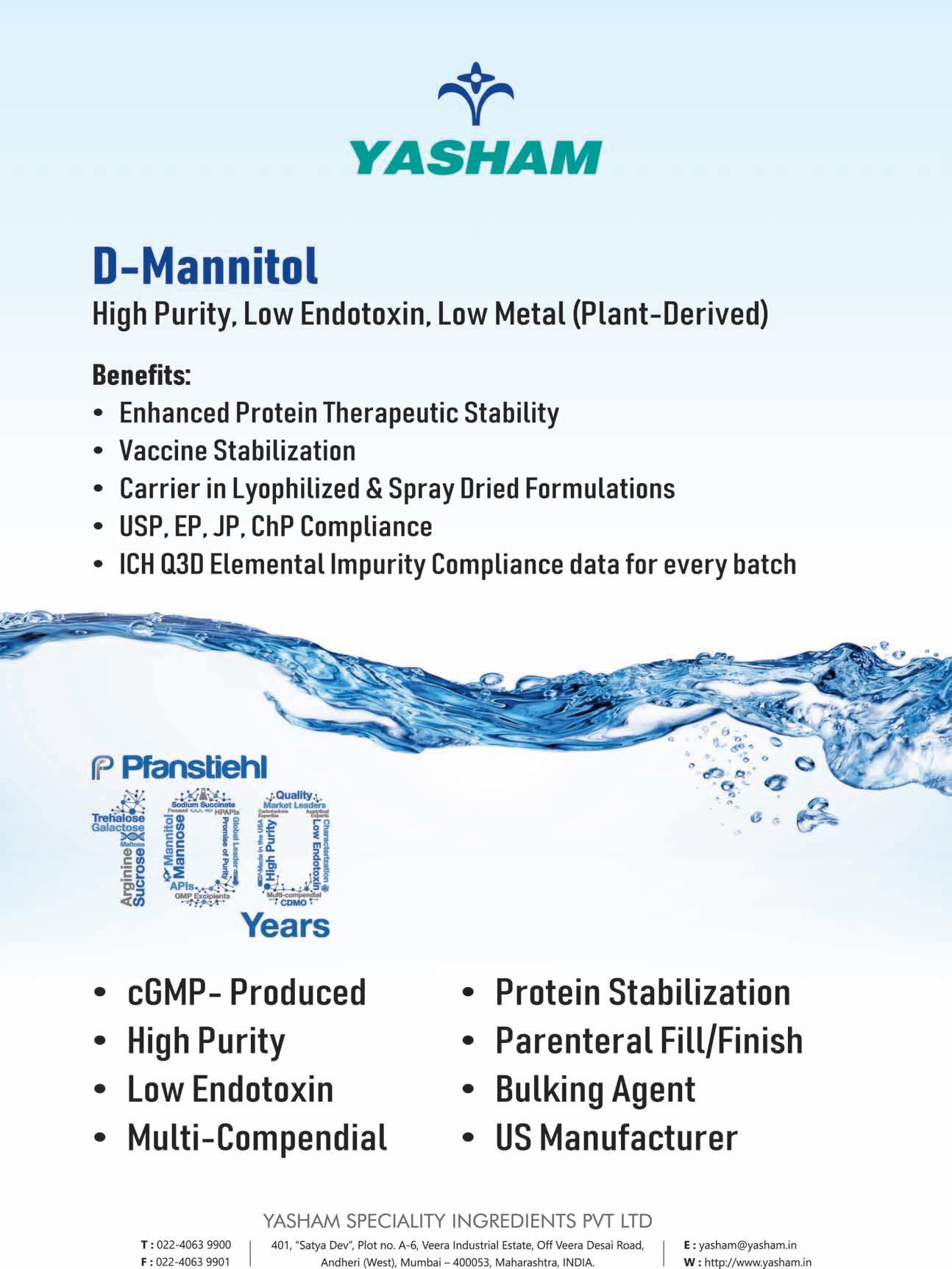
BUSINESS AVENUES EXPRESS PHARMA EXPRESSPHARMA December 2022 73


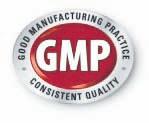
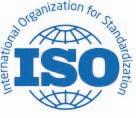
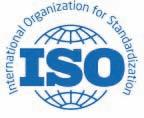







BUSINESS AVENUES EXPRESS PHARMA December 2022 EXPRESSPHARMA 74
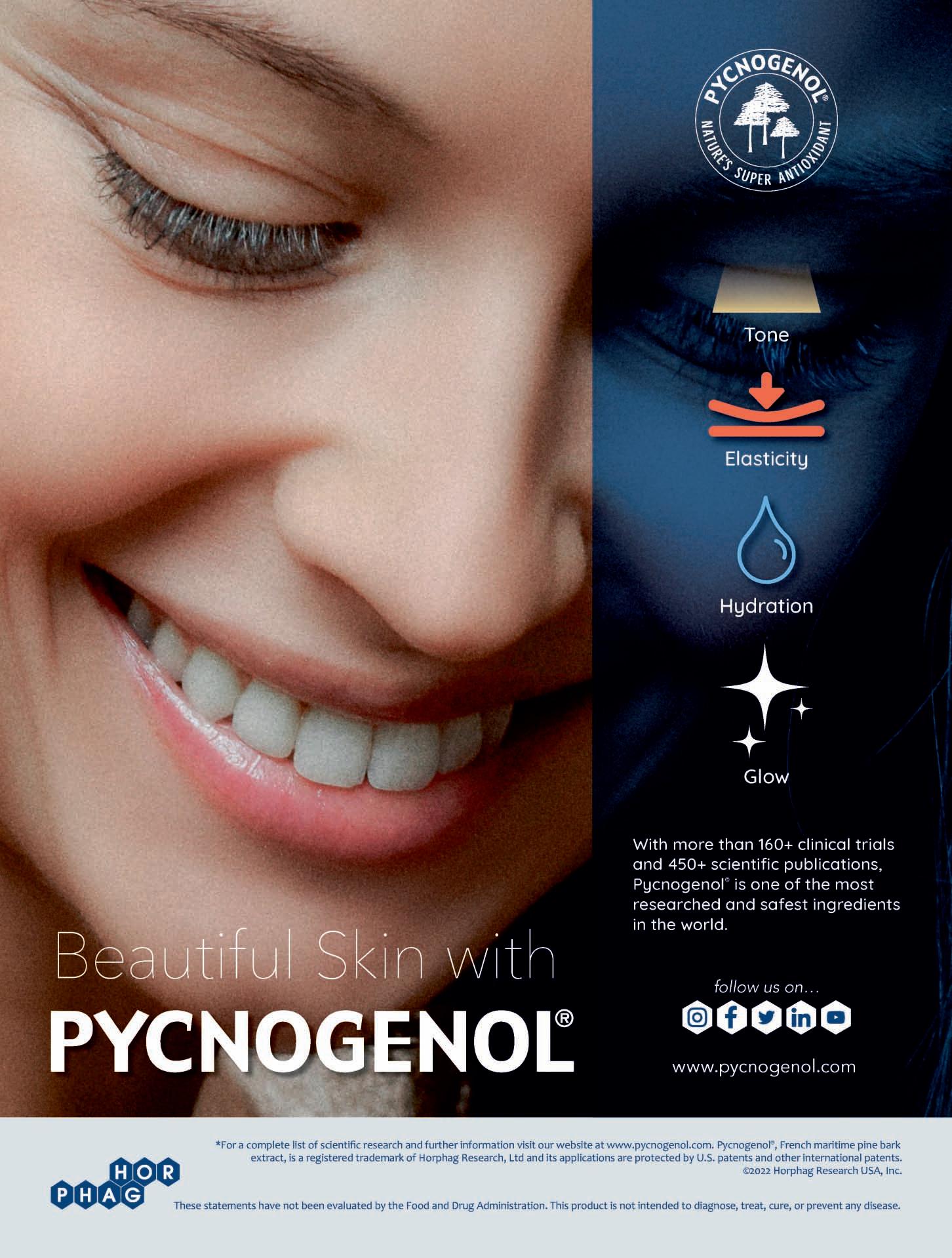
BUSINESS AVENUES EXPRESS PHARMA EXPRESSPHARMA December 2022 75

BUSINESS AVENUES EXPRESS PHARMA December 2022 EXPRESSPHARMA 76
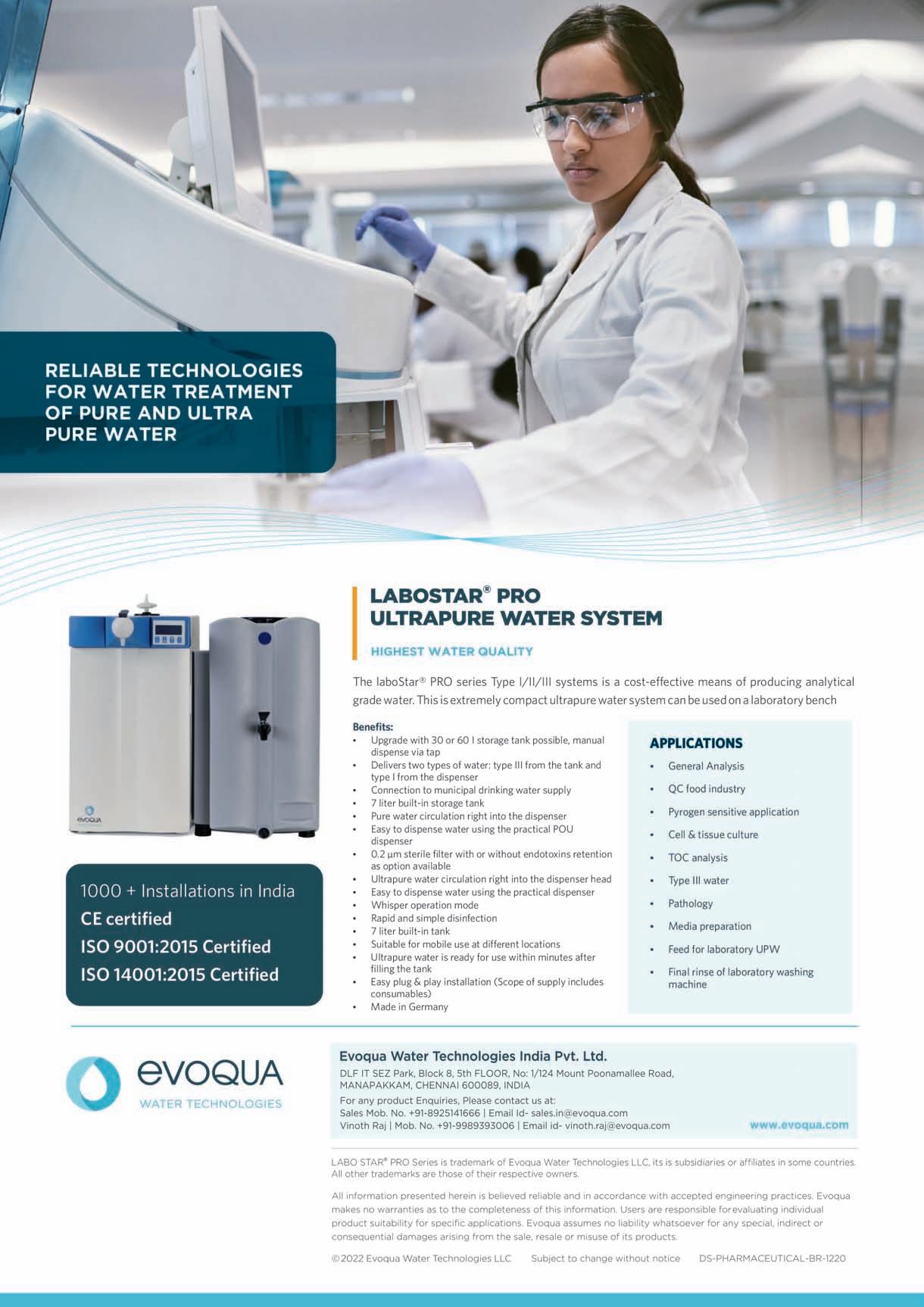
BUSINESS AVENUES EXPRESS PHARMA EXPRESSPHARMA December 2022 77
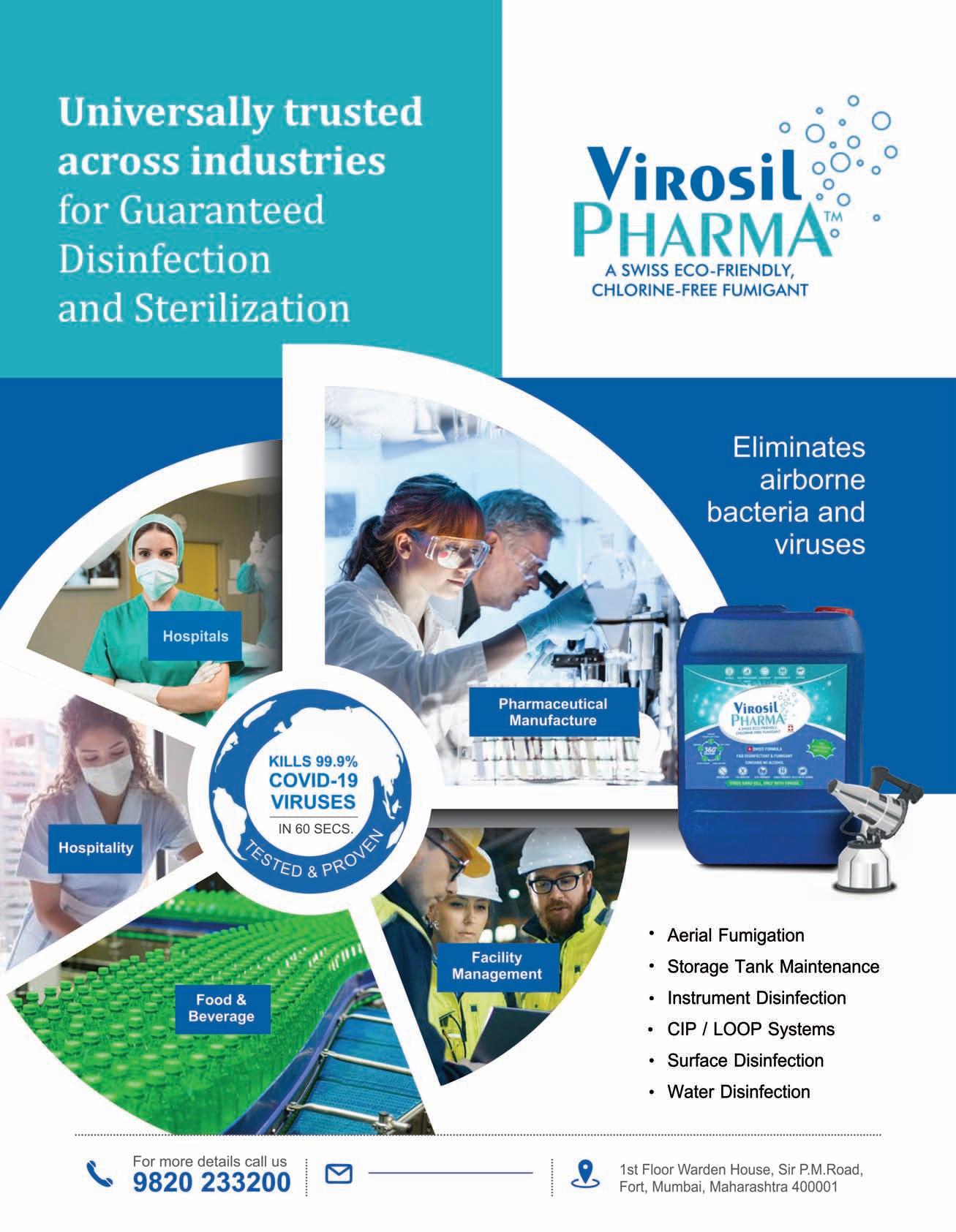
BUSINESS AVENUES EXPRESS PHARMA December 2022 EXPRESSPHARMA 78
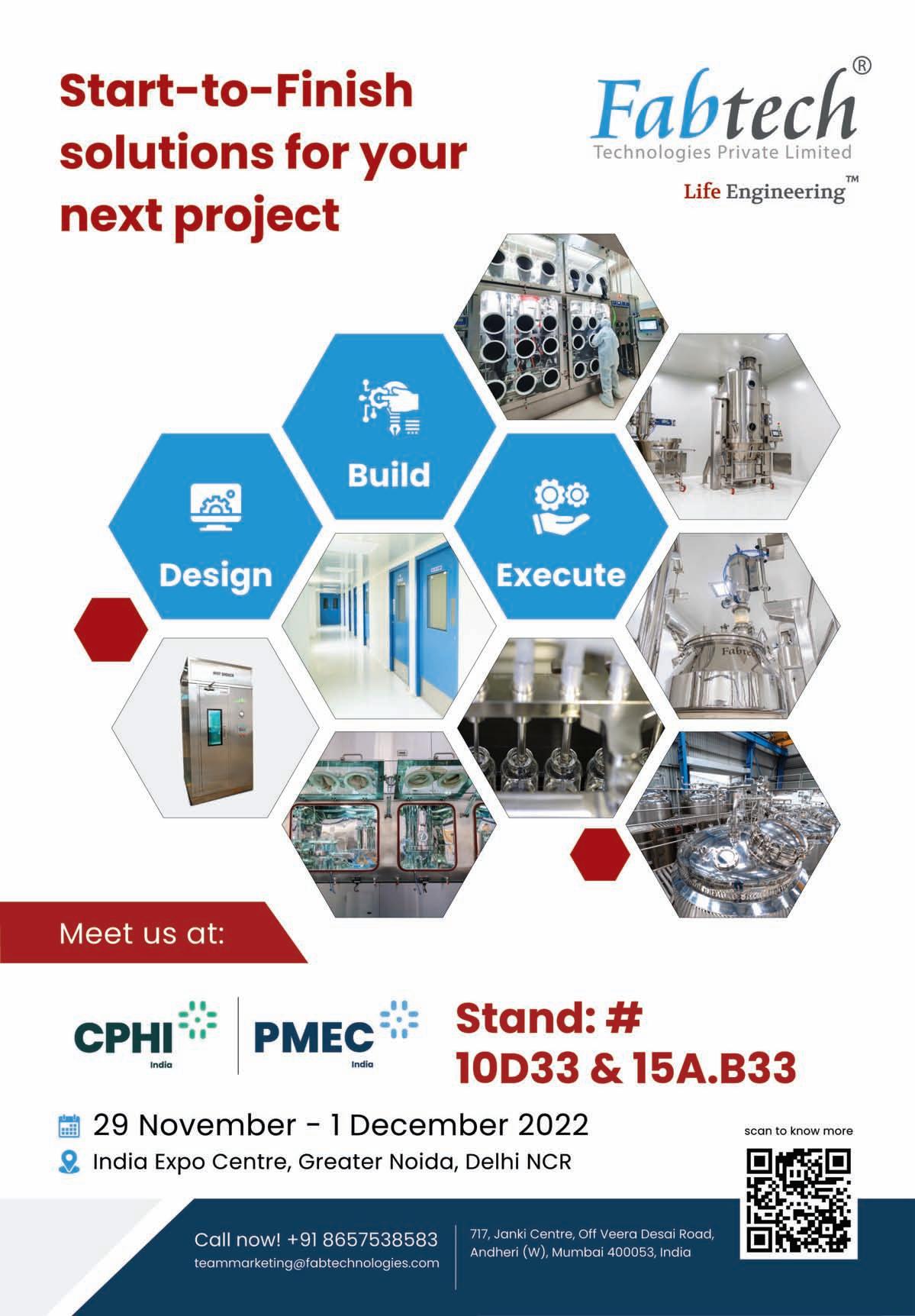
BUSINESS AVENUES EXPRESS PHARMA EXPRESSPHARMA December 2022 79
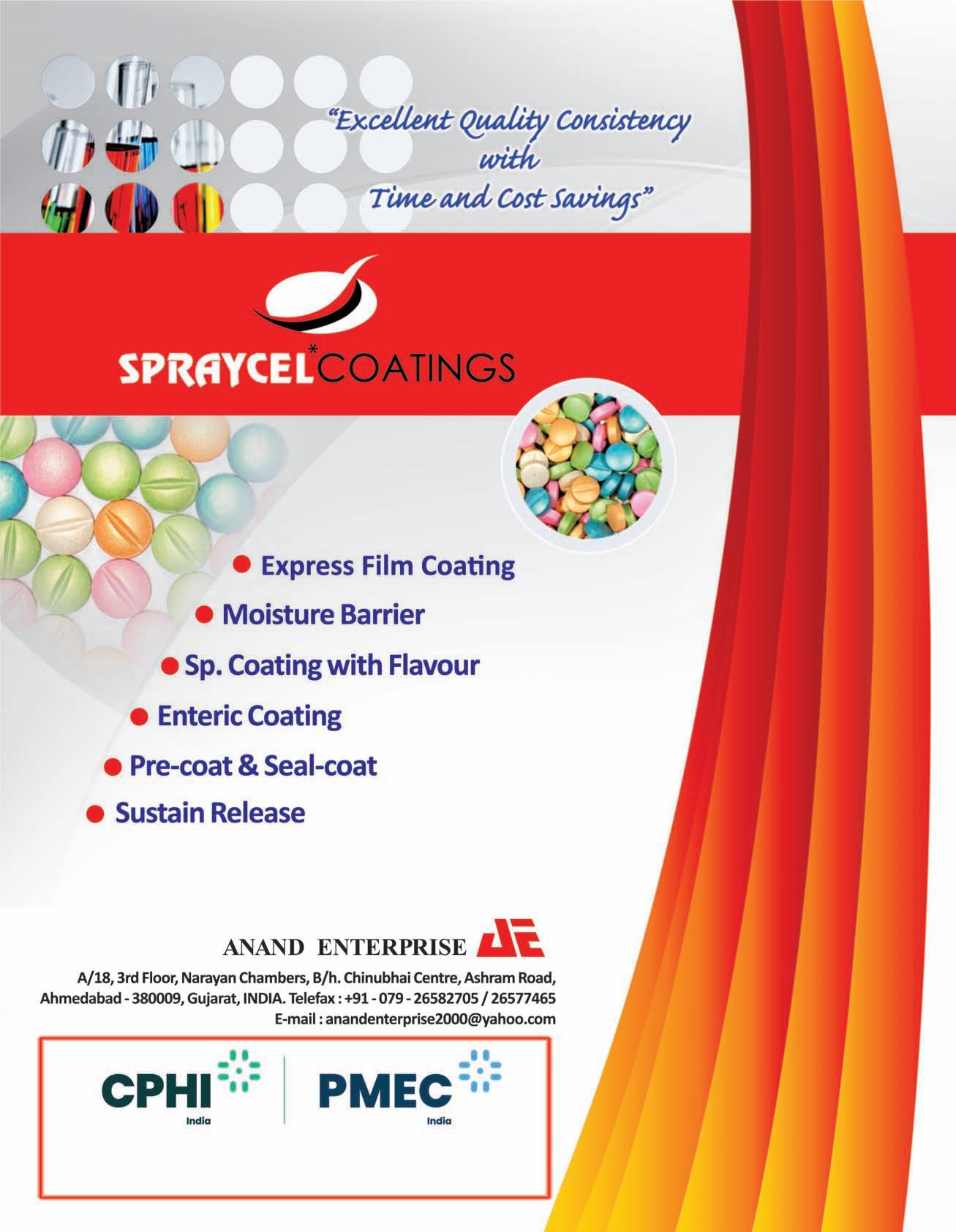
BUSINESS AVENUES EXPRESS PHARMA December 2022 EXPRESSPHARMA 80

BUSINESS AVENUES EXPRESS PHARMA EXPRESSPHARMA December 2022 81

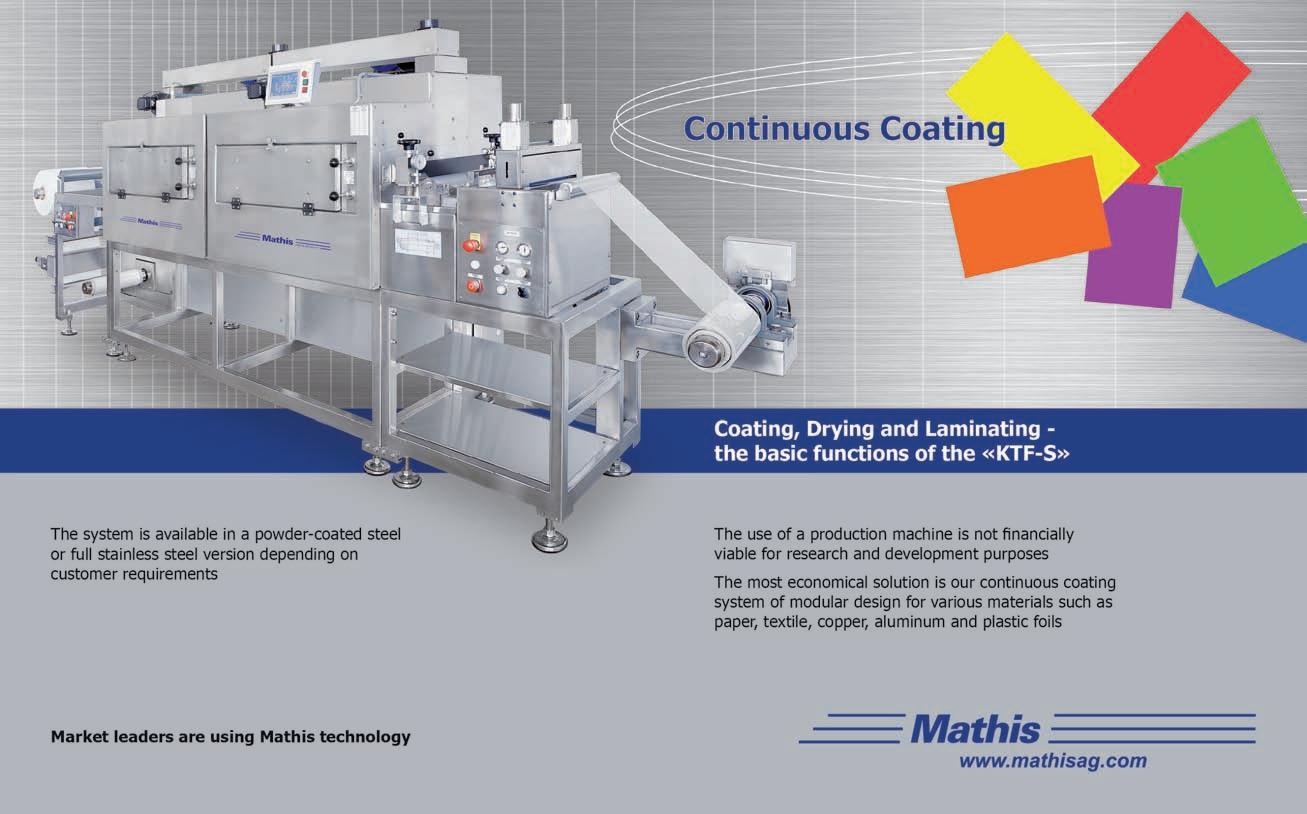
BUSINESS AVENUES EXPRESS PHARMA December 2022 EXPRESSPHARMA 82

BUSINESS AVENUES EXPRESS PHARMA EXPRESSPHARMA December 2022 83
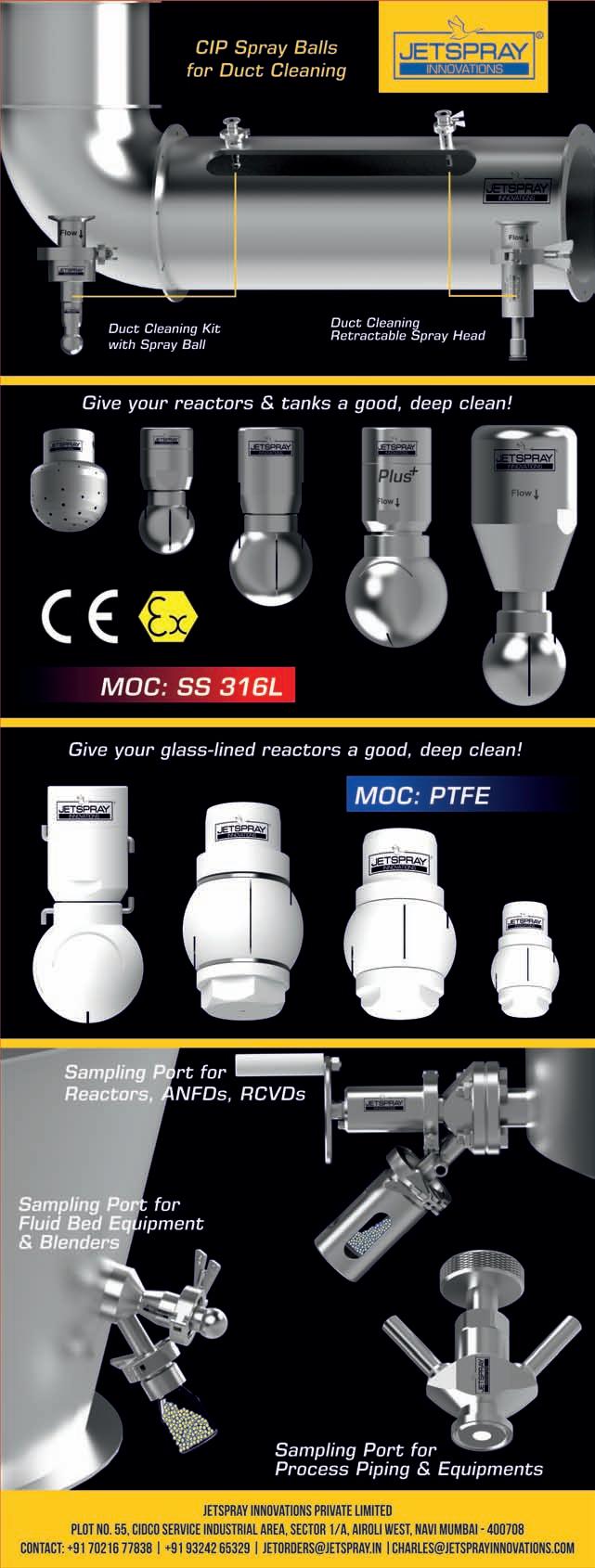
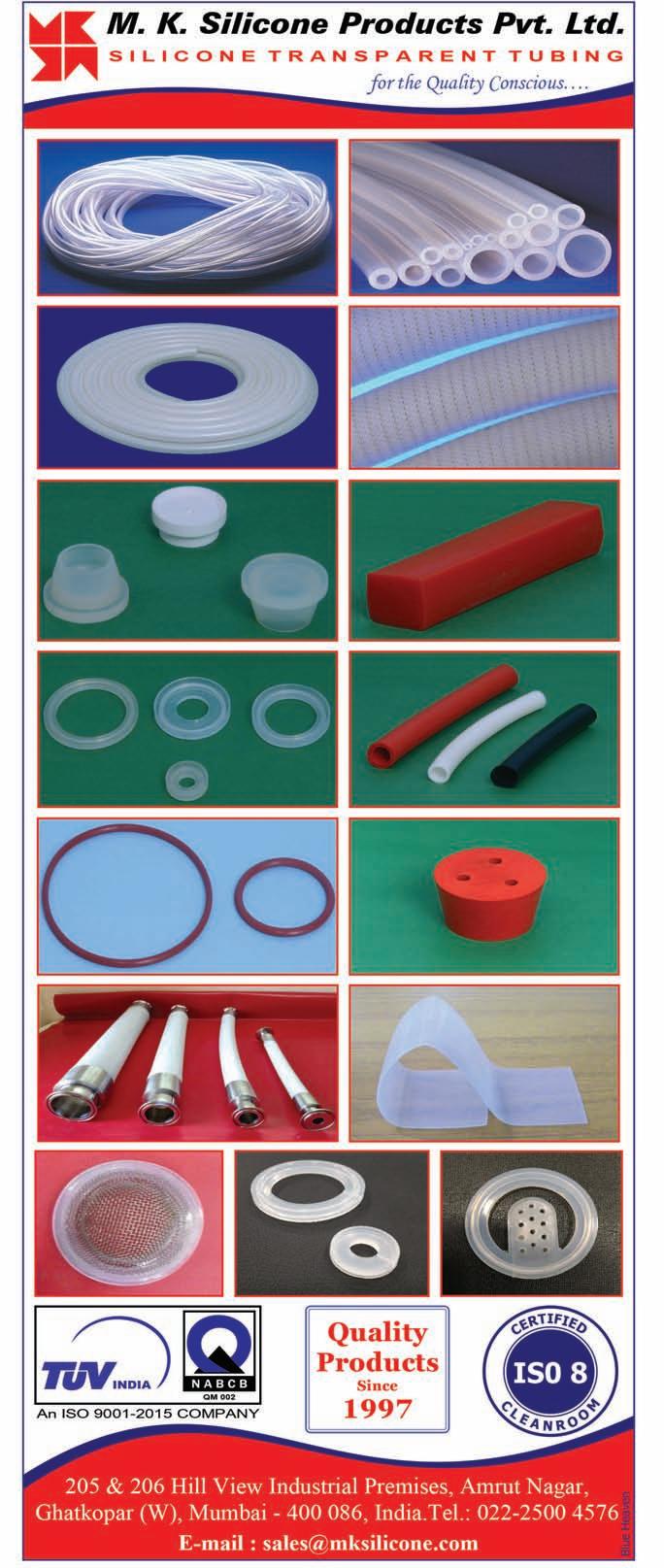
BUSINESS AVENUES EXPRESS PHARMA December 2022 EXPRESSPHARMA 84
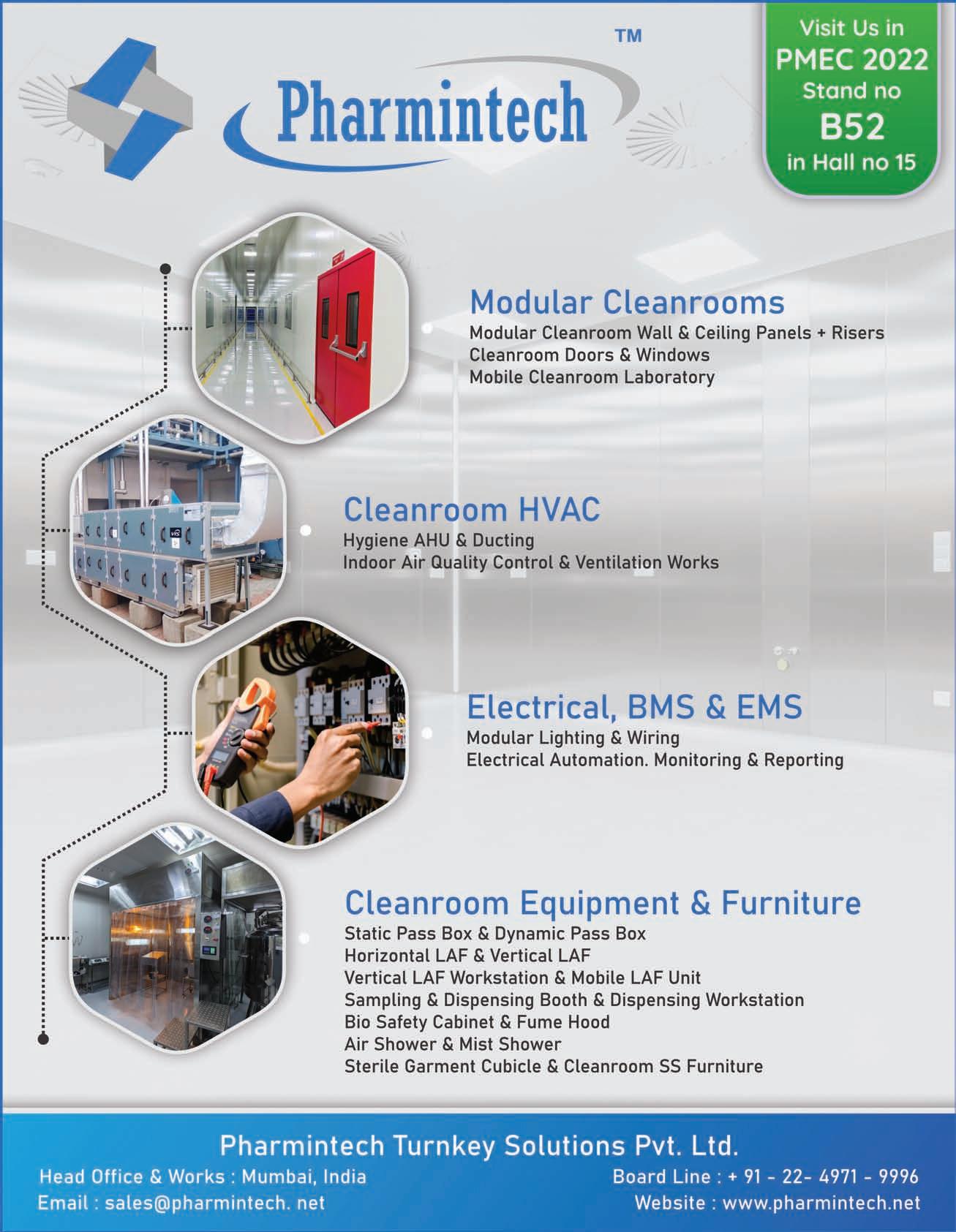
BUSINESS AVENUES EXPRESS PHARMA EXPRESSPHARMA December 2022 85
KumarprocesshasdesigneduniqueNon-agitated typeNutscheFilterswhichcanbeusedforfiltrationof antibiotics,vitamins&pharmaceuticalproductsin sterilerooms.ConventionalNutschefiltersusePP /Polyestercloth,whichcouldreleasefibersleadingto productcontamination.Weoffercleanable,nonfiber/particlereleasingSinteredSS316Lfilterdiscs. Thisisamajoradvantageinapplicationsrequiring filtration of antibiotics, vitamins etc. in ster ile rooms whereordinarycentrifugecannotbeusedanduseof conventionalfilterclothisruledout.
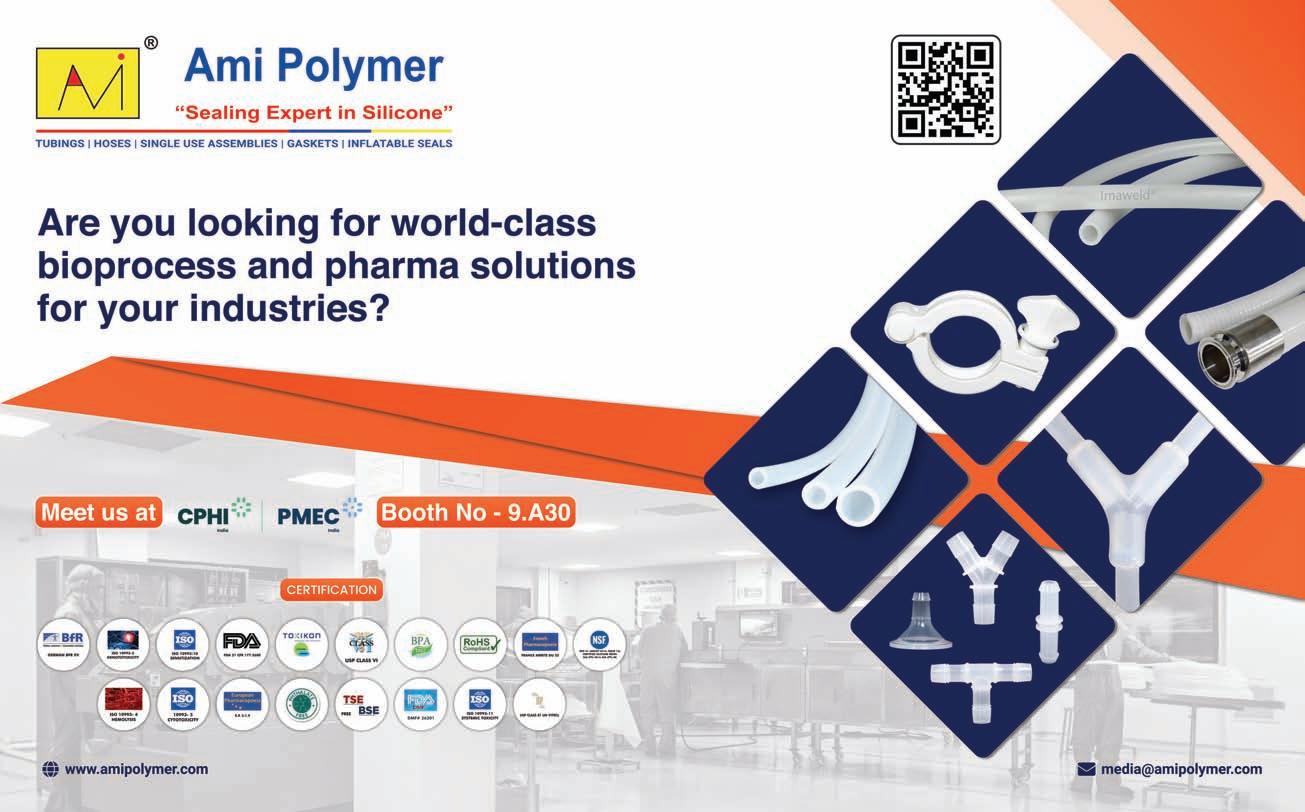

Mostofourassembliesarecustomdesignedtosuit theproductbeingmanufacturedwithrespecttocake height,liquidhold-up,CIP/SIPrequirementsetc.




AllnozzlesareprovidedwithTCtypesanitary connections,‘O’RingsareofferedwithspecialPTFE encapsulationwhicharecompatiblewithavarietyof solvents.OtherfeatureslikeSight/Lightglass,spray ballsetc.areprovidedasperthecustomer’sneeds. Superiorqualitycastorwheelsareprovidedforeasy mobility.Theinternalsurfacesareelectro-polished& offeredwith320gritfinishtocomplywithcGMP. Withcountlesssatisfiedcustomers,ourNutsche filtersarepreferredasastandardbyallmajorAPI& Bulkdrugmanufacturers.Experienceoursuperior levelsofcustomizationbygettingintouchwithour technicalexperts.
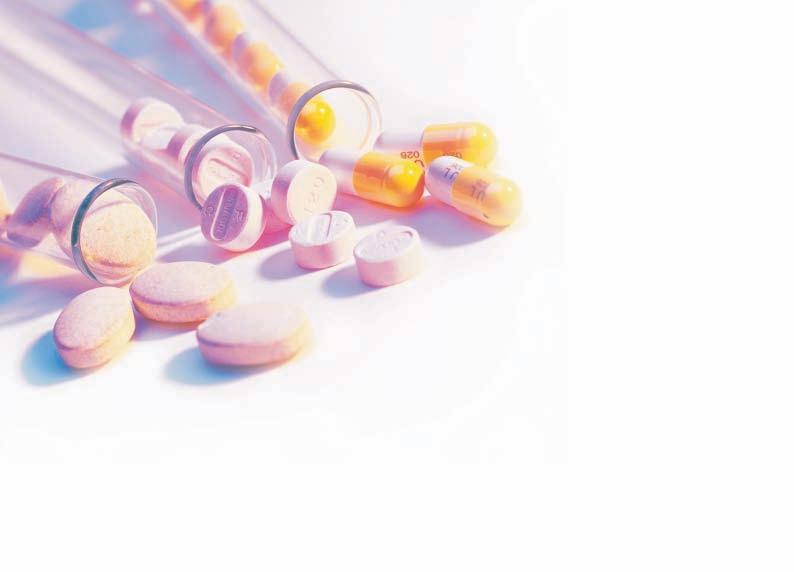
BUSINESS AVENUES EXPRESS PHARMA December 2022 EXPRESSPHARMA 86 Non-AgitatedtypeNutscheFilter withcleanableSS316Lfilterdisc forfiltrationofpharmaceuticalsinsterilerooms
corrosiveproductapplications.Filter
Contactusforfurtherdetails KumarProcessConsultants &ChemicalsPvt.Ltd. 4&5,BhagtaniEnclave,SonapurLane,Off.LBSMarg, Bhandup(West),Mumbai-400078.INDIA. Tel l : 91 1 22 2 355552 2 355662 2 Mobile:9004706047,9892312343 email:info@kumarfilter.comwww.kumarfilter.com
www.siddharthads.com
WecanretrofityourexistingAgitated Nutschefilters&Dryers(ANFD)withour cleanablefiltermedia.HastelloyC22 filtermediaalsocanbeofferedfor
discsaslargeas2.6mdiametercanbe offeredinasinglepieceorassegments.
Clearsolutionsforyourfiltrationproblemssince1978
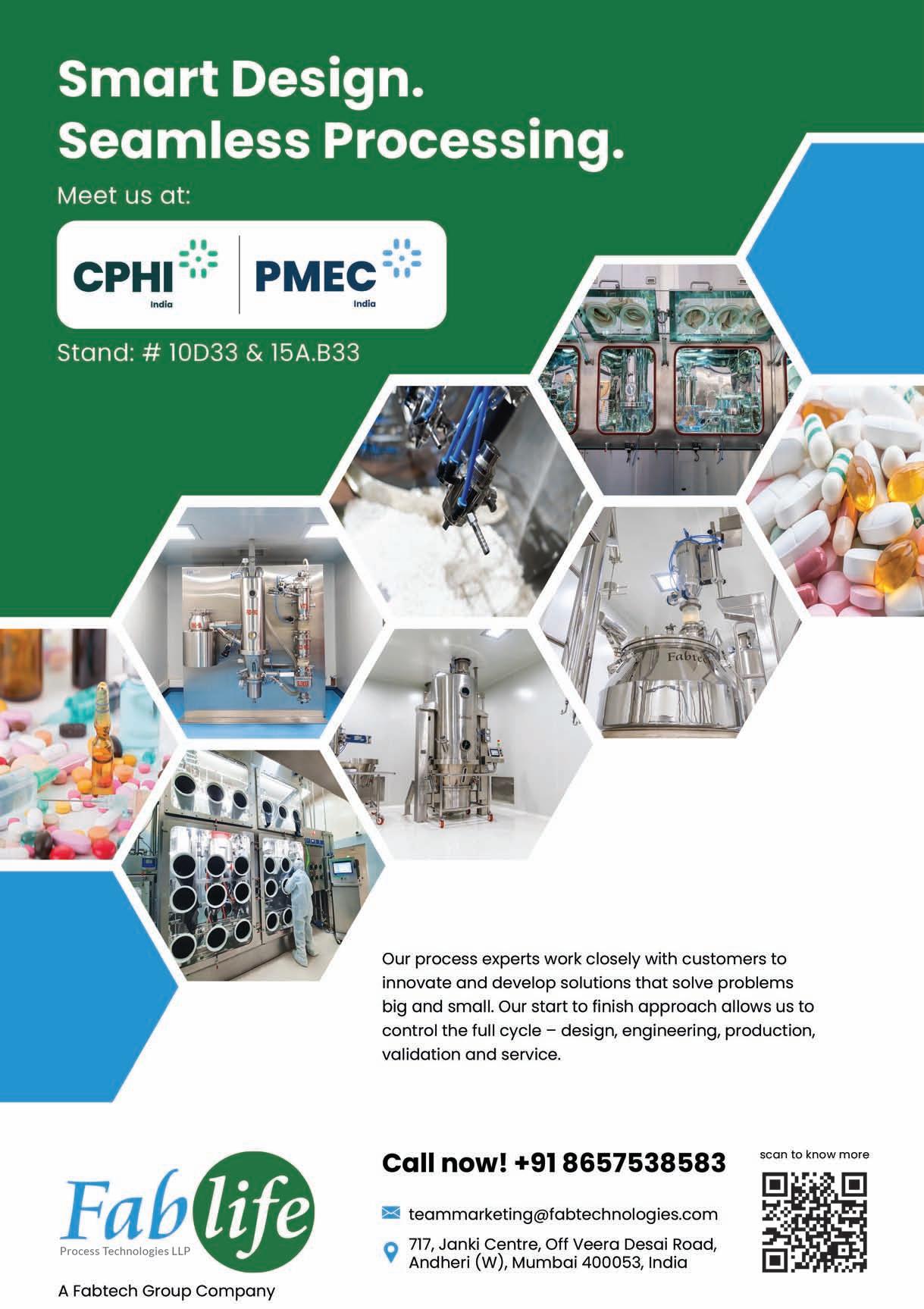
BUSINESS AVENUES EXPRESS PHARMA EXPRESSPHARMA December 2022 87
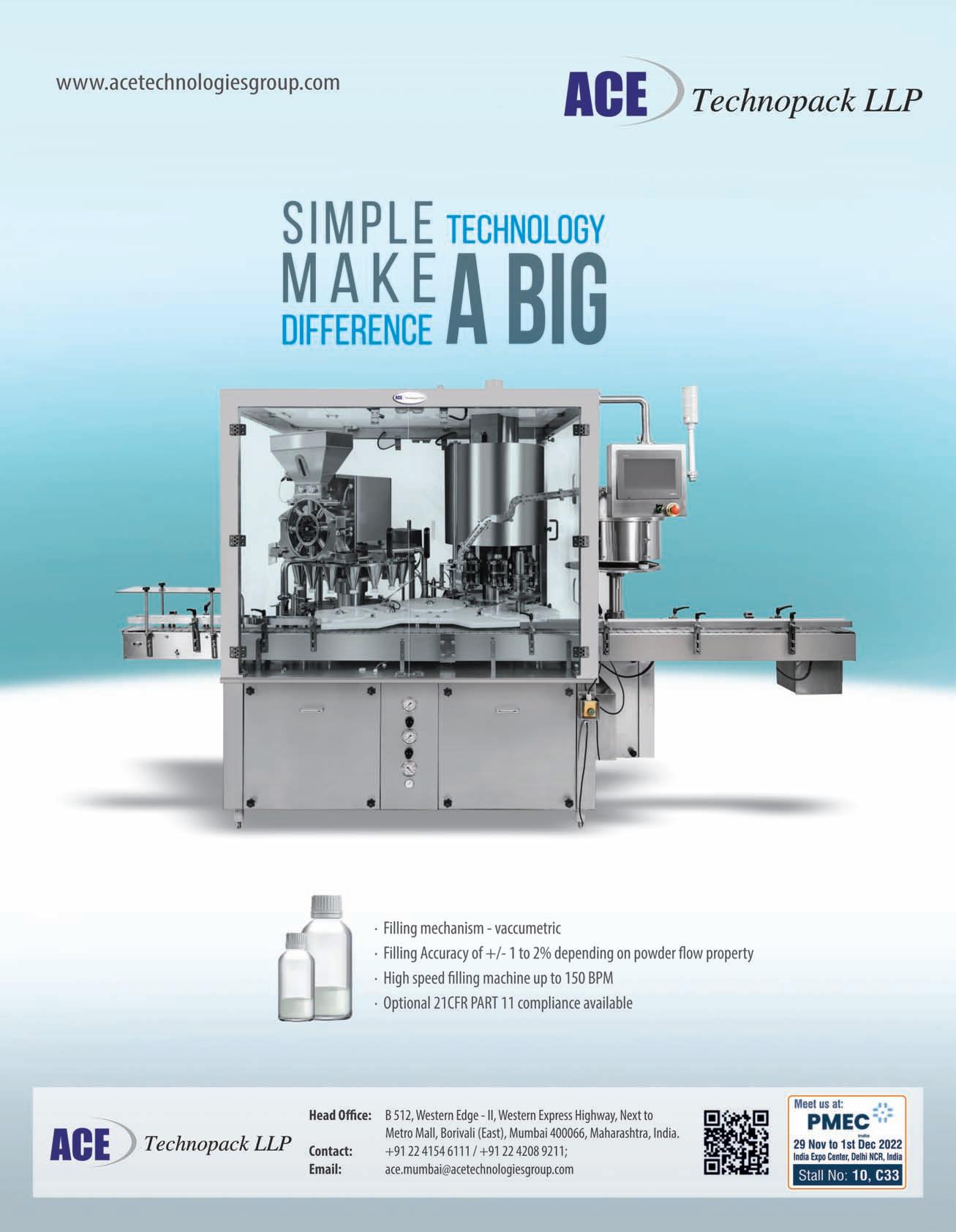
BUSINESS AVENUES EXPRESS PHARMA December 2022 EXPRESSPHARMA 88
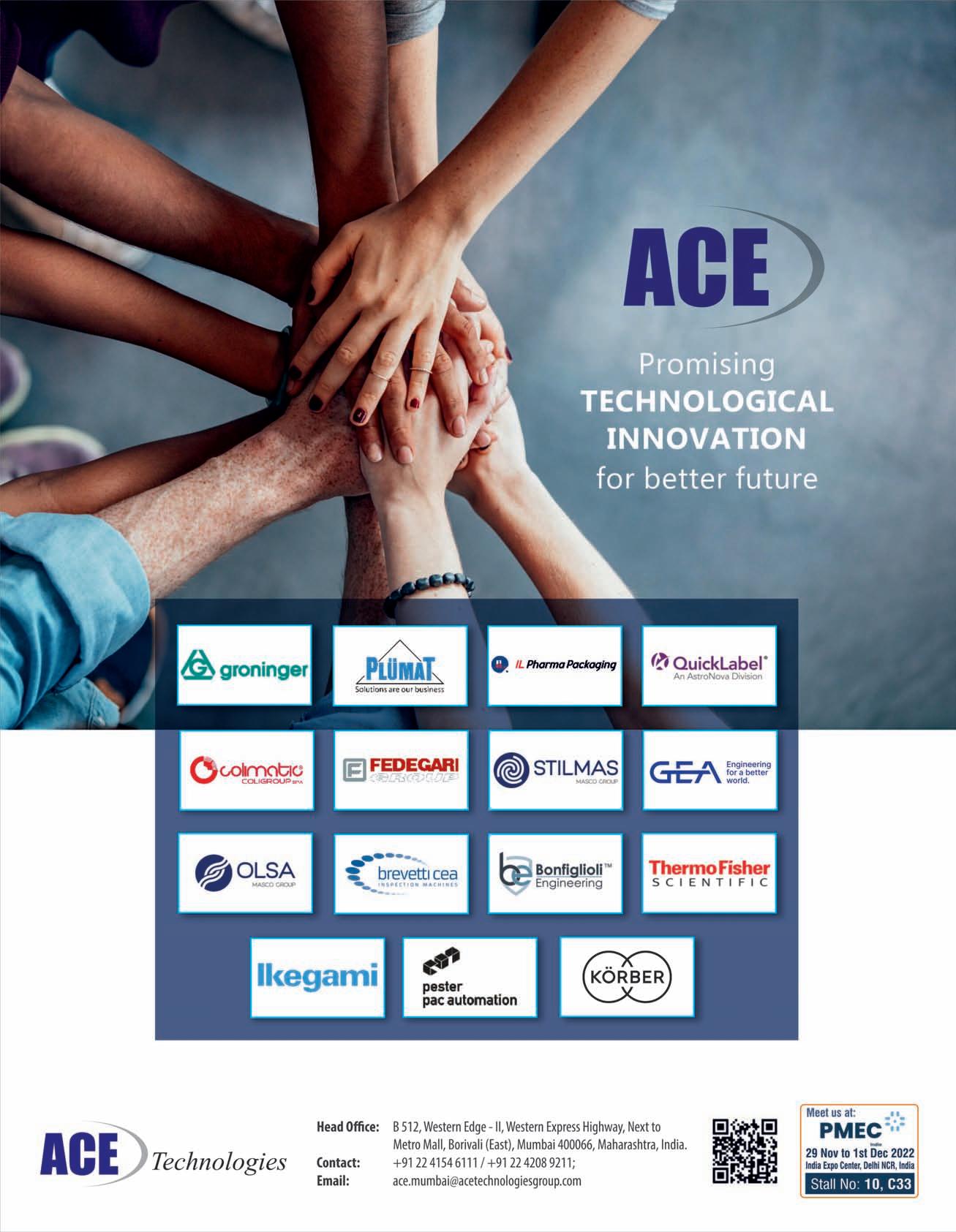
BUSINESS AVENUES EXPRESS PHARMA EXPRESSPHARMA December 2022 89




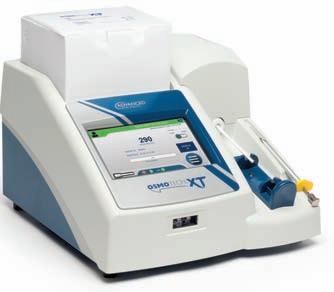


® ® ® OsmoTECH®XTSingle -SampleMicro-Osmometer Best-in-classosmolalityperformance, designedwithyouinmind. Nowavailable! HIGHLIGHTEDFEATURES: No.127,BussaUdyogBhavan,TokershiJivrajRoad,SewriWest,Mumbai-400015, Maharashtra,Landline:+91022-24166630Mobile:+919833286615 Offersthewidestrangeofosmolalitytesting(0–4000mOsm/kgH2O) Supports21CFRpart11,GMPandEUAnnex11compliance MeetsPharmacopeiaosmolalitytestingguidelines 3Leveluseraccessandpasswordprotection Storage:unlimiteddatastorageforaccess Audittrail:Preserveunlimitedresultsandevents Databasebackup,protectsyourdatawithautomaticormanualbackup BUSINESS AVENUES EXPRESS PHARMA December 2022 EXPRESSPHARMA 90
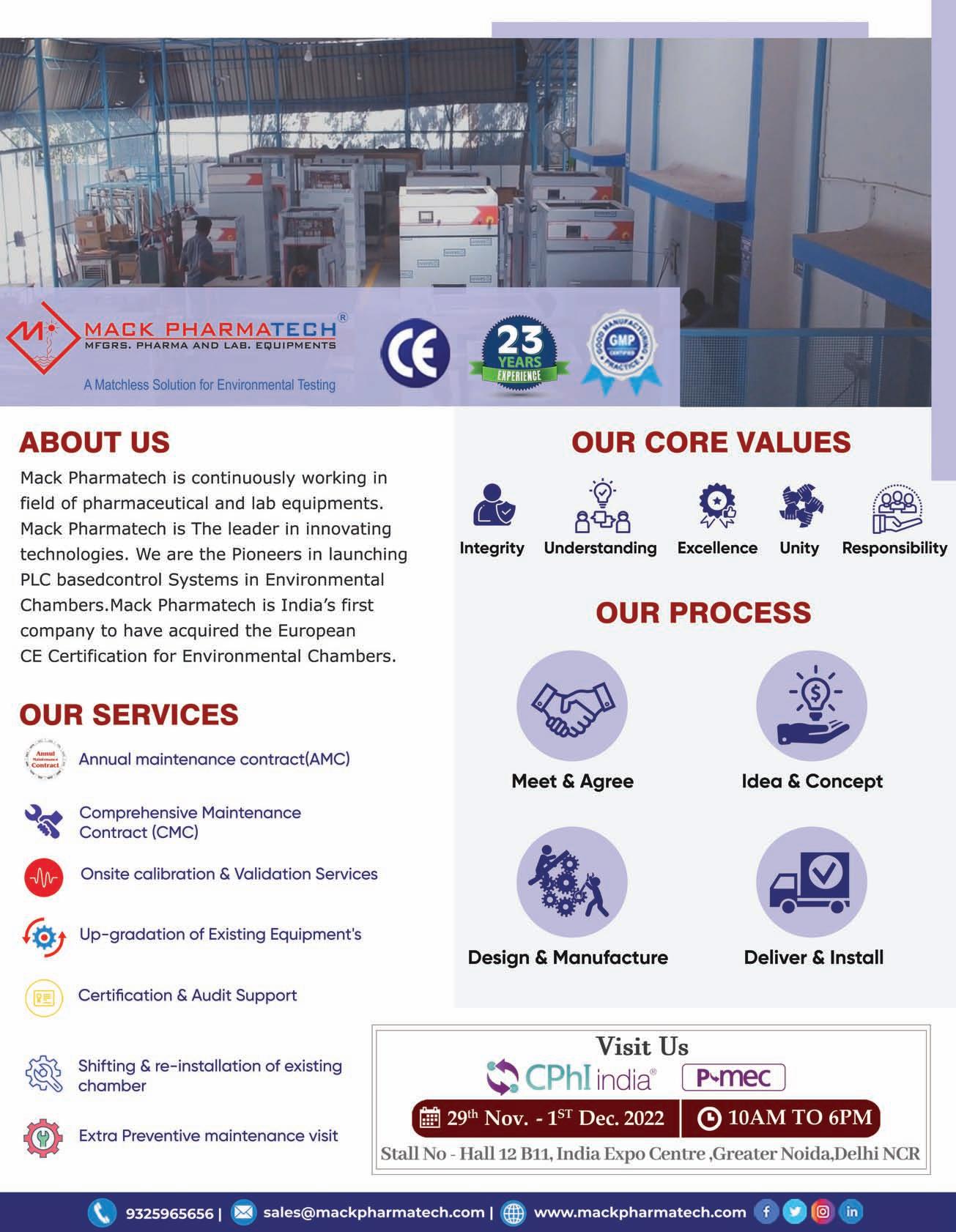
BUSINESS AVENUES EXPRESS PHARMA EXPRESSPHARMA December 2022 91
























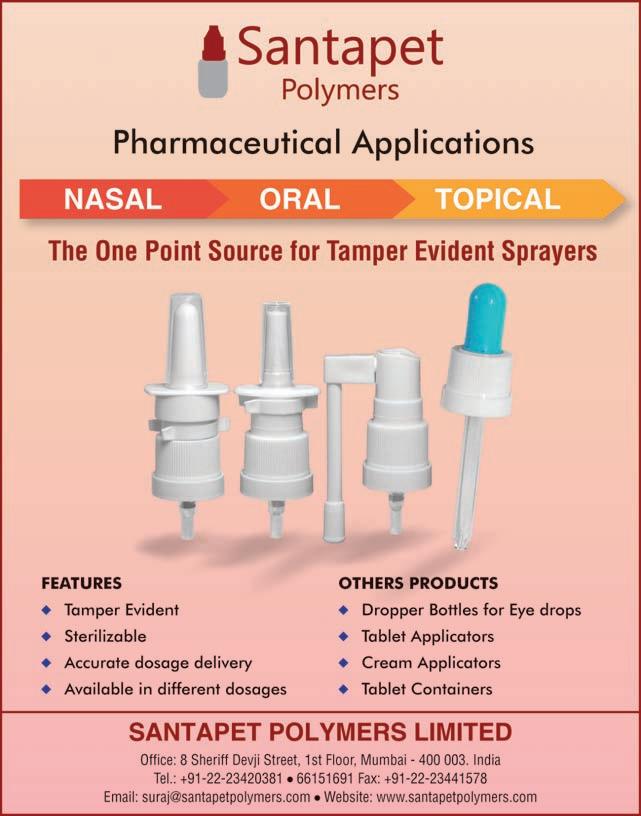
The Ultimate Solution for Marking and Coding Systems... Scan this QR code to view product applications X1JetStitch MVT Series 1 Media Transport System X1 Jet Integra Quardo Controller Printhead Camera BUSINESS AVENUES EXPRESS PHARMA December 2022 EXPRESSPHARMA 92

BUSINESS AVENUES EXPRESS PHARMA EXPRESSPHARMA December 2022 93
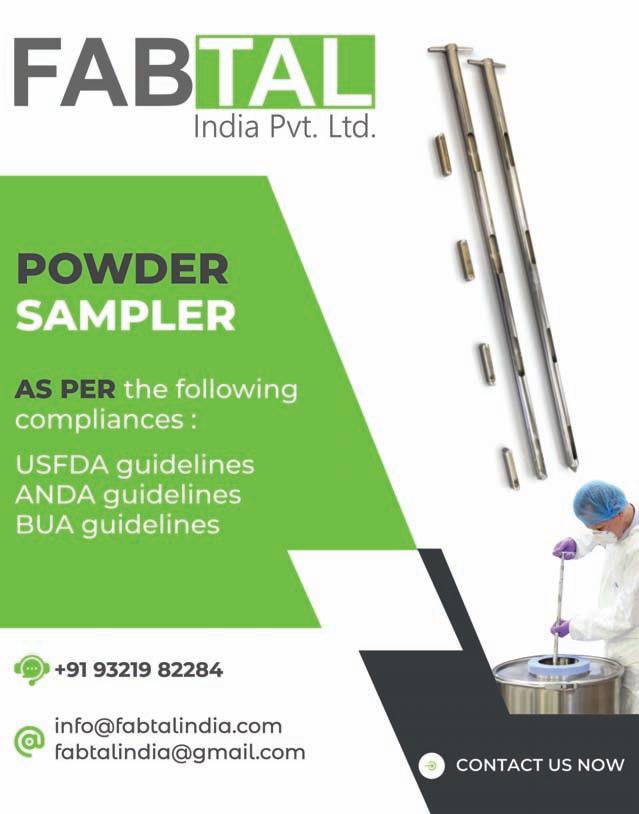

BUSINESS AVENUES EXPRESS PHARMA December 2022 EXPRESSPHARMA 94 To Advertise in Business Avenues Email: rajesh.bhatkal@expressindia.com rbhatkal@gmail.com
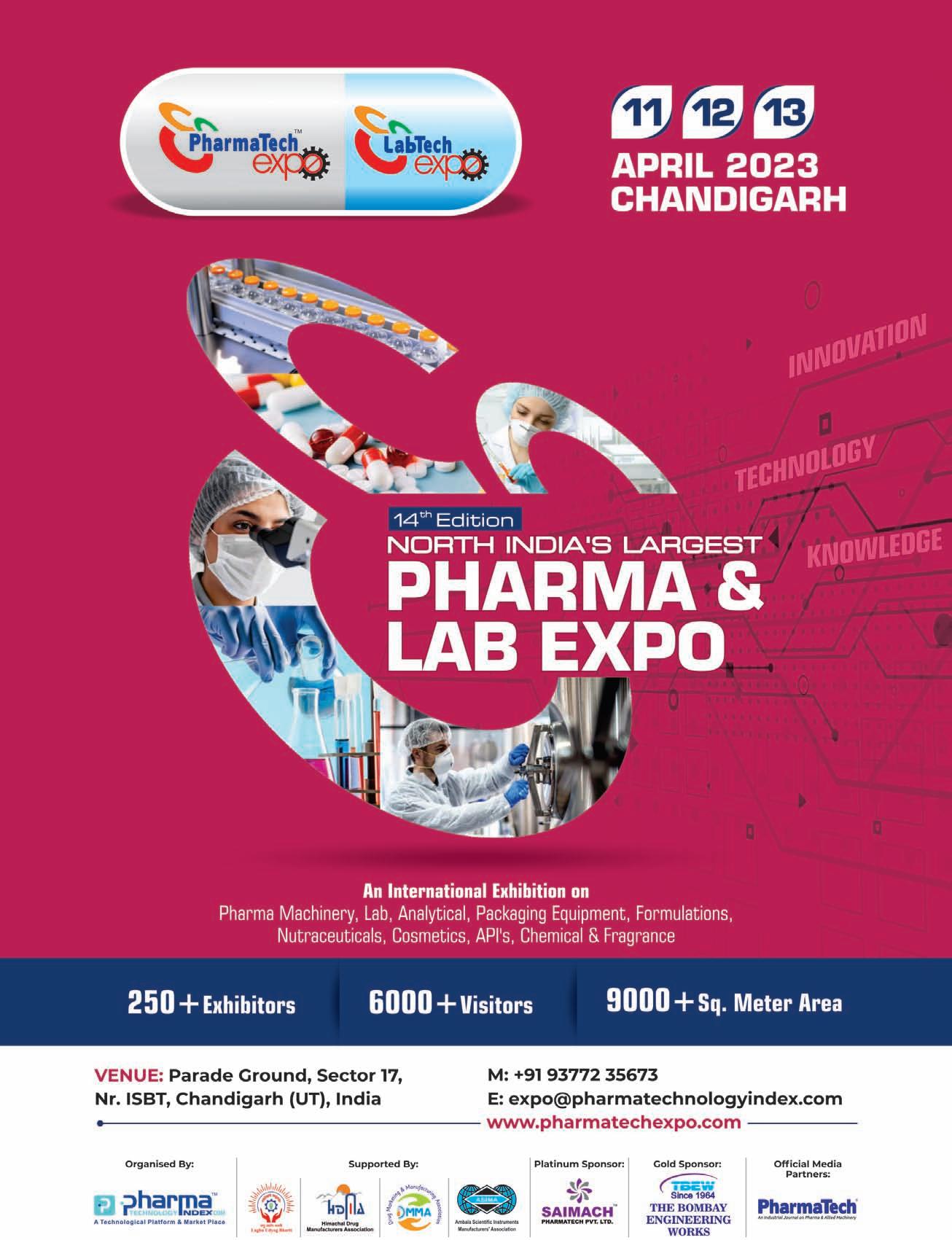
BUSINESS AVENUES EXPRESS PHARMA EXPRESSPHARMA December 2022 95
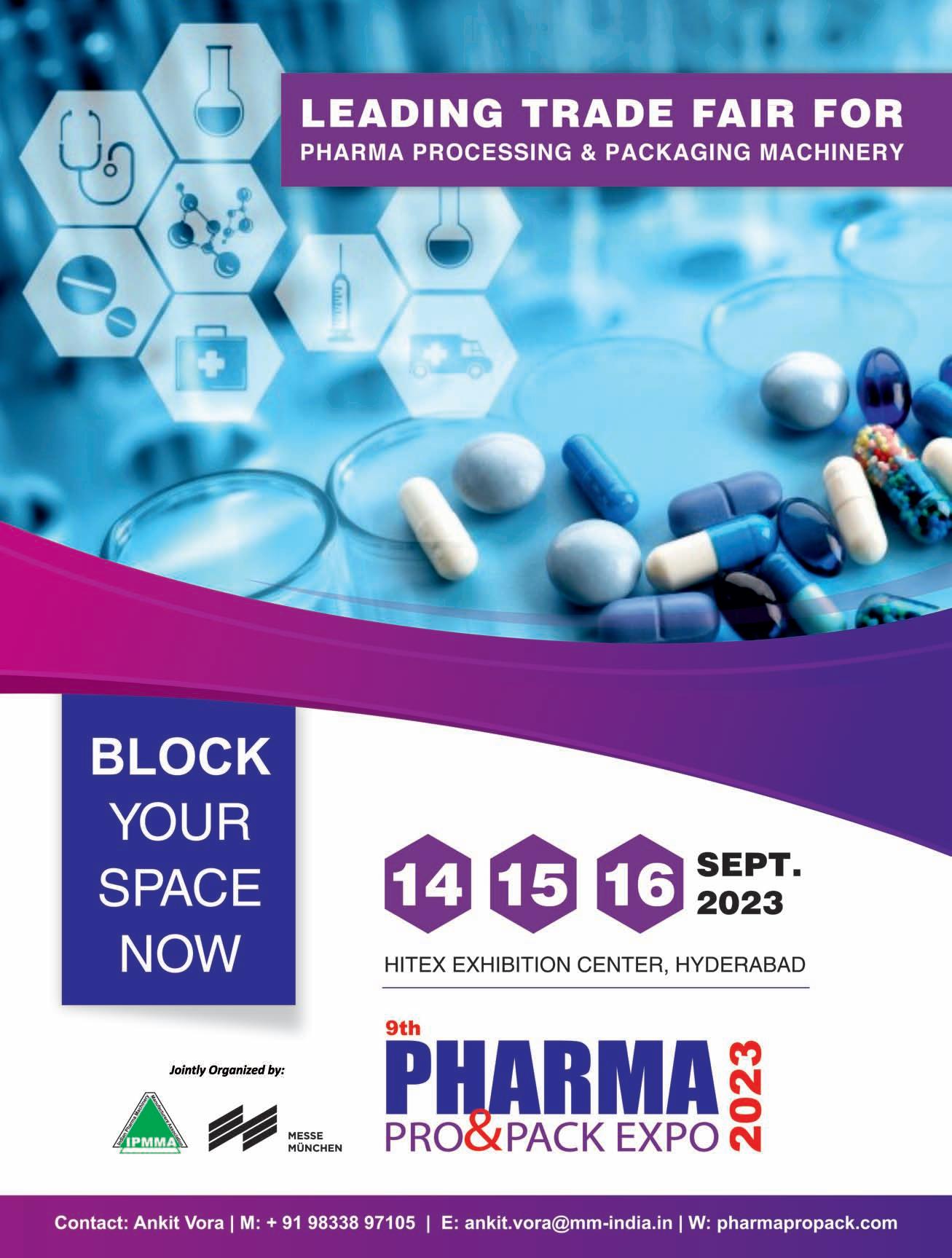
BUSINESS AVENUES EXPRESS PHARMA December 2022 EXPRESSPHARMA 96

BUSINESS AVENUES EXPRESS PHARMA EXPRESSPHARMA December 2022 97


BUSINESS AVENUES EXPRESS PHARMA December 2022 EXPRESSPHARMA 98
PHARMA PULSE
Complete environmental monitoring solution – testo Saveris Pharma
From medical,bio-technical,chemical and pharma laboratories to cleanrooms,biobanks up to blood and tissue banks,a holistic monitoring system is necessary which reliably records different measurement parameters in these rooms,and,at equipment
There are several critical applications in the industry like research and development that demand for continuous and reliable monitoring of important environmental parameters. From medical, biotechnical, chemical and pharma laboratories to cleanrooms, biobanks up to blood and tissue banks, a holistic monitoring system is necessary which reliably records different measurement parameters in these rooms, and, at equipment. Wherever there is a need to adhere to necessary standards, ensure traceability
Data logger and communication modules: Data loggers are the components that measure/ log the data continuously at different locations in the facility. They communicate with the base unit to transfer the recorded data. Since there are numerous tasks to fulfil in research and development, there are various models of data logger to measure different parameters.
Another important task is data transfer, and, for that, communication modules are used. Each data logger can be flexibly
at a time. It collects measurement values and analyses its limit value violation or any other critical event that occurs. It plays an important role in prompt alarm management. The base unit can be positioned centrally at a given facility location or office. Base station delivers alarms to users via an alarm relay and an LTE stick that enables alarms by SMS as well, in addition to visual and audible alarms.
Digital and analog sensors
The instrumentation utilised to
System software
Once the data is recorded by loggers and analysed by the base station, the testo Saveris Pharma software comes into play where all readings are collated, stored, visualised and backed up seamlessly. Automatic reports are generated and sent over email to the users concerned. Some important features are applied like electronic signature, electronic record, access control, audit trail and alarm logs. There are two versions of the testo Saveris software:
◆ testo Saveris PRO software- It is suitable for the automated and
Comprehensive services
The most important aspect of any solution is ‘after sales’ service. This is one of the strongest values offered by Testo to its customers. Testo extends its support from site survey, installation commissioning, IQ-OQ documentation to annual maintenance work and recalibration. So, all the end-to-end services are offered under one roof as an OEM by Testo. Thus, users do not have to run from pillar to post to get support; Testo ensures rich user’s experience throughout the lifecycle of
and audit compliance, especially pharma, these solutions become crucial in the facility operation.
The most efficient way to address this requirement is the implementation of fully automated environmental monitoring system testo Saveris Pharma. It monitors and documents temperature, humidity, differential pressure and other parameters without interruption and compliantly with GxP so that audits and inspections are conducted smoothly. As a complete solution, testo Saveris Pharma combines:
◆ high-precision measurements with secured data communication.
◆ intuitive and pro-validation software.
◆ comprehensive services.
The system consists of the following components:
connected to one of the three communication modules.
◆ WLAN module
◆ LAN module
◆ Radio via Testo ultra-range communication module
testo UltraRange ensures that a strong and robust radio signal is available even over long distances or in closed rooms. All data loggers can be exactly calibrated, and depending on the model, can record temperature and relative air humidity. As per the applications, data loggers are selected for environment monitoring for warehouse, analytical/microbiology lab, animal house or equipment monitoring like refrigerator, freezer, chiller, walk-in-chamber, etc.
The base station: The base is literally the heart of testo Saveris Pharma system. It can connect with 1,000 different data loggers
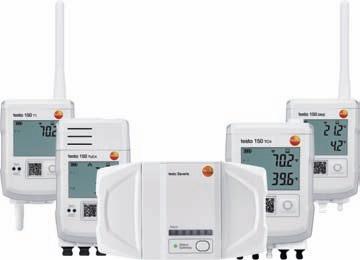
measure parameters like temperature and humidity is in the form of variety of digital and analog sensors that are easy to handle and install. The digital sensors have advantage over analog sensors as these can be quickly exchanged during continuing operation for calibration or defect correction. Calibration of digital sensor is independent of its logger. Thus, it ensures no gap in the measurement values or documentation. The measuring ranges of the temperature probes extend from -200°C to +1300°C, covering almost any possible scenario in the field of research and development.
The integration of other measurement parameters such as differential pressure, particles etc. also work smoothly with the analog coupler as a standardised interface.
uninterrupted data monitoring with less stringent regulations, normally other than pharma industry.
◆ testo Saveris CFR software – It guarantees unconditional adherence to US 21 CFR Part 11 as well as Annex 11 of the EU guidelines for GMP. In addition to the range of function of the PRO version, it offers audit trail and electronic signatures.
In addition, the company provides web access to the data with testo Saveris Pharma Cockpit – a web-based and intuitive user interface which allows data access from different end devices. Alarms can be identified and acknowledged via a smartphone, tablet or PC at any time. It also supports features like digital signature post any action as well as a mandatory comment on the event.
the system.
Areas of application
Area monitoring in labs, production, warehouse, animal house in pharma
Equipment monitoring for QA/QC, microbiology in pharma
Clean room area monitoring in pharma

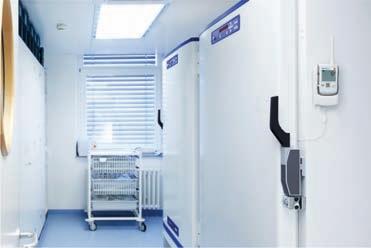
Refrigeration and deep-freezer applications in pharma
Uninterrupted cold chain monitoring and controlled freezing in blood and bio banks
Applicable for lab equipment from laboratory extractor to water bath
Data centre area monitoring
Calibration and testing lab area monitoring
For more details, login to www.testo.com or write to info@testo.in
December 2022 EXPRESS PHARMA 99
◆
◆
◆
◆
◆
◆
◆
◆
Decoding COMPACTROL®
COMPACTROL® is a calcium sulfate dihydrate, an inorganic material, which is naturally derived. It is roller compacted and size classified to obtain a median particle size and size distribution ideal for pharma and nutra application.
COMPACTROL® -- Calcium sulfate, as a diluent, has an advantage of possessing low concentrations of unbound moisture as well as having a low affinity for atmospheric moisture. These are required features for any excipient material to be combined with a watersensitive drug. The bound water of calcium sulfate is not released until a temperature of approximately 80 Degree celcius is reached. Such bound water is usually unavailable for chemical reaction. Such excipients containing tightly bound water and having a low remaining moisture demand may be vastly superior to an anhydrous diluent, which has moderate-to-high moisture demand[1][4]
Types of calcium sulfate[3]
There are three types of calcium sulfate -
A) Calcium sulfate dihydrate is used in the formulation of tablets and capsules. In granular form, it has good compaction properties and moderate disintegration properties.
B) Calcium sulfate hemihydrate is used in the preparation of plaster of Paris bandage, which is used for the immobilisation of limbs and fractures; it should not be used in the formulation of tablets or capsules.
C) Anhydrous calcium sulfate is hygroscopic, and is used as a desiccant. Uptake of water can cause the tablets to become very hard and to fail to disintegrate on storage. Therefore, anhydrous calcium sulfate is not recommended for the formulation of tablets, capsules, or powders for oral administration. Therapeutically,
calcium sulfate is used in dental and craniofacial surgical procedures.
COMPACTROL® is 23.3 per cent calcium and can be used in dietary supplements as a calcium source [2]
processed calcium sulfate dihydrate powder, is also suitable as a filler in tablets manufactured by direct compression. It is also an effective diluent for twopiece hard capsule filling application.
API, ARBOCEL® and COMPACTROL® were wet granulated in a fluid bed processor. After drying and sieving, the granules were compressed using a mixture of VIVAPUR® 102, VIVASTAR®P and magnesium stearate.
[3]
Incompatibilities
In the presence of moisture, calcium salts may be incompatible with amines, amino acids, peptides and proteins, which may form complexes. Calcium salts will interfere with the bioavailability of tetracycline antibiotics. It is also anticipated that calcium sulfate would be
References
1. Eerika¨ inen S et al. The behavior of the sodium salt of indomethacin in the cores of filmcoated granules containing various fillers. Int J Pharm1991; 71: 201-211.
2. JRS Pharma COMPACTROL® Brochure.
3. Rowe, R.C., Sheskey, P.J.; Quinn, M.E. (2009) Handbook of Pharmaceutical Excipients. 6th Edition, Pharmaceutical Press, 134-137.
Benefits of COMPACTROL®
Wet granulation
[2]
COMPACTROL® is a calcium sulfate dihydrate material meeting Ph.Eur., NF and FCC monograph requirements. It is mainly used in wet granulation to improve the binding properties of classical granulation bases such as starch or powdered cellulose. When COMPACTROL® is wetted during the granulation process and dried afterwards, it acts like a glue in powder mixtures.
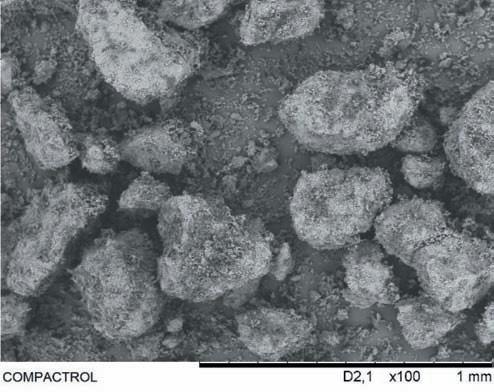
Direct compression COMPACTROL®, specially
It is a non-hygroscopic and free-flowing powder which is relatively inert offering excellent long-term stability, and provides required flow characteristics necessary for highspeed compaction and capsule filling.
incompatible with indomethacin, aspirin, aspartame, ampicillin, cephalexin and erythromycin since these materials are incompatible with other calcium salts. Calcium sulfate may react violently, at high temperatures, with phosphorus and aluminum powder; it can react violently with diazomethane.
Applications
◆ As a binder in wet granulation ◆ Filler and diluent for tablets ◆ High bulk density filler suitable for capsule filling ◆ For water-sensitive drugs as it absorbs very less moisture
4. Leon Lachman, Herbert A. Lieberman, Joseph L. Kanig. The theory and Practice of Industrial Pharmacy, Varghese publication house, 3rd edition, 1990, 326-327. Author: Prashant Bhangdiya Technical Manager-Pharma Rettenmaier India Pvt Ltd Prashant.bhangdiya@jrsindia.com

EXPRESS PHARMA December 2022 100
PHARMA PULSE
COMPACTROL® -- Calcium sulfate,as a diluent,has an advantage of possessing low concentrations of unbound moisture as well as having a low affinity for atmospheric moisture COMPACTROL® is a calcium sulfate dihydrate material meeting Ph.Eur., NFand FCC monograph requirements. It is roll compacted material,mainly used as diluent in tablets & capsules
Table 1.Solubilityof COMPACTROL® Solvent Solubilityat 20°C Unless otherwise stated Ethanol (95%) Water Practicallyinsoluble 375 mg/l,485 mg/l at 100°C Figure 1.SEM Image of COMPACTROL® Table 2.Physical properties of COMPACTROL® Bulkdensity Max1.1 g/ml Median particle size 120 μm Table 3.Formulation example API 10.0% ARBOCEL® (Powdered cellulose) 70.0% COMPACTROL® 20.0% Water q.s.
Development and growth: Emptyhard capsules
Pharma
HPMC/ vegetarian capsules,for more than three decades,provides pharma manufacturers with products and services with consistent quality of such a level that gives them the highest output,the highest reliability,maximum continuity,and,thus,the lowest production cost. HC Jain,Managing Director,Erawat Pharma,explains more

Growth of values, development of society, growth of brand, development of quality products, healthy growth 360°; thus, development and growth are two of the major components that an industrialist is responsible for.
Erawat Pharma being one of the leading manufacturers of empty hard gelatin and HPMC/vegetarian capsules, for more than three decades, provides pharma manufacturers with products and services with consistent quality of
such a level that gives them the highest output, the highest reliability, maximum continuity, and, thus, the lowest production cost.
As per the analysis of the current market trends and market segmentation, nutraceuticals has achieved remarkable interests and growth in the past few years, consistently. This opens up the market for HPMC capsules, which is expediting globally being higher in the Middle East, Bangladesh and other Muslim countries eliminating
the requirement of HALAL certified products. In order to fill the gap and strategise sustainably, Erawat Pharma has developed a new project with an investment of about Rs 350 crore in the Smart Industrial Park, Pithampur (Madhya Pradesh) that is designed in accordance with the WHOGMP, US FDA, European FDA, and equipped with fully advanced, automated and smart technology.
India is a growing economy, and is a global leader in manufacturing empty cap-
Transilä silicone transparent tubing

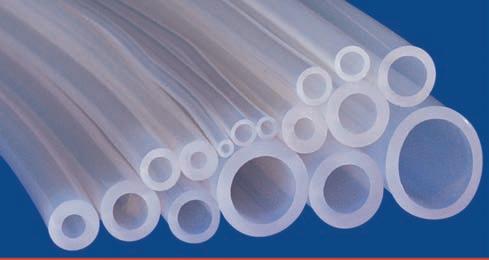
sules, as here, in India, the cost of production is comparatively less and is equipped with the highest level of technology. With the building of new facility, Erawat Pharma would be able to offer quality and much economical products than other industrial market players.
Further, Erawat Pharma keenly looks forward to CPhI 2022, India, to explore new markets, technologies, quality raw materials, latest industry trends, and meet industry peers.
Transilä silicone tubings have high tear and tensile strength,good elasticity and great flexibility, withstanding a wide range of temperature from minus 50 degrees to 250 degrees centigrade
MK Silicone Product, a pioneer in silicone transparent tubing, offers a wide range of silicone products designed to meet specific needs of pharma, biotech and medical industries.
Transilä silicone tubings have high tear and tensile strength, good elasticity and great flexibility, withstands a wide range of temperature from minus 50 degrees to 250 degrees centigrade. They are odourless, tasteless and do not support bacteria growth. They do not stain or corrode other materials.
Transilä Silicone Tubings exhibit superior compatibility with human tissues and body fluids. It resists water and many chemicals includ-
ing some acids, oxidising chemicals, etc. This product can be easily sterilised by ETO radiation or repeated steam autoclaving. Transparency of the tubing allows better visibility of the flowing fluid.
These are applications, to name a few, where it can be used:
Peristaltic pump for dosing
Suction machines
Phaco machines
Plasma fractionation
Intraveinous set
Simcoe cannulae
Transilä tubings is the choice for most pharma and medical applications because of its unique performance characteristics;
made from medical grade silicone meeting the stringiest standards of American and European pharmacopeias under clean environment. It is made of the US Food and Drug Administration (FDA)-approv ed silicone rubber which meets CFR21 part 177.2600 requirements.
Test certifications are available with the supply.
For further details, contact: M.K. Silicone Products Pvt. Ltd 206 & 208, Hill View Industrial Premises, Amrut Nagar, Ghatkopar (W), Mumbai - 400 086. Tel.: 022-2500 4576
E-mail: sales@mksilicone.com
December 2022 EXPRESS PHARMA 101 PHARMA PULSE
Erawat
being one of the leading manufacturers of empty hard gelatin and
◆
◆
◆
◆
◆
◆
Tired of tedious manual plasmid DNApreparations?
Plasmids are one of the cornerstones of modern biology, providing the foundation for several areas of important research including DNA vaccines, mRNA vaccines, viral vectors and monoclonal antibodies. This small, circular DNA is found in bacterial cells and is used widely as a vector for specific DNA fragments across multiple fields, including molecular biology, biochemistry, biotechnology and cell biology. Plasmid purification, therefore, has a wide range of applications and its importance is reflected in recent scientific triumphs, including the development of COVID-19 vaccines and advancements in gene and cell therapies.
Plasmids that are used in a lab setting have been designed to introduce a DNA fragment into another cell via the use of cloning methods. They are attractive tools for scientists as they are easy to modify and can self-replicate within a cell. As a result, plasmid purification is a fundamental technique used every day in labs all around the world.
One of the most widely used applications of plasmids is in transient transfection which results in the mass production of proteins and viral vectors. Through this technique, plasmids enable mammalian cells to express the protein that is coded by the gene they carry. Plasmids produced for transfection studies also need to be of very high quality and relatively pure for successful transfections to take place, which can also be time-consuming. While there have been numerous advances in other aspects of the production of mammalian proteins, plasmid purification technology has remained unchanged for over 40 years, but all this is about to change with the introduction of
Biotage's PhyPrep Plasmid Purification system which can simplify and streamline the plasmid purification process, saving both time and money, and providing better quality results.
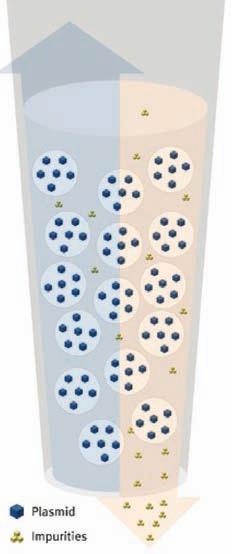
Plasmid purification challenges
Before we dive into Biotage's PhyPrep Plasmid Purification
system, you may be wondering what the issue is with the techniques currently in use in lab settings across the globe, especially if these techniques have not been changed in over 40 years. Well, to start, large-scale plasmid purification is a long, drawn-out process that can take days in the lab or weeks if it is outsourced. There are also several challenges that we can
highlight that are associated with developing and purifying plasmids for scientific studies, especially when the amount of plasmid required is in the maxi, mega-, or giga-scale.
Firstly, plasmid purification is not only a labour-intensive process that involves multiple steps such as centrifugation, lysis of cells and chromatography, but it also involves a lot of time spent at the bench carrying out repetitive and monotonous tasks. This highly laborious process involves the addition of multiple reagents which leaves a wide margin for human error. Secondly, the purification step has additional challenges including removing contaminants such as RNA, host cell DNA, and endotoxins as well as cell debris. Plasmids typically represent less than one per cent of the dry cell mass. So, there are a lot of potential contaminants that are structurally similar to plasmid DNA that need to be removed. In addition, when producing plasmids on a large scale, there is also a large cell pellet which can be difficult to resuspend. When we look at all this together, it’s clear that plasmid purification is a long and te-
dious process with multiple steps that leave room for several errors to be made, potentially compromising the quality of the plasmids produced. With all this in mind, Biotage has developed an automated process that simplifies the mass scale plasmid purification process, offering high quality and consistent results every time. The PhyPrep plasmid purification process can address all your mass protein production needs as it is purely for maxi-, mega-,
and giga-scale plasmid purification. It is transfection grade and endotoxin-free and is straightforward to use. Let's look at how it works.
Introducing Phyprep
Biotage introduces the PhyPrep System, the only automated plasmid purifier capable of operating on the maxi-, mega- and giga-plasmid-preparation scales. The result is highly pure, endotoxin-free*, supercoiled plasmid DNA – the optimal starting point for downstream applications, such


EXPRESS PHARMA December 2022 102 PHARMA PULSE
Plasmid purification has a wide range of applications and its importance is reflected in recent scientific triumphs,including the development of COVID-19 vaccines and advancements in gene and cell therapies
Fig- Automated vs manual plasmid purification
as transient transfection. PhyPrep comes with everything needed to generate highly pure plasmids, from a simple sample preparation step to a fully automated walkaway solution, freeing up one’s time to get on with the really important work – scientific research.
Automated plasmid purification
The PhyPrep instrument is both simple and robust, and requires less than eight minutes of one’s time for sample preparation, but how exactly does it work?
This system makes use of dual-flow chromatography technology which is highly reproducible and easy to automate. Dual-flow chromatography involves using a pipette tip column that is packed with resin. The sample is loaded and flows back and forth in a slow and highly controlled manner.
High reproducible yields of up to 1 mg for MaxiPrep, 5 mg for MegaPrep and 10 mg for GigaPrep can be achieved. Purification performance and transfection efficiency is comparable to the leading manual plasmid
preparation alternatives available in the market.
The automated plasmid purification allows the users to spend their time on other activities and return once the plasmid purification has been completed. The resulting plasmids are pure, endotoxin-free and supercoiled which is an important criterion for transfection efficiency.
Whychoose PhyPrep?
The PhyPrep instrument is a fast and efficient machine that enables researchers to produce
plasmids using an automated system that results in highquality plasmids the very same day. Our instrument produces quality plasmids consistently and removes the need for long, laborious days in the lab. The workflow, kit and software are easy to use, enabling one to devote less time to monotonous plasmid purification and more time to those tasks that you often struggle to fit into your day. In addition, it is cost-effective and reliable, and allows one to have complete control over the whole process.
Therefore, manual plasmid purification can be a tedious, repetitive and time-consuming process. Automating this workflow enables one to make more effective use of one’s valuable time. Biotage® PhyPrep system increases the productivity and efficiency of one’s laboratory, vastly simplifying plasmid purification with results better than ever.
Read more at www.biotage.com ; https://www.biotage.com/phyprep For any queries, please mail at india@biotage.com
Gandhi Automations’PRIME NEO doors
Gandhi Automations’PRIME NEO high speed doors are designed to provide superior sealing and resistance to pressure differences for clean rooms.And the added advantage is,it is absolutely washable


Gandhi Automations presents multi-composite high-performance door PRIME NEO for clean environments.
Completelywashable, greater sealing and pressure resistant
When it comes to pharma facilities and laboratories, clean rooms’ hygiene and protection from environmental contamination are the most important factors to consider. Gandhi Automations’ PRIME NEO High Speed Doors are designed to provide superior sealing and resistance to pressure differences for clean rooms. And, the added advantage is, it is absolutely washable.
PRIME NEO high speed doors assure the following: Minimised contamination: The reinforced polymer material is smooth surfaced and joint-free. The door structure has been designed with full accessibility for water cleaning. Contamination risks are minimum making it fully compliant with the requirements of clean environments.
Just-in-time opening cycle: Its smart design and German technology makes no delay in
operation. Opening- and closing-in time reduces exposure time to a minimum, resulting reduction in energy cost and risks of air-borne contamination.
Sealing and resistance to pressure differences: The door has a flexible curtain with horizontal FRP stiffeners guided in vertical guides. Pressure is evenly distributed over the whole curtain, pushing it
against the guides giving a perfect sealing. This design allows the door to operate even under pressure differences up to 50 Pa for a controlled room environment.
Safety: PRIME NEO reduces the risk of accidents and damage. The free, flexible and soft bottom edge minimises hitting impact. The radar detector and in-built photocells reopen the door at the slightest impact.
Windows: The transparent material
to see
traffic. Long-term transparency is assured, as the material is anti-fatigue PVC fabric.
Multi-composite structure: The toughness of the side guides and their ability to absorb an impact avoid high repair costs. PRIME NEO is anticorrosion and paint-free, that ensures durability in corrosive
and aggressive environments. Auto-reset: The door is equipped with auto reset technology. In case of an accidental crash, the curtain sets itself again. This unique system avoids time loss and reduces the risk of high repair costs.
To know more about PRIME NEO, write to sales@geapl.co.in OR call to 022 6672 0200 / 0300
December 2022 EXPRESS PHARMA 103 PHARMA PULSE
allows people
coming
Pycnogenol® for cognitive function of children and healthyadults
Anormal cognitive function is a prerequisite for a healthy life. Unfortunately, this is not always a given. Brain function may be either hyper- or hypo-active, and, in both cases, quality of life can be impaired greatly.
Hyperactivity is frequently observed in children, adolescents and even adults, and is commonly referred to as Attention Deficit Hyperactivity Disorder (ADHD). Globally, around five per cent of children are diagnosed with ADHD and an additional five per cent of children are reported to have overactivity and inattention problems, just below the clinical threshold1.
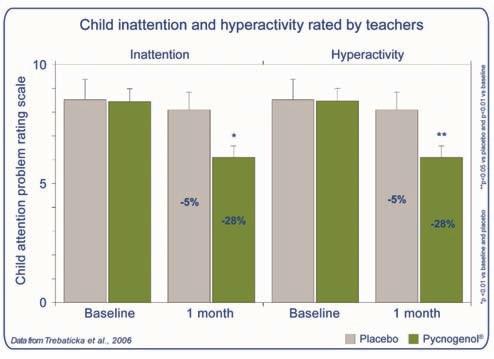
The decline of brain activity (hypoactive brain function) with memory problems and mental performance deficits on the other hand, is often related to the ageing process. It has, however, also been described in younger people in chronically stressful school- or work-related situations, often leading to cognitive decline2,3
Remarkably, Pycnogenol® French maritime pine bark extract has shown a broad spectrum of cognitive-related benefits for young people. These benefits range from reducing hyperactivity in children4-9 to improving cognitive function in students and healthy adults10, 11 .
Improvement of ADHD symptoms in children with Pycnogenol®
ADHD is a frequent brain hyperactivity disorder, and the most common behavioural disorder in children, with an increasing prevalence12. A common medication for this condition is methylphenidate hydrochloride (MPH), trade names include Ritalin, Concerta or Medikinet), which is associated with various adverse effects13
In a recently published double-blind, randomised, placebocontrolled clinical trial, children with diagnosed ADHD received either Pycnogenol®, MPH or placebo for 10 weeks4. According to the teachers’ rating, hyperac-
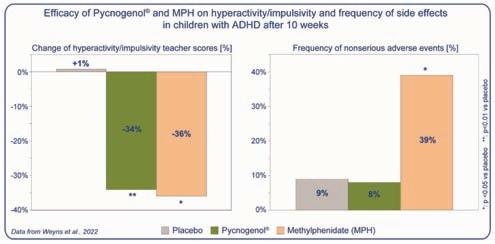
tivity and impulsivity were significantly improved by 34 per cent with Pycnogenol®, and by 36 per cent with MPH compared to placebo. Inattention was ameliorated as well with both remedies. However, MPH led to significantly more adverse effects in the children, including mood changes, gastro-intestinal symptoms, insomnia, headache and a feeling of tachycardia. Additionally, MPH led to loss of appetite and significant weight loss in the children, whereas with Pycnogenol®, a physiologically appropriate weight gain for this age group was observed5. The researchers concluded that with the almost complete lack of adverse effects, Pycnogenol® is a good and efficacious alternative for MPH in children’s ADHD, especially in the school environment.
Another double-blind, randomised, placebo-controlled clinical study could show that Pycnogenol® intake for four weeks relieved hyperactivity and improved attention of children with ADHD significantly compared to placebo and to baseline6. Hyperactivity and attention were ameliorated by 18 per cent and 14 per cent, respectively, as rated by parents and by 16 per cent and 10 per cent as rated by teachers. In the placebo group, no significant effects were observed and no side effects after the Pycnogenol® supplementation were reported.
In parallel, the levels of stress hormones (catecholamines) after Pycnogenol® supplementation in ADHD-affected children were investigated7. The concentrations of this group of hormones (including adrenaline, no-
radrenaline and dopamine) were normalised in ADHD patients with Pycnogenol® supplementation, which consequently leads to less hyperactivity. DNA damage incidents as measured by the levels of 8-oxoG as representative of oxidatively damaged purines were significantly reduced by 6.3 per cent and 35.4 per cent, respectively8. In addition, Pycnogenol® normalised the total antioxidant status and improved the glutathione levels, an index for antioxidant capacity in the children with ADHD9
uating the spatial recognition and working memory abilities, CANTAB (Cambridge neuropsychological test automated battery) was applied. The students showed significantly improved attention in form of better serial addition abilities (+52.9 per cent vs +4.7 per cent in the control group) and increased memory skills (+35.8 per cent vs +4.5 per cent for picture recall, +11.1 per cent vs +1.3 per cent for pattern recognition memory and +19 per cent vs. 10.5 per cent for spatial recognition memory). Planning ability and mental flexibility also increased after the eight-week Pycnogenol® supplementation. The real and practical effectiveness of Pycnogenol® supplementation on cognitive performance has been confirmed by evaluating the marks obtained by students in academic exams during the second month of treatment. The exam scores of the supplemented students were better by 7.6 per cent
and mental performance in healthy professionals11. For this, cognitive battery tests, similar to those of the previous study with students were used. Among other items, improvement of attention (+13.4 per cent), mental performance (+8.9 per cent) and memory (+3.6 per cent) were determined after Pycnogenol® supplementation. Overall, cognitive function was improved by 10 per cent in the Pycnogenol® subjects compared to a slight increase of 4.3 per cent in the control group. No significant changes were found in the control group. Additionally, the plasma oxidative stress levels were measured (as plasma-free radicals) and showed to be elevated at the beginning of the study, probably due to negative daily stress. After 12 weeks of supplementation with Pycnogenol®, a significant decrease of 30.4 per cent to normal levels compared to a slight increase in the control group of 0.8 per cent was measured.
Pycnogenol® enhances mental performance in students
In an observational study, 53 healthy students, aged 18 to 27 years were supplemented with 100 mg Pycnogenol® a day for eight weeks. Another group of 55 students was used as control subjects10. The effects of Pycnogenol® on cognitive function and mental performance was investigated, using different tests. For example, the paced auditory serial addition task was used for assessing the sustained attention. For eval-
compared to the exam scores from the control group. These results have confirmed Pycnogenol®’s beneficial effects on the mental performance in healthy students.
Advanced cognitive function in healthy professionals with Pycnogenol®
A study with 60 subjects between 35 and 55 years evaluated the effects of Pycnogenol® 150 mg a day on cognitive function, attention
The underlying mechanism of action of Pycnogenol® is based on its ability to regulate the endothelial function via adjusting Nitric Oxide (NO) production14, 15. It has been shown that NO has beneficial effects on brain function16. NO is capable of relaxing constricted blood vessels, normalising blood pressure and helping to protect tissues from damage, caused by low blood supply 17. By regulating vascular smooth muscle relaxation, NO leads to increased blood flow, which ensures sufficient supply of oxygen to neuronal cells18. In addition, NO has been found to regulate neuronal functions and helps to modulate key neurotransmitters, thus contributing to processing signals in the brain19, 20. Interestingly, the active metabolites of Pycnogenol® build up inside the endothelial blood cells and possibly pass the blood-brain barrier15. The beneficial effects of Pycnogenol® on en-
EXPRESS PHARMA December 2022 104
PHARMA PULSE
Pycnogenol® regulates cellular NO concentration, which affects brain function
Remarkably,Pycnogenol® French maritime pine bark extract has shown a broad spectrum of cognitive-related benefits for young people
dothelial function have been shown in several clinical studies14, 21, 22
Pycnogenol® regulates the NO production in two ways. The endothelial NO synthase (eNOS), generating normal concentrations of NO from L-arginine in the cell, is stimulated by Pycnogenol®23. At the same time, Pycnogenol® prevents a toxic overproduction of NO by downregulating the inducible NO synthase (iNOS) - a well-established source of Nitric Oxide (NO*) during inflammation15. In this way, Pycnogenol® naturally modulates the multiple effects of NO in the brain.
Pycnogenol® controls inflammation and oxidative stress
As mentioned in the beginning, repeated stressful situations can have a negative effect on cognitive function2,3. It has been shown that this effect is due to destructive brain inflammation, along with oxidative stress damage, triggered by social, psychological or physical stress 24-26
In several studies, it was shown that Pycnogenol® has potent anti-inflammatory activities27-29 and associated antioxidant activity8,30,31. Already after five days of daily intake, a study reported that Pycnogenol® significantly prevented the up-regulation of the pro-inflammatory enzymes 5-LOX and COX-227. In another ex-vivo study, plasma samples of volunteers, having taken Pycnogenol® showed to statistically significantly inhibit NF-KB activation by 15.5 per cent and matrix metalloproteinase 9 (MMP-9) release by 25 per cent, two important regulators in the inflammation process 28. In a similar study,
statistically significant inhibition of inflammatory molecules COX-1 and COX- 2 was observed after intake of 300 mg Pycnogenol® 29
Pycnogenol® French maritime pine bark extract is a safe, natural and evidence-based solution to support a healthy cognitive function. For a complete list of scientific research and for further information, visit www.pycnogenol.com.
References
1. Sayal K, Prasad V, Daley D, Ford T, Coghill D. ADHD in children and young people: prevalence, care
pared to Methylphenidate and Placebo: Part 1: Efficacy in a Randomised Trial. Journal of Functional Foods. 2022;97:105246.
5. Weyns A-S, Verlaet AAJ, Van Herreweghe M, Breynaert A, Fransen E, De Meester I, et al. Clinical Investigation of French Maritime Pine Bark Extract on Attention-Deficit Hyperactivity Disorder as compared to Methylphenidate and Placebo: Part 2: Oxidative Stress and Immunological Modulation. Journal of Functional Foods. 2022;97:105247.
6. Trebaticka J, Kopasova S, Hradecna Z, Cinovsky K, Skodacek I, Suba J, et al. Treatment of ADHD with French maritime pine bark extract, Pycnogenol. Eur Child Adolesc Psychiatry. 2006;15(6):329-35.
7. Dvorakova M, Jezova D, Blazicek P, Trebaticka J, Skodacek I, Suba J, et al. Urinary catecholamines in children with attention deficit hyperactivity disorder (ADHD): modulation by a polyphenolic extract from pine bark (pycnogenol). Nutr Neurosci. 2007;10(3-4):151-7.
8. Chovanova Z, Muchova J, Sivonova M, Dvorakova M, Zit-
attention and mental performance in students. Panminerva medica. 2011;53(3):75-82.

11. Belcaro G. LR, Dugall M., Ippolito E., Saggino A. Pycnogenol® improves cognitive function, attention, mental performance and specific professional skills in healthy professionals aged 35-55. J neurosurg sci. 2014;58:239-48.
12. Felt BT, Biermann B, Christner JG, Kochhar P, Harrison RV. Diagnosis and management of ADHD in children. Am Fam Physician. 2014;90(7):456-64.
13. Wenthur CJ. Classics in Chemical Neuroscience: Methylphenidate. ACS Chem Neurosci. 2016;7(8):1030-40.
14. Nishioka K, Hidaka T, Nakamura S, Umemura T, Jitsuiki D, Soga J, et al. Pycnogenol, French maritime pine bark extract, augments endothelium-dependent vasodilation in humans. Hypertens Res. 2007;30(9):775-80.
15. Uhlenhut K, Högger P. Facilitated cellular uptake and suppression of inducible nitric oxide synthase by a metabolite of maritime pine bark extract (Pycnogenol). Free Radic Biol Med. 2012;53(2):305-13.
16. Garthwaite J. Nitric oxide as a multimodal brain transmitter. Brain Neurosci Adv. 2018;2:2398212818810683.
17. van Faassen EE, Bahrami S, Feelisch M, Hogg N, Kelm M, KimShapiro DB, et al. Nitrite as regulator of hypoxic signaling in mammalian physiology. Med Res Rev. 2009;29(5):683-741.
nogenol, French maritime pine bark extract, improves endothelial function of hypertensive patients. Life Sci. 2004;74(7):855-62.
23. Fitzpatrick DF, Bing B, Rohdewald P. Endothelium-dependent vascular effects of Pycnogenol. J Cardiovasc Pharmacol. 1998;32(4):509-15.
24. McKim DB, Niraula A, Tarr AJ, Wohleb ES, Sheridan JF, Godbout JP. Neuroinflammatory Dynamics Underlie Memory Impairments after Repeated Social Defeat. The Journal of Neuroscience. 2016;36(9):2590-604.
25. Juszczyk G, Mikulska J, Kasperek K, Pietrzak D, Mrozek W, Herbet M. Chronic Stress and Oxidative Stress as Common Factors of the Pathogenesis of Depression and Alzheimer’s Disease: The Role of Antioxidants in Prevention and Treatment. Antioxidants. 2021;10(9):1439.
26. Liu YZ, Wang YX, Jiang CL. Inflammation: The Common Pathway of Stress-Related Diseases. Front Hum Neurosci. 2017;11:316.
27. Canali R, Comitato R, Schonlau F, Virgili F. The anti-inflammatory pharmacology of Pycnogenol in humans involves COX-2 and 5-LOX mRNA expression in leukocytes. Int Immunopharmacol. 2009;9(10):1145-9.
pathways, and service provision. The Lancet Psychiatry. 2018;5(2):175-86.
2. McEwen BS, Bowles NP, Gray JD, Hill MN, Hunter RG, Karatsoreos IN, et al. Mechanisms of stress in the brain. Nature Neuroscience. 2015;18(10):1353-63.
3. Scott SB, Graham-Engeland JE, Engeland CG, Smyth JM, Almeida DM, Katz MJ, et al. The Effects of Stress on Cognitive Aging, Physiology and Emotion (ESCAPE) Project. BMC Psychiatry. 2015;15(1).
4. Weyns A-S, Verlaet AAJ, Breynaert A, Naessens T, Fransen E, Verhelst H, et al. Clinical Investigation of French Maritime Pine Bark Extract on Attention-Deficit Hyperactivity Disorder as com-
nanova I, Waczulikova I, et al. Effect of polyphenolic extract, Pycnogenol, on the level of 8-oxoguanine in children suffering from attention deficit/hyperactivity disorder. Free Radic Res. 2006;40(9):1003-10.
9. Dvorakova M, Sivonova M, Trebaticka J, Skodacek I, Waczulikova I, Muchova J, et al. The effect of polyphenolic extract from pine bark, Pycnogenol on the level of glutathione in children suffering from attention deficit hyperactivity disorder (ADHD). Redox Rep. 2006;11(4):163-72.

10. Luzzi R, Belcaro G, Zulli C, Cesarone M, Cornelli RU, Dugall M, et al. Pycnogenol® supplementation improves cognitive function,
18. Chen K, Pittman RN, Popel AS. Nitric oxide in the vasculature: where does it come from and where does it go? A quantitative perspective. Antioxid Redox Signal. 2008;10(7):1185-98.
19. Dhir A, Kulkarni SK. Nitric oxide and major depression. Nitric Oxide. 2011;24(3):125-31.
20. Zhang S, Chen J, Wang S. Spatial learning and memory induce up-regulation of nitric oxide-producing neurons in rat brain. Brain Res. 1998;801(1-2):101-6.
21. Enseleit F, Sudano I, Periat D, Winnik S, Wolfrum M, Flammer AJ, et al. Effects of Pycnogenol on endothelial function in patients with stable coronary artery disease: a double-blind, randomized, placebo-controlled, cross-over study. Eur Heart J. 2012;33(13):1589-97.
22. Liu X, Wei J, Tan F, Zhou S, Wurthwein G, Rohdewald P. Pyc-
28. Grimm T, Chovanova Z, Muchova J, Sumegova K, Liptakova A, Durackova Z, et al. Inhibition of NF-kappaB activation and MMP9 secretion by plasma of human volunteers after ingestion of maritime pine bark extract (Pycnogenol). J Inflamm (Lond). 2006;3:1.
29. Schäfer A, Chovanova Z, Muchova J, Sumegova K, Liptakova A, Durackova Z, et al. Inhibition of COX-1 and COX-2 activity by plasma of human volunteers after ingestion of French maritime pine bark extract (Pycnogenol). Biomed Pharmacother. 2005;60(1):5-9.
30. Kolacek M, Muchova J, Dvorakova M, Paduchova Z, Zitnanova I, Cierna I, et al. Effect of natural polyphenols (Pycnogenol) on oxidative stress markers in children suffering from Crohn's disease--a pilot study. Free Radic Res. 2013;47(8):624-34.
31. Devaraj S V-LS, Kaul N, Schönlau F, Rohdewald P, Jialal I. Supplementation with a pine bark extract rich in polyphenols increases plasma antioxidant capacity and alters plasma lipoprotein profile. Lipids. 2002;37(10):931-4.
December 2022 EXPRESS PHARMA 105
PHARMA PULSE
Room bio-decontamination system
The system can be used regularly as a contamination control strategy or can be used as an emergency containment control or can be used when the classified environment is exposed to ambient condition
Room biodecontamination system is used to remove the airborne and surface microbial contamination in controlled and clasified environments of pharmaceutical, biopharmaceutical, hospital, animal care or any place where microbial contamination is a concern.
The system can be used regularly as a contamination control strategy or can be used as an emergency containment control or can be used when the classified environment is exposed to ambient condition.
Setup
Initially based on the layout, number of VHP generator and distribution system (TurboFlow) is selected and placed accordingly in the area to be decontaminated. Air handling unit of that particular area is
switched off and then, the doors present in the rooms are opened and the exit door is sealed.
Gassing
The operator will start the reciepe which is designed for the room (which would be validated during validation) through remote display and the gassing cycle would start. Before the start
of gassing, the biological indicators and chemical indicators would be placed according to the FDA norms. During the gassing stage, the HVAC would be off and the Vapour Phase Hydrogen Peroxide (VHP) would be introduced inside the rooms with the help of the instruments blower and the distribution unit “TurboFlow” which will help in distri-
bution. The instrument would run on its own by dossing the H202 and controlling the humidity for the defined time. The operator can monitor this complete process with the help of remote display.
Aeration
During the aeration phase of the decontamination process,
the instrument will stop dosing H202 and HVAC would be turned on. (Instrument can communicate to BMS via Modbus) The aeration time would be validated with the help of low level PPM sensor during validation. The biological indicators would be given for incubation.
Contact: info@svan.in for more info
CONTRIBUTOR’S CHECKLIST
❒
Express Pharma accepts editorial material for regular columns and from pre-approved contributors / columnists.
❒
Express Pharma has a strict non-tolerance policy of plagiarism and will blacklist all authors found to have used/refered to previously published material in any form, without giving due credit in the industryaccepted format.All authors have to declare that the article/column is an original piece of work and if not,they will bear the onus of taking permission for re-publishing in Express Pharma.
Products,Value Add),Pharma Packaging and Pharma Technology Review sections.Related photographs and brochures must accompany the information.
❒ Besides the regular columns,each issue will have a special focus on a specific topic of relevance to the Indian market.
❒ In e-mail communications,avoid large document attachments (above 1MB) as far as possible.
❒ Articles may be edited for brevity,style,and relevance.
Express Pharma's prime audience is senior management and pharma professionals in the industry.Editorial material addressing this audience would be given preference.
❒
❒ The articles should cover technology and policy trends and business related discussions.
❒ Do specify name,designation,company name,department and e-mail address for feedback,in the article.

❒ We encourage authors to send their photograph.Preferably in colour,postcard size and with a good contrast.
❒
Articles for columns should talk about concepts or trends without being too company or product specific.
Email your contribution to:
❒
Article length for regular columns: Between 1200 - 1500 words.These should be accompanied by diagrams,illustrations,tables and photographs,wherever relevant.

❒ We welcome information on new products and services introduced by your organisation for our various sections: Pharma Ally (News,
The Editor, Express Pharma, Business Publications Division,The Indian Express (P) Ltd, Mafatlal Centre,7th floor,Ramnath Goenka Marg, Nariman Point,Mumbai 400021 viveka.r@expressindia.com viveka.roy3@gmail.com
EXPRESS PHARMA December 2022 106 PHARMA PULSE
Sealing becomes a prominent aspect when any machine is designed, whether it is to be provided at doors, rings, bowls, etc. However, one cannot move directly to choose solid rubber gaskets as ma-
gaskets was done. These are hollow gaskets having tendency to inflate and deflate on application of air pressure, these are provided with pneumatic nozzles through which air pressure is applied and these gaskets inflate and
maceuticals, beverage, medical, dairy, food, oil, chemical-ceutical industries inflatable gasket are used in fluid bed dryers, isolator doors, cleanroom, etc. Inflatable gaskets are used to p revent
leakages of any gas or liquids from the machine
◆ It works as an inflation pressure in the cavity and also works as cycle tube.


◆ Inflatable gaskets are accurate and withstand with 1
hoses and whole lot range of food grade products on global scale with facility of cleanroom 10000. Our inflatable gasket is registered as Imaseal®. These gaskets are made up of advanced-grade
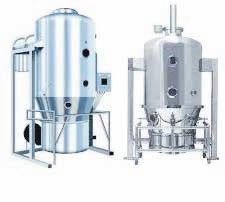
any leakages of gases and liquids. With its versatility, silicone being food grade and its resistance to high temperatures are preferred over other Material of Construction (MOC), but you can choose depending on your application and processing conditions.
to 4.5 kg/cm pressure.
◆ It is used for gripping and lifting object.
◆ It has a good inflation and deflation property at nozzle and joint areas.
Whychoose Ami Polymer Pvt Ltd’s Imaseal®?
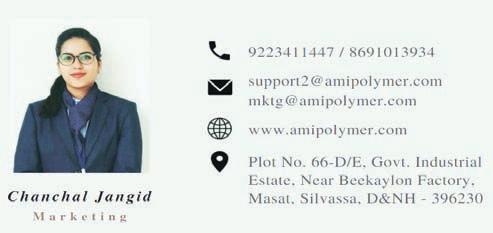
silicone rubber which conforms to FDA 21 CFR 177.2600 for the food grade criteria. MOC range available: Silicone, Ethylene Propylene Diene Monomer (EPDM), Neoprene and Thermoplastic.
chine parts experience wear and tear when they are operated for longer duration. In addition, metallic parts are rigid and have tendency to experience small deformation but minute deviation will have huge impact on machine operating condition liable to increase in energy losses, product quantity losses, unfavourable operating condition, etc. Here, adjustable sealing gaskets come into the picture which can adjust through these small deviations and that is why inception of inflatable
provides sealing at various machine parts. These are available in various shapes and sizes according to one’s need and their inflation can be adjusted through application of pressure, but, again, application of pressure depends on withstanding capacity of those gaskets.
They are again modified into fabric reinforced, generally fiber glass, polyester, rayon or metal reinforced to have greater pressure-bearing capacity. Inflatable gaskets find application in wide range of industries like phar-
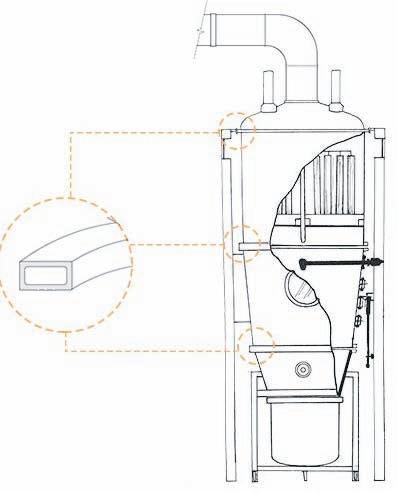
Factors to consider while selecting inflatable seal
◆

Working condition like temperature, pressure and working cycles ◆ Height, width and shape of profile as per the door structure since various shapes and sizes are available ◆ MOC that depends on applications and working conditions
Features of inflatable gasket
◆ It helps to p revent any
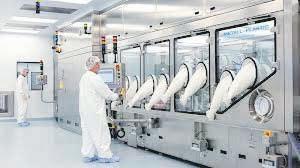
Ami Polymer Pvt Ltd is an eminent player in silicone market with its expertise of 25 years, a home-grown company, which is fulfilling the demands of gaskets, tubing,
Ami Polymer Pvt Ltd provides its Imaseal®inflatable gaskets to their major Fluid Bed Dryer Manufacturers
Glatt Systems, ACG Pharma, Alliance Machine, Gansons, Anchor Mark, Gea Process, Mark Maker, Sunsai, etc.
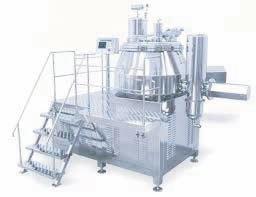
December 2022 EXPRESS PHARMA 107 PHARMA PULSE
Imaseal®gaskets are made up of advanced-grade silicone rubber which conforms to FDA21 CFR 177.2600 for the food grade criteria
The sealing solution for pharma,food and engineering industries Inflatable gasket fitting in FBD machine F R
Fluid Bed DryerSteriliser Isolators/Glove Box Rapid Mixer Granulators FurnacesNuclear Door Seals
Imaseal®-
Applications
pharm-a-spheresTM: Aversatile excipient for multiple unit drug deliverysystems
Divya Prabhudesai and Dr Heeshma Shah,Technical Services Department,Signet Excipients, Mumbai elaborate on pharm-a-spheres (Sugar spheres) that are specifically designed for use in immediate and modified/sustained release pharma formulations as neutral cores/carriers/substrates for loading of APIs
Oral drug delivery has always been the ideal route of administration amongst other routes owing to better patient acceptance and compliance. Earlier, tablets and capsules have been the most preferred dosage forms of drug administration. Pharmaceutical invention and research are increasingly focusing on drug delivery systems which enhance desirable therapeutic objectives while minimizing the side effects. Recent trends indicate that multiparticulate drug delivery systems are especially suitable for achieving controlled or delayed release oral formulations due to various advantages. The release of drug from multiparticulate drug delivery systems is dependent on a number of factors including the carrier/neutral cores used for drug loading and the amount of drug contained in them. 1,2
Pellets provide tremendous opportunities for designing new controlled and extended release oral formulations, thus extending the frontier of future pharmaceutical development.
Multiparticulate drug delivery systems are oral dosage forms comprising of small discrete particles having identical release profile and form a therapeutic dose.3 Formulation of drugs in multiple-unit dosage forms, such as coated pellets (Figure 1) filled in capsules or compressed into tablets, offers flexibility in terms of target release properties. Due to the development of industrial technologies (equipment, processes) and the use of new excipients, layered pellets are now available not only in capsule dosage form, but also in suspensions, compressed form,
or even in the form of orodispersible tablets.4 The safety and efficacy of these formulations is higher than that of other dosage forms.5 Additionally, pellets are less susceptible to dose dumping thus lowering the risk of side
Figure 1: Structure of sustained release pellet with sugar sphere core (grey),active substance layer (red) and film coating (blue)
effects.6 The total drug dose gets divided into multiple units of desired dose strengths without formulation or process changes.7 Hence, failure of few units in the system would not significantly impact the dose, unlike single-unit system.3
Pellets are less dependent on gastric emptying than single unit systems.8 They maximize the drug absorption, minimize local irritation of gastro-intestinal mucosa by certain irritant drugs, reduce peak plasma fluctuations and minimize potential side effects with improved drug bioavailability. They offer more suitable fabrication of formulations with acid sensitive drugs like Erythromycin.7 A variety of drugs can be formulated into multiple-unit dosage forms e.g. Proton Pump Inhibitor (PPIs), anti-hypertensive, anti-depressant, anti-diabetic, anti-muscarinic, etc.
About
many is a 60-year-old medium sized family owned company specialized in the manufacture of dragees for pharmaceutical, nutraceutical and food industry. They manufacture approximately 6,000 tonnes of dragees per year which includes pharma-spheresTM (sugar spheres) for pharma, globuli sacchari for homeopathy and sucrose/lactose globuli, sugar-free globuli (xylitol or xylitol/calcium carbonate) and globuli according to Hahnemann’s recipe (sucrose and starch) for specialized applications. They have a dedicated facility complying to the requirements of IPEC-GMP guidelines for bulk pharmaceutical excipients and ISO 9001 quality management system.
pharm-a-spheresTM (Sugar spheres) are spherical, multiparticle, neutral solid units or non-pareil seeds. These are specifically designed for use in immediate and modified/sustained release pharmaceutical formulations as neutral cores/carriers/substrates for loading of active pharmaceutical ingredients (APIs). pharma-spheresTM are available in whole spectrum of diameters ranging from 90 and 2000 μm. They are free-flowing in nature and intended mostly for oral administration.9
pharm-a-spheresTM – An in-depth understanding
sugar spheres also contain some amount of water which is permanently bound to starch molecules and is required for the binding properties of sugar spheres. As this water is not in free state, it does not interfere with actives susceptible to hydrolysis.9

Unique features of pharm-a-spheresTM
1. High mechanical stability: Wurster fluidized-bed coating process exposes the pellets to high mechanical stress. However, pharm-a-spheresTM are robust and have high mechanical strength. They do not disintegrate and exhibit attrition during handling, coating and other production processes.11 Friability is calculated in line with Ph. Eur. chapter 2.9.41 (method B: oscillating apparatus). The friability values are as low as less than 1.2%.10
poured in bulk.9
3. Outstanding microbiological quality: The raw materials i.e. sucrose, maize starch and water used in manufacturing of pharm-a-spheresTM are of excellent quality and purity. The water activity (aw value) of final spheres is always lower than 0.65 which prevents any microbial growth.10, 12
4. All-natural ingredients: Sucrose and maize starch are natural substances, also present in our daily food. They are digestible and biodegradable.
Hanns G.Werner
Hanns G. Werner GmbH + Co. KG, based in Tornesch, Ger-
Sugar spheres are the most common carrier pellets used in pharmaceutical industry. pharm-a-spheresTM are geometrically defined agglomerates composed of sucrose (80.0 –91.5%) and corn starch (8.5 –20.0%) using different processing conditions.
Besides sucrose and starch,

2. High degree of sphericity: pharm-a-spheresTM present a high degree of sphericity (almost equaling to 1) with smooth, non-porous surface which contributes to a precise layering and reproducible release of the API from final pellet. Figure 2 illustrates SEM photograph of pharm-a-spheresTM Due to spherical shape and smooth surface, pharm-a-spheresTM exhibit high flowability. Thus, there is no need to define angle of repose after being
5. Narrow, tailor-made, reproducible particle size distribution (PSD): The particle size is a vital prerequisite for uniform application of the active substance in subsequent coating. Calculating the surface-perinput quantity also depends on a uniform particle size, as well as a spherical shape. pharm-aspheresTM are available in broad spectrum of particle sizes ranging from 90-2000 μm [100 to 500 μm (microspheres) and from 0.5 to 2 mm (standard spheres)]. The particle size is often a critical quality parameter in the customer’s coating process. The various particle sizes of pharm-a-spheresTM offered to the pharmaceutical industry are listed in Table 1. 9, 10
The width of particle size distribution curve is crucial for estimating the risk of segregation and non-uniform behavior during coating. pharm-a-spheresTM exhibit lot-to-lot uniformity and reproducibility in particle size distribution.
Density is influenced by the particle size distribution and shape of the pellets. Understanding bulk density is important as it can affect the final fill weight of the pellet-based
EXPRESS PHARMA December 2022 108 PHARMA PULSE
Figure 2: SEM photograph of pharm-a-spheresTM
PHARMA PULSE
formulation in capsule shells during capsule filling process.9 pharm-a-spheresTM display a lot-to-lot consistency in bulk/tapped density. The bulk density ranges from 0.70 to 0.96 g/ml.
6. Worldwide acceptance and easy registration for regulatory drug application: pharma-spheresTM conform to the monographs of “sugar spheres” in USP/NF, Ph. Eur., ChP and JPE monograph for "sucrose starch spheres". A Type IV USDMF (17994) is also available.12 Production and testing are according to the IPEC GMP guideline.
7. Non-involvement of active ingredients in the forming process: The use of pharm-aspheresTM as neutral core for subsequent layering with API and sustained release excipients is a smart alternative to the manufacturing of API pellets. This minimizes loss of precious APIs, saves thermal and chemical deterioration of the API and allows starting with a defined surface area for reproducible coating.10
8. Chemically indifferent raw materials and no incompatibities: Water is the only solvent used in manufacturing process. No other organic solvents are used in the production of the pharm-a-spheresTM or their raw materials. Also, the raw materials are unlikely to present any incompatibilities with the active ingredients.9, 10
9. Competitive prices: These high quality pharm-a-spheresTM are supported with competitive pricing. The company capabilities allow delivery of desired quality product to customers as per the ordered quantities on timely basis.
10. More than 30 years of experience: The manufacturing and testing of pharm-a-spheresTM for numerous customers guarantee the best solution for end application. A large inhouse laboratory well equipped with sophisticated instruments like Camsizer provides speedier release and accurate results even of special parameters.
Applications
Sugar spheres are widely used in pharmaceutical industry for sustained or extended-release
Table 1: Different grades of pharm-a-spheresTM along with their particle size range
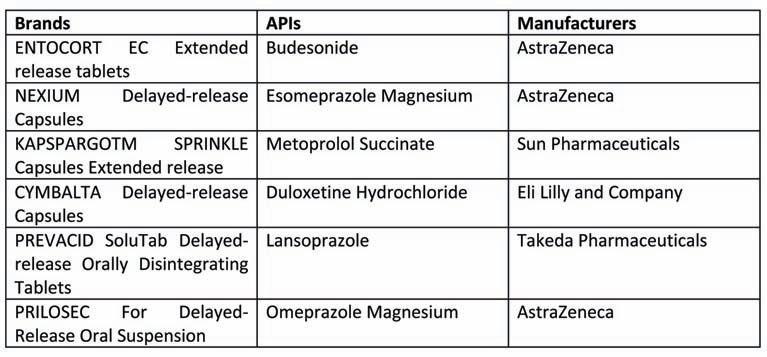
ready-to-use starter pellets for drug layering techniques. Sugar spheres are extremely robust and chemically inert, making them an ideal carrier system. The raw materials i.e. sucrose and maize starch are widely available in pharmaceutical quality. Both these ingredients are safe, digestible and biodegradable and meet customer’s expectations for clean label.
pharm-a-spheresTM manufactured by Hanns G. Werner are available in multiple, narrow particle size ranges offering advantages in terms of high sphericity, robustness, low friability and lot-to-lot consistency. These are multi-compendial and also included in the FDA Inactive Ingredients Database
tended release drug delivery system and multiparticulate system. World Journal of Pharmaceutical Research 2015; 4 (8); 724-747.
3. Patel N, et al. Multiple unit pellet system (MUPS technology) for development of modified release fast disintegrating tablets – A review. Journal of Pharmaceutical and Scientific Innovation 2017; 6(3); 50-56.
4. Kallai-Szabo N, et al. Review on starter pellets: Inert and functional cores. Pharmaceutics 2022;
kinetics. Pharmaceutical Technology Europe 2006; 18(4); 35-41.
10. Technical Brochure of PharmA-Spheres® – 10 reasons why you should decide to choose pharm-aspheresTM sugar spheres. Germany: Hanns G. Werner GmbH + Co. KG.
11. Hug J. (2015, November 10). 3 advantages of sugar spheres in pharmaceutical tablets [BEE International Blog].
12. Sidwell R, et al. (2017). Characterization of inert cores for multiparticulate dosage forms. In Ra-
formulations. The active is loaded on the neutral core pellets followed by coating with a release modifying polymer. The active coated pellets can either be filled into capsules or compressed into tablets (MUPS) as depicted in Figure 3 Customized release profiles (pulsed, sustained or delayed) can be achieved by careful selection of polymers. Drug release from drug-layered inert spheres coated with functional membrane typically follows diffusion or controlled erosion mechanism. Complex drug mixtures or different drug moieties chemically compatible or incompatible simultaneously can be developed as a single dosage form with pharm-a-spheresTM to target different release profiles at the same site or different sites in the gastrointestinal tract. It also offers flexibility in combining different pellets with different release profiles and co-administration in order to get controlled release profile.16 Few of the innovator brands containing sugar spheres as neutral cores are listed in Table 2 13

Conclusion
Due to several advantages, corebased pellets are used in a variety of formulations containing numerous pharmaceutical active ingredients. The cores have several particle size fractions in a narrow range prepared for the pharmaceutical industry as
Table 2: List of innovator brands containing sugar spheres as neutral cores
(oral capsules and tablets).10 Werner’s technical capabilities and experience allows manufacturing of special particle size range to cater customer specific requests for various controlled and extended release formulations. The retest period is 24 months from the date of manufacturing. Several stability tests according to ICH have been carried out and stability of five years is established under controlled storage condition of not more than 40 °C.
To get more information on pharm-a-spheresTM, kindly refer to http://www.pharma-spheres.com/ or www.signetexcipients.com
References
1. Author, N. B. (2015). Multiparticulate drug delivery systems. Alliance Institute, ydeHyHyderabad.
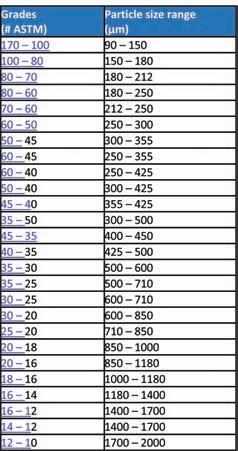
2. Shah S, et al. A review on ex-
14 (1299); 1-30.
5. Jawahar N & Patel N. Multi unit particulates systems (MUPS) – A novel pellets for oral dosage forms. Journal of Pharmaceutical Sciences and Research 2012; 4 (9); 1915-1923.
6. M R D, et al. A Review on Pelletization Techniques. International Journal of Research in Ayurveda and Pharmacy 2020; 11 (3); 143-147.
7. Sirisha K, et al. Review of pellets and palletization process – A multiparticulate drug delivery system. International Journal of Pharmaceutical Sciences and Research 2013; 4 (6); 2145-2158.
8. Kandukuri J, et al. Pelletization techniques for oral drug delivery. International Journal of Pharmaceutical Sciences and Drug Research 2009; 1 (2); 63-70.
9. Werner D. Sugar spheres – A versatile excipient for oral pellet medications with modified release
jabi A. (Ed.), Multiparticulate Drug Delivery (pp. 5-35). New York, USA: Springer Nature
13. Sirisha K, et al. Review of pellets and palletization process – A multiparticulate drug delivery system. International Journal of Pharmaceutical Sciences and Research 2013; 4 (6); 2145-2158.
14. Shah S, et al. A review on extended release drug delivery system and multiparticulate system. World Journal of Pharmaceutical Research 2015; 4 (8); 724-747.
15. Upadhyay S, et al. Recent advances in pellets and pelletization techniques for oral sustained release drug delivery. World Journal of Pharmaceutical Research 2015; 4 (3); 629-656.
16. Yadav N & Verma A. Pharmaceutical pellets – A versatile carrier for oral controlled delivery of drugs. Indian Journal of Pharmaceutical Education and Research 2016; 50 (3); S146-S160.
December 2022 EXPRESS PHARMA 109
Figure 3: Capsules and MUPS containing polymer coated pellets
Dissolution to permeation to bioavailability:
In case of drug product development, in vitro dissolution and/or release testing is of critical importance, as it facilitates prediction of in vivo product behavior. In case of generics, following the in vitro release testing, in vivo studies need to be performed showing bioequivalence of the test product to the reference product, especially mandatory in case of products containing BCS class II and IV drugs. In order to prove bioequivalence, there should be no significant differences in the bioavailability between the two products. The key factors controlling the in vivo bioavailability are drug dissolution and permeability. A dissolution test facilitates understanding of drug product or formulations in terms of API solubility in the presence of different excipients (in the formulation or dissolution media), variable pH and ionic strength of the dissolution media. However, negligible insights are obtained on how the above mentioned factors affect API permeability.
A latest innova tion - Dissoflux TM , is an R&D tool to measure dissolution rate and permeability flux simultaneously, which can aid rank-ordering of formulations based on both solubility and permeability. Dissoflux TM consists of a permeation chamber (Fig 1) , which holds the permeation sink buffer (PSB). The permeation compartment, also called as acceptor compartment and dissolution media (donor compartment) is separated from a biomimetic membrane mimicking the
gastrointestinal tract (For example: PermeaPad® membrane, InnoME and BioWise membrane, BioWise Science LLP). One type of biomimetic membrane involves a membrane substrate used as a solid support for retaining the phospholipid solution. The lipid activated membrane mimics the gastrointestinal lining of the body. An oral dosage form is
placed on the dissolution vessel. Drug concentration is monitored in the donor media and in the acceptor compartment to find out the dissolution vs. time profile (a) or drug permeated vs. time profile (c), respectively.
Dissoflux TM can also be used as a preliminary tool for selection of new formulations to be subjected to clinical trials on human subjects. One
example is a study that was performed on an approved marketed solid dosage form and a new generic formulation of a BCS class IV drug on dissoflux TM. The drug dissolution from the new formulation failed in the f2 factor (similarity factor; f2 value – 42.8) comparison with the innovator product. However, the test formulation and RLD showed a similar permeation trend.
The maximum permeation (ug/cm2 with 90% CI) from the test formulation was within the bioequivalence limit of 80-125% and in parallel to the in vivo behavior. This is an interesting example showcasing the role of permeation of the formulation in bioavailability and can bridge the gap for better predictions for bio results.
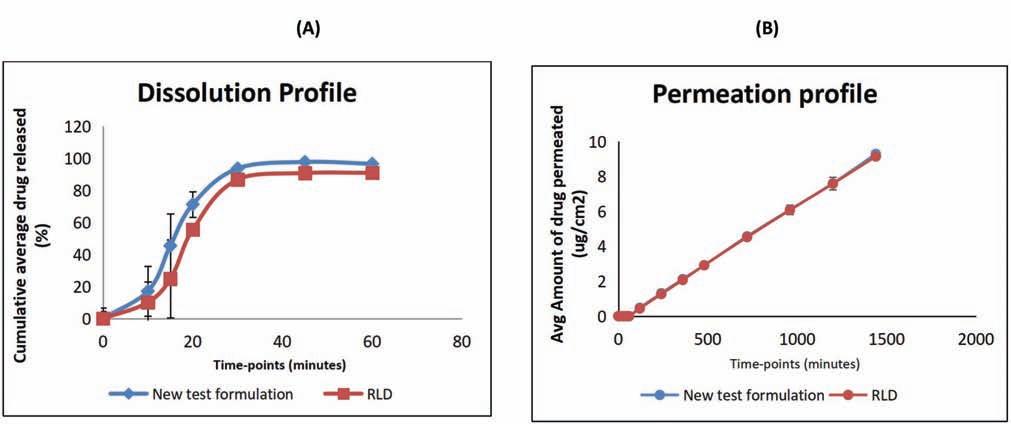
By conjunction of the dissolution and permeation aspects of the test formulation, it can be a useful tool to biostatistics scientist to predict the bioavailability of the product. The dissoflux TM test increases the chances of bio success while keeping costs economical and saves time compared to clinical studies. While this tool is a useful predictive instrument for all BCS Classes of drugs that are passively diffused, it is especially useful for BCS class 2 and 4 drugs.
Figure 2: From the dissofluxTM study,the drug concentration is monitored in the donor media and in the acceptor compartment to find out the dissolution vs.time profile (A) or drug permeated vs.time profile (B),respectively
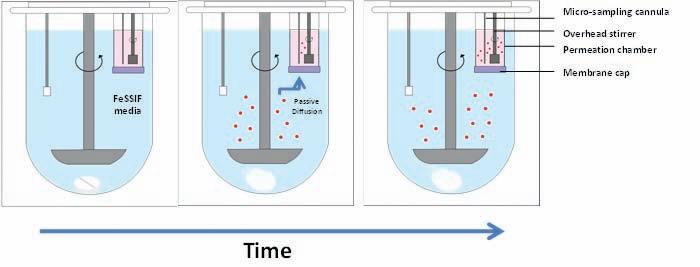
EXPRESS PHARMA December 2022 110 PHARMA PULSE
Connecting the dots!
to measure dissolution rate and permeability flux simultaneously,which can aid rank-ordering of formulations based on both solubility and permeability
Archana Pokkalath,Research Associate; Milindkumar Rajput,Application Scientist; and Aditya Marfatia,Director from Electrolab India,enlighten about DissofluxTM,an R&D
tool
Figure 1: Schematic representation of a dissolution-absorption apparatus (DissofluxTM)
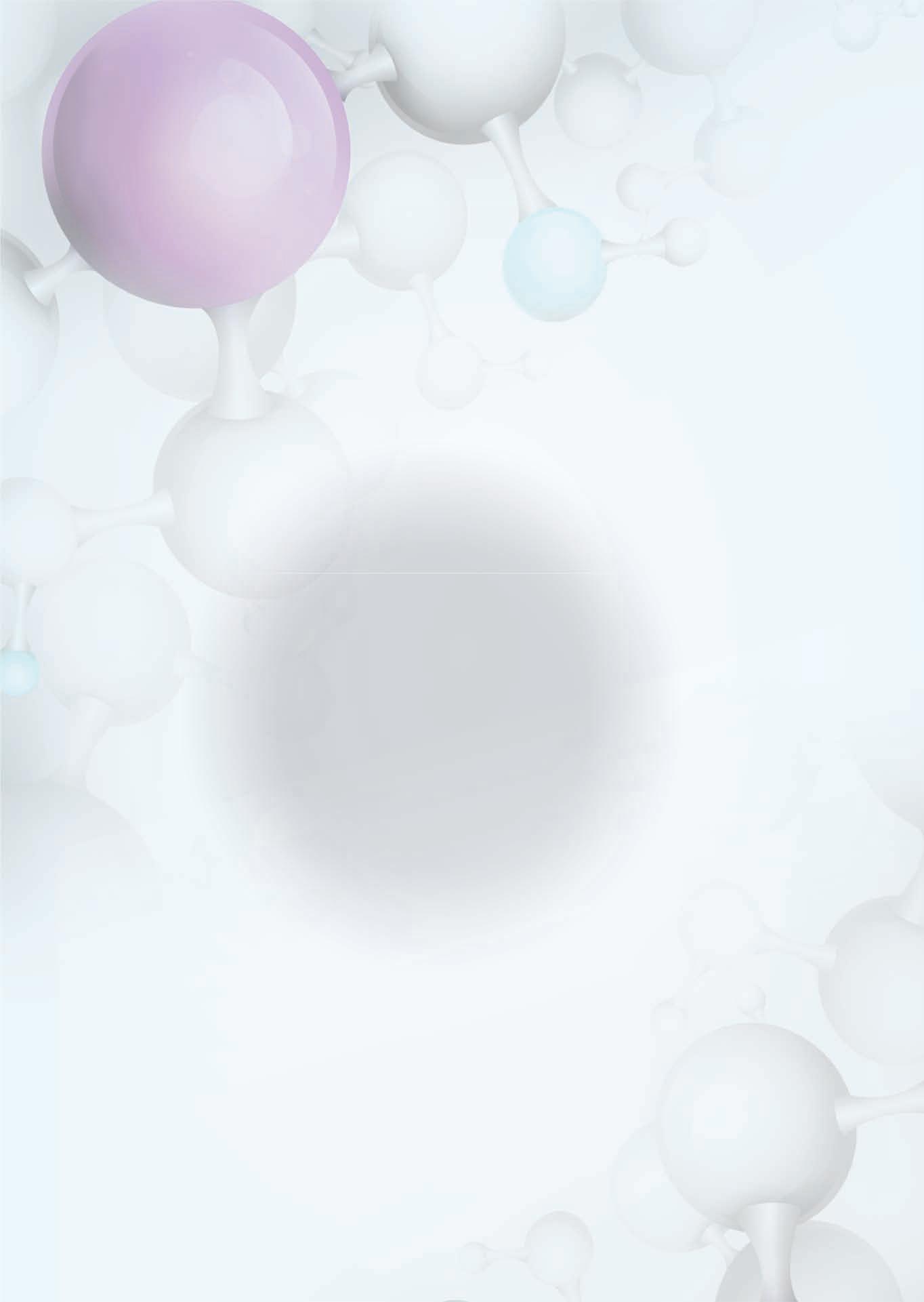
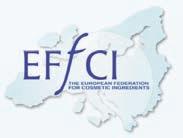
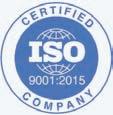


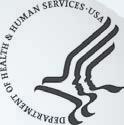




www.idealcures.com +(91)-(22)- 4268 8700 Ideal Cures ‘High Performance Aqueous Film Coating System’ • 50% process time savings when compared with traditional cellulosic coatings • Three fold increase in adhesion properties with optimum finish • Doubled production output with cost and time saving REGD.WITH RNI NO.MAHENG/2005/21398,POSTAL REGD.NO.MCS/164/2022 – 24,PUBLISHED ON 5TH EVERY MONTH, POSTED ON 9TH,10TH,AND 11TH EVERY MONTH POSTED AT MUMBAI PATRIKA CHANNEL SORTING OFFICE,MUMBAI – 400001































































































































































































































































